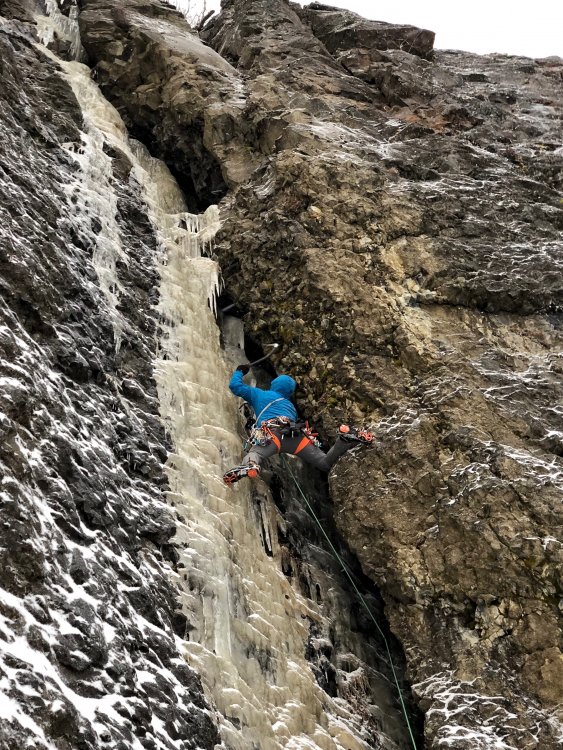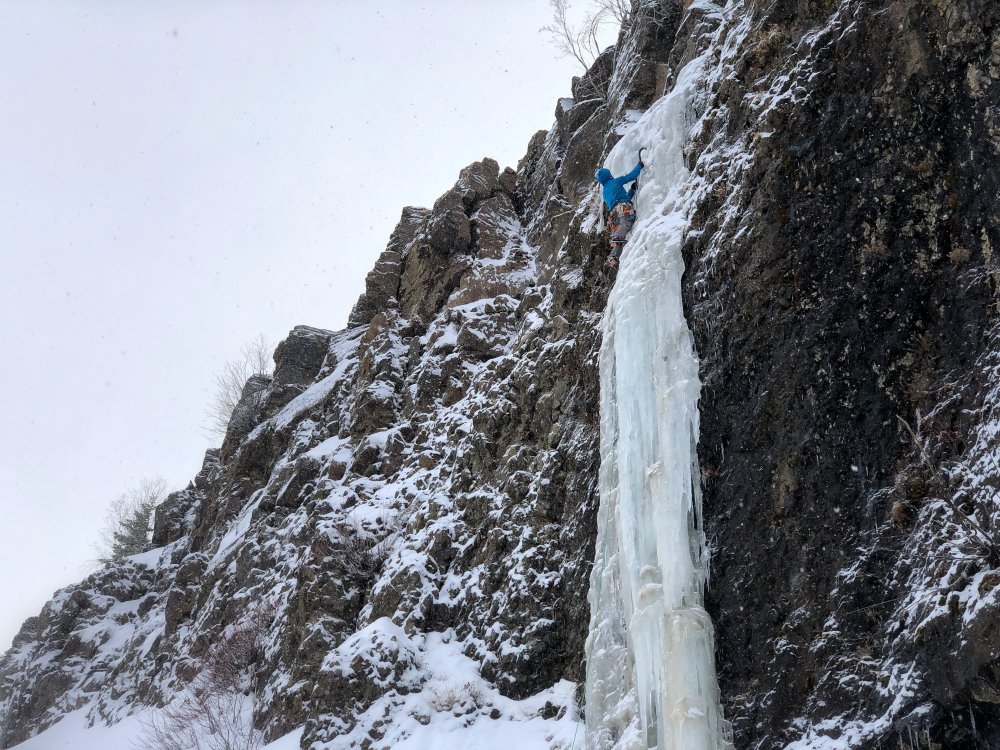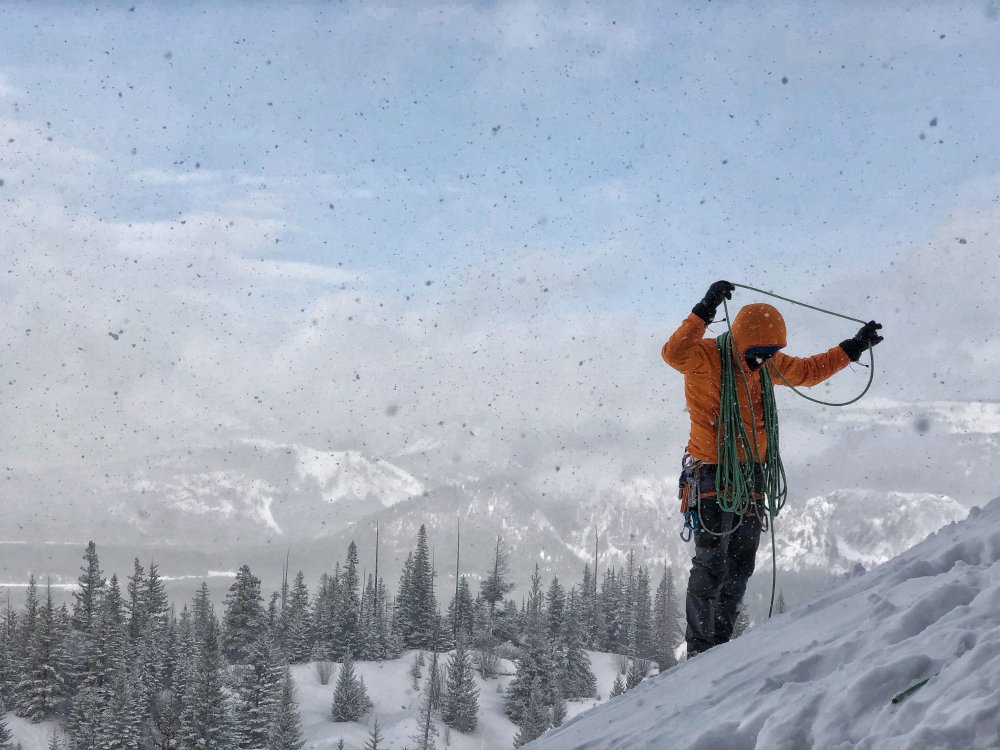Search the Community
Showing results for tags 'first ascent'.
-
Trip: Phantom Peak, Northern Picket Range - West Ridge IV 5.7+ aka "WHAP" Trip Date: 07/30/2021 Trip Report: "We have a problem" stated the leader of pitch 6. He had encountered an airy and cruxy 4’+ gap in the ridge and simultaneously observed a fresh plume of wildfire smoke erupting in the distant valley that marked the return home. His partner – who could not see him or his immediate problem, but could see the smoke – shouted “What?”, seeking clarification regarding which of many possible problems they had. The leader re-shouted “WE HAVE A PROBLEM”, apparently as if over intervening seconds, a realization intensified that perhaps this was a more general statement, one readily applied to anybody that comes to this place. The first step is acceptance... They quickly concluded that bailing halfway up the ridge would not really impart any advantage to dealing with the new (to be named) Bear Creek Fire, so continued tackling the climb. The pitch 6 problem, a long span across a hundred-plus-foot gap in the ridge, was easily the hardest technical move on themostly 5.7+ route—bound to be a “classic of the range”, as oft proclaimed at each belay. The route takes the right hand skyline to the summit spike well left of center (link to an album w/ annotated pic): The leader used a nut and a sling to create a handhold for tension and a more certain move across the gap. The second on this pitch cleaned the gear, and with the benefit of long legs and a top-rope, made the balance-y stem across the gap and the next move across – probably a V0 or V1 boulder move (5.10ish), depending on leg length. Two pitches later the duo topped out on a tower and rappelled approx. 100' into a notch. Pitches 8 through 10 were on generally solid rock with a pleasurable position. A total of 10 pitches of roped climbing gave way to ~400' of soloing to the summit ridge and traversing a sharp ridge to the summit -- exhilarating. The untimely arrival of the Bear Creek fire compelled us to forego other plans for the area and head homeward. As it turns out, a rainy afternoon through the next morning would have largely scuttled those plans anyway. That same weather pattern allowed us to exit via our entry route, as the fire was a bit north of our return route--thankfully, as the other exits would have involved an even more unsavory amount of distance and logistics. Folks with a certain taste might opine that we picked a plum with this route, as it offers mostly solid rock, modest vegetation, and enjoyable movement. Some high-hanging fruit is rotting on the vine, but this one was perhaps only a little overripe. More pics below. Looking up at part of pitch 1 and a fair bit of the rest: Rolf on pitch 4: Looking down pitch 6 at a chimeric rat-beaver, a fin on the ridge, and Mt Despair in background left: From the summit ridge, a nice view of Crooked Thumb and its subpeak Ghost, w/ the many peaks of Challenger in near background: Invigorating soloing on the summit ridge: From Perfect Pass, the fabulous Baker River drainage, filled with smoke: One in the party -- not gonna say who -- repeatedly urged a fire exit of the northern pickets via the brushy Baker River, convinced that his charm and/or good looks (yeah, after two days of bushwhacking) would score us a ride back to our car. The other was deeply skeptical of this strategy. The return along Easy Ridge under an increasingly smoke-veiled sun; don't worry, if you tire of loose talus and scree, many more paranormal modes of travel await: Here's a link to an album with more pics. Summary: Rolf Larson and Eric Wehrly establish a new route on Phantom via its West Ridge, aka We have a problem IV 5.7+. 10 pitches plus soloing. An obligatory John Scurlock photo of the ridge, extending toward the viewer: Gear Notes: Standard alpine rack. Also made use of tri-cams from fingers (black, pink) to thin hands. Approach Notes: Find the larger truth of the Easy Ridge approach – easy only in the middle – or take other long options. Making liberal use of granny gear with heavy-ish packs, over Wed/Thurs we took roughly 20 hours from Hannegan Pass TH to a moraine camp under Crooked Thumb/Ghost Peak. Generally budget 2 days, +/- a half day.
-
Rolf Larson and I climbed a line on the north face of Mt. Buckner on Sunday the 20th. Friday, after bivying at the trailhead, we skinned up the road and started up the trail to Boston Basin. Coincidentally a group of 3 skiers were off to ski the north colior on Buckner that same morning. Thrashed through the brush and above tree level by early afternoon up to within about 800 feet of the Sahale Boston col that day. Skiers continued on to make the traverse to Boston Glacier. Next day some weather moved in and vis was shitty at the col. We began the traverse. Good neve, exposure, heavy packs. Traverse, Down the Boston Glacier in light north face pow and across to the north face of Buckner that day. Scoped lines. Line we originally intended to climb looked too filled in with snow. Another line caught our eye that started with an ice flow then went into some snow and ice runnels. There was a direct start to this line that just looked too much like powder snow on rock. After another cold night in the Bibler, Rolf roused early with his usual sunny disposition and made a brew while I kept my head stuck in my sleeping bag. We trudged up to the ice fall. After some fucking around I finally started up the ice - a fun pitch with a decent steep section. From there we continued up steep snow and fun aesthetic mixed climbing. Here's a bad photo but gives an impression of the climbing. The neve was superb. Everything that looked like powder snow from the glacier was thick thunker neve. We realized we should have taken a steeper line or the direct start. About half way up the face we were able to look down at the direct start and it looked rad - with a classic ice and neve filled chimney with decent rock pro. What little girls we were for taking the conservative approach. More fun climbing led to the of the ridge and a classic ridge traverse with exposure and amazing views of the North Cascades in winter led to the summit. We paused in the sun and descended the north coliour back to the Bibler. It was only 1:30 by the time we got back to camp, so we made a brew and I told Rolf I was over spooning with him in the Bibler let's go home. We packed our shit and bolted. The skiers who had skiied the north coliour the day before had been farming the north facing slope from the Boston Sahale traverse notch down the glacier that day and had kicked a bitchin skin highway back up. Thanks skiers!! Got down to truck by 8:00 after a long exhausting day and had a beer. Named the route "Copa Cabana" after a friend who spent his President's Day weekend kiteboarding and drinking margaritas in Mexico with bikini babes instead of the Rolf Larson lovefest of freezing ass and killing ice. Shot of the route from bro's arial photo page: The Copa Direct remains. If this high pressure holds someone should go crush!!!
-
first ascent [TR] Mongo Ridge-W.Fury F.A.- VI-5.10- 8/28/2006
wayne posted a topic in North Cascades
Climb: Mongo Ridge-W.Fury F.A.- VI-5.10- Date of Climb: 8/28/2006 Trip Report: Quicky tr to tell about an amazing new route done on West Fury . The SW buttress of Fury proved to be very challenging, but was done in a 5 day solo effeort . The Trip Report is developing as I have time to write it, It is now located half - way down this page, Enjoy and Thanks, Wayne Gear Notes: lots(no porters) -
Trip: Humpback Mountain - Humpback Flows. Possible FA's on three ice routes - Champagne, 1p WI3, 65m. Don’t Forget the J-Thread, 2p WI3, 80m. Martinelli, 1p WI4, 25m. Trip Date: 02/07/2019 Trip Report: [TR] Humpback Flows, Possible First Ascents: Champagne, 1p WI3, 65m. Don’t Forget the J-Thread, 2p WI3, 80m. Martinelli, 1p WI4, 25m. Climbers - Raider Rob, Caleb Mallory, Alex Stolpovsky, Jessica Sagnella, Justin Pucci. View of Humpback Flows from I-90 Exit 47. Introduction: On my way back from ice climbing in Hyalite two weekends ago, my friends and I spotted what looked like ice up on the North Face of Humpback Mountain from westbound I-90 at Exit 47. I added this to my list of areas to check out and drove on… A few days later, my friend Chris Patrick posted a picture of the same thing on Facebook and several of us got into a conversation surrounding whether there was anything worthwhile up there. Thursday rolled around and the conditions appeared to be perfect, so my partner Jessica Sagnella and I decided we’d give it a try. Friends Raider Rob, Alex Stolpovsky, and Caleb Mallory were also planning a trip, so we decided to team up and lay siege to Humpback Mountain in the hope that we’d find something worthwhile to climb. We got to the Asahel Curtis parking lot off of Exit 47 at 7AM, geared up, and began the approach. There are no trails up this side of Humpback so it was a fun and interesting trailblazing and bushwhacking exercise to get to the ice. Climbing Area Descriptions: To get to The Steps or Hidden For Your Pleasure, ascend the avalanche path directly. This approach is approximately 600-800 vertical feet of steep no-fall zone snow up to 60 degrees, so please assess conditions as you go and use your best judgement. About midway up the avy path, you’ll see The Steps on the left and now the full lower tier of Hidden on the right. At this point, it becomes clear that The Steps is considerably steeper than the approach photo represents. It consists of a 15-meter wide gully with two nearly-vertical 5 to 8-meter ice steps separated by a snowfield. The top out appears to be protectable via anchoring to a large tree directly up the center of the gully. To get to The Sheet, traverse right from the tops of the bushes with very little additional elevation gain, but be weary of the final portion of the traverse to the base of the ice, as it is a no-fall zone on steep snow. The Steps Area from half way up the avy path. The Sheet Area from the lower boulder field with Champagne highlighted on the left. The Hidden For Your Pleasure Area showing the lower and upper tiers and the two lines we put up. The Sheet Area Champagne – WI3, 65m, possible FA by Alex Stopolvsky, Caleb Mallory, and Raider Rob. Avalanche danger: Serious. Approach: Traverse right from the tops of the bushes with very little additional elevation gain, but be weary of the final portion of the traverse to the base of the ice, as it is a no-fall zone on steep snow. Route: Climb the major flow on the right along the left side of the slab. There is a possible variation starting left up the first step and then traversing to the far right to what looked like fat ice. For a top belay anchor, sling the horn on a large slab just left of the route at the end of the pitch. Another 20 meters above the anchor is a protected cave with plenty of level ground. Descent: Rappel from the anchor or from here, you can get to the right side of the lower tier of Hidden For Your Pleasure by traversing 60-degree snow through the trees climbers left of the cave. Looking up Champagne from the base. Caleb following Alex on Champagne. The belay horn at the top of Champagne. The entrance to the flat and comfy cave another 20m above the top of Champagne. The Hidden For Your Pleasure Area Don’t Forget the J-Thread! – 2p WI3, 80m, possible FA by Justin Pucci and Jessica Sagnella. Avalanche danger: Serious. Look for signs of wind slabs as you ascend the lower section of the approach and loose dry surface snow in the upper section. Approach: Climb 50 to 60-degree snow up the avalanche path to the belay station tucked away in a shallow cave under the large rock outcropping on the left. Route: P1 - WI2+/3-, 40m: Start up climbers right from outside of the belay cave on a short step of near-vertical ice. Continue up the ice steps from here and look for spots to place stubbies (at best) as you progress. There are a couple of variations here depending on ice conditions and how you’re feeling. The left side of this line is thin and stepped with a couple of mixed moves off of a large flake (WI2+/3-) and the right side has interesting and fun blobs (WI3-/3). Be careful of knocking down the large, dinner table-sized ice sheets that look more like “snow patches” from below. Reach an obvious and wide shelf where you can build a screw anchor on the ice blobs and prep for the next pitch. P2 - WI3, 40m: Start up the blobs that make up the top of the belay shelf onto a small, but steep snowfield. You’re aiming for the curtains directly above you. Again, there are a couple of variations – the main line has a small slab of ice leading to a steep gully on the left or a steeper step with a large bulge at the top on the right. Both variations lead to a final 5-6m curtain of beautiful and featureless ice. The top-out can be tricky in the snow above the curtain. Anchor off of the trees or on the ice bulge above. Descent: Rappel both pitches via threads. We used naked threads on both raps. Looking out from the belay cave at the start of Don't Forget the J-Thread. Justin getting started with the first screw above the first step on p1. Justin reaching the belay ledge at the top of p1 on Don't Forget the J-Thread. The characteristic blobs toward the top of p1. Jessica getting ready to follow on p1. Looking up p2 of Don't Forget the J-Thread. Left variation on p2. Right variation on p2. A naked thread in beautiful and clear ice at the top p2. Martinelli – WI4, 25m, possible FA by Alex Stopolvsky and Caleb Mallory. Avalanche danger: Serious. Look for signs of wind slabs as you ascend the lower section of the approach and loose dry surface snow in the upper section. Approach: Climb 50 to 60-degree snow up the avalanche path to the belay station tucked away in a shallow cave under the large rock outcropping on the right or traverse climbers left through the trees from a top-out on The Sheet area. Route: This is the obvious line to the right of Don’t Forget the J-Thread and runs right up the middle of the wall. Climb a brief section of steep snow to the base of the wide ice sheet. Climb the sheet toward the small pine tree above. The top-out can be tricky in loose snow. Sling the small pine tree at the base for an anchor. Descent: Rappel off of the small pine tree (we left a sling on it). Caleb following Alex on Martinelli. Summary: The stoke was high on this trip and I have to say that it ranks as one of the best days I've had in the alpine in a while. Not only did we have an awesome adventure with friends, but it resulted in finding some amazing ice climbing that is so close to home! Between the three areas I have discussed in this report, we believe there is potential for another 15-20 lines to be put up depending on creativity and the conditions. The Sheet has lots of fat ice with plenty of interesting features to play around on. The Steps appears to have at least two or three obvious lines to the anchor trees at the top of the gully. The lower tier of Hidden offers from mild WI2 to thin and delicate WI4 with some mixed climbing potential too. Finally, the upper tier of Hidden is a real gem...some of the most beautiful and clear blue ice I've seen anywhere. It can be combined with some of the lower pitches as we did on J-Thread or you can climb to it, set up home base and choose which of the gullies, curtains, and pillars you want to send. Who's ready to get some?! Gear Notes: We brought 70-meter ropes, screws from 10-21cm, a set of tricams, and a few 24” pickets. While we didn’t use the pickets, I could see them being handy for the steep upper sections of the approach or on a couple of the steep snowfields depending on the snow conditions and how comfy you are in that kind of terrain. There were a couple of spots for tricams that I found, but didn’t end up using them. Aside from when we had the luxury of thick anchor ice, 10’s and 13’s were the screws of choice. An avy kit is absolutely mandatory in this area. Approach Notes: From the Asahel Curtis parking lot, follow the forest road past the gate and up to the hairpin turn. Go west beyond the turn up a rougher bit of road for another few hundred feet until you see a big tree stump (4-5 feet in diameter) on the hillside and enter the forest. Now just go up! After 400 vertical feet of steep moss, devils club, and other fun bushwhacking, you’ll hit the Palouse to Cascades State Park Trail. Use this as a good stop for layer checks and snacks and then continue up through another 600-700 feet of the same stuff until you hit a boulder field. Stay west of the obvious and large gully on climbers left and you’ll break out of the trees and into the lower basin where you’ll start to get a view of the ice. The next 200-300 vertical feet is on snow covered boulders and begins to steepen as you hit the big patch of bushes above the trees. From the top of the bushes, the terrain steepens substantially. You’re now standing at the base of a large avalanche runout from above and need to carefully assess conditions from this point forward. Looking around you from left to right, you’ll see a large rock wall followed by The Steps – a steep, two-step ice gully, then a small bit of ice way up high that is the second tier of Hidden For Your Pleasure, and finally, on the far right is The Sheet, a wide slab of ice topped by a steep snowfield. In total, the approach from the parking lot covers about 2200 vertical feet over one mile of ground distance. We hit this in perfect bluebird conditions…clear skies, temperatures in the teens, a slight breeze, and with very little snow on the ground down low. Once we got into the upper sections of the approach near the ice, the snow ranged from kick-steppable styrofoam to an icy crust perfect for fast mid-dagger climbing with patches of softer and deeper powder that allowed for kicking out a bit of a rest stop.
- 12 replies
-
- 5
-

-

-
- first ascent
- snoqualmie ice
-
(and 2 more)
Tagged with:
-
Trip: Pistol Boulders - The North SnowfedScrubBeltMossEatingChossFeedingLowball Arete (post- AND pre-break Trip Date: 05/10/2021 Trip Report: (All dates are approximate) Salutations, rotting-material-disposing-of umbilical creatures. A few things about myself (Daniel) and my PiC {Partner in Choss} (Trevor), before we begin. Things I am not: A competent boulderer, an experienced climber, someone who has climbed at Index more than twice, someone who has climbed at Index other than rope soloing more than zero times, or legally able to buy alcohol. Things I am: Full of youthful vigor, a man with an unhealthily high tolerance for wielding the mighty Brush & Hammer while inhaling mud and/or moss dust and/or broken steel bristles and/or droplets of Trevor's sweat, a lopsided brain-carrying individual who cannot let a day go by without organizing some click-and-drag meaningless 'net site/endlesspatiently correcting those sore souls who are Wrong and Portray There Wrongness on the Interwebz, and able to consume alcohol (illegally.) Things Trevor is not: That Into Bouldering. (Hast anyone heard of a legendary figure known as Trad Princess?) Things Trevor is: Really Into Choss and Lowballs. Those of you who know Trevor (Rad) can fill in the rest in yer heads. Well, there's bouldering on I-90 now. (middle fork and the pass) Erk. Bouldering that isn't '''''''''''''''''secret'''''''''''''' enough to post on Youtube and discourage others from finding it. (Deception Glade / Far Side boulders) K. What we've done is double the number of boulders in the North Bend area, with a 30min (contrived [aLl cLiMbinG Is coNtrIveEd]) approach (better than the Gold Bar slog) and a much closer drive than the Bavarian Granitodise or the All-Arete Granodiorite Seep Road Hike Festival. What's the downside, you ask. (Or rather, you ask, 'why should I care.') Well, they're certainly smaller (and can only get smaller), dirtier (but will get cleaner) and lower quality (lowball lovers unyte) than the aforementioned Leavenworth or Gold Bar. There's plenty of good beginner climbs plus some awesome harder ones............................... however. How did this come about, (I doubt that) you ask. June 2020. It all begins with the legendary Beered Rowe. Legends speak of the tru first name of the legendary Stone Gardens routesetter, the legendary Kyle. During his legendary rampage through Washington finding the one problem at every new area that required zero cleaning whatsoever, doing zero cleaning whatsoever, making a sic send vid, and posting the problem on Mtn Project, Beered wandered below the Gun Show cliff and named two legendary routes with legendary names (no, actually, really unimaginative): Inside Out V6 and Upside Down V2. He then posted them on Mountain Project. No one repeated them. (Apologizes to Kyle if he reads this.) Late January 2021. Trevor Puppy Lovr, as he is known on the Project of Mountains, also known as Trevor Taylor, heads up to Corona Crag to find it snowed in and sketch as h*ck. His insatiable desire to develop SOMETHING led him to the posting of the comment on Beered's page, inviting anyone to come help him clean the 'other boulders that need cleaning' below Gun Show. Jan 20. I, during my daily scan of new comments on Washington areas, happen upon Trevor's comment. Recalling my favorable impression of his Mtn Prj forum personality (turns out it was his real one), and desperately needing a real climbing partner, decide that being willing to muck about in muck would ingratiate the Puppy Lovr and trick him into thinking I was a climber worth actually climbing with. Jan 21. Trevor receives my message, and tentatively sets a date to explore. Feb 3. I show up (10 minutes late) to the Far Side parking lot. There's white stuff on the ground (g-g-g-gaddagagasp). I look past the extremely lanky unkempt fellow for Trevor. Oops. I hold back my kneejerk comment ('Your Mtn Prj avatar is very misleading as to your looks, probably cause it's mostly your puppy and wife, I'd fix that if I wert thou') and manage a hoarse 'Hey, you Taylor?' Hoarse because I sing with raucous vocal power while lone in the truck cab. Fortunately, he didn't hear my slipup. Off we go on the slippery trail. Fortunately for my throat, Trevor is happy to chat about (sport) climbing (is neither) adventures all over the Exits and 'that time I climbed Mile High Club with Rad and he had to TR solo the bottom half with a bucket of developing gear.' You didda WAT? I've stumbled upon a tru blu dirtbag, says I. (This impression was formed mostly due to his mullet and beard). We discover the boulders. I have no opinion, my few trips to Gold Bar been mostly for the use of bushwhacking rather than climbing. Trevor deems them 'mega classic.' We begin with a brush and expose some rock, then wander about to see the rest. Thiccccccccccccccccccccccccccccccccccccccccccccccc moss is quite apparent on anything that looks interesting to me (slab). Feb 5. I go out alone to clean, get too excited by a slab, and slip stemming against a tree to fall ten feet into a hole. Feb 9. We meet again in the parking lot, again carrying pads against all odds, again carrying brushes which are always useful. The boulder we cleaned is.... dry? There's snowpatches on the freakin' dirt for Sam Hill's sake. Now comes the moment in which Trevor sees my climbing prowess. I manage to send the V1 stand first, and eventually get the V3 low start too... this went through a succession of names and we've settled on Stunher. Don't ask. Please don't. And if all else fails, don't blame me, it was Trevor's idea, and his first one was worse. Feb 16. Another lonely soul (but a crusher of 12s), he of the lovely nomenclature Evan Lovely-Meyers, joins us for a night of scrubbing and exploring. Before he arrives, we fail to bolt a boulder for cleaning due to drill bit mistakes. Lel. A tree has fallen on are MostCurrentlySiked [sic] boulder, so we go to work sawing the branches off. The snow is three feet deep in some drifts, but we discover the Titanium and Chamber boulders. Walking out on the highway with headlamps, us three vagabonds are mistaken for lost mfs, and a passing snowmobiler (in a truck) offers us assistance. Feb 21. We decide that the Pistol Boulders (below the Gun Show amirite hehehe L.O.L. rofl lmao lmaorofl jfc what am I saying Ah HA HA HA) is an appropriate name and begin texting names back and forth intended to shock, with a twist. For example. Trevor: "Imagine if we named a route KKK but in the description we put it stands for Kurt Killed a Klansman lol" Me: "lol sounds funny lol" Him: "lol yeah let's do it" We don't do it. Feb 24. We scrub again. Evan begins the long process of realizing he wants to climb, and not scrub, by bailing. We love you Evan. Feb 27. Trevor scrubs solo. We've finished most of the original area (or so we thought) and have begun the enormous task of cleaning the award-winning Least-Productive-Boulder-By-Size-to-Route-and-Route-Quality-Ratio-Boulder, aka the Philosophical Sandeagle Boulder. There were inches of dirt and several bushes on the 200+ square foot top before we put a bolt in (after failing twice on the Slab & Wesson Boulder) and (Trevor) takes a shovel and leaf blower to it's face. (It never stops seeping). The first of the lowballs begins on the Montgomery Boulder. Trevor makes the historic first ascent of the Initiation to the Pistol Boulders, Experience Beats Youth V1+, in hiking shoes. March 3. We scrub, I make the second (not flash) ascent of Experience Beats Youth and the first of Montgomery Mantle V0. Evan bails again. (We still love you Evan.) I add boulder pages to Mountain Project, attracting attention from a few nosy users. We discover the leaning boulder that Must be Seen to Be Believed and Trevor sends Weight of the Universe V4. Beta: Double toe hook, left heel hook, right heel hook, mantle. At least if you're 6'3" +4 ape like the Trevdog. Then (wow what a send day! Either that or I have the dates QUITE wrong) Trevor takes out Barrel in the Butt V5, later renamed Turd Burglar. March 4. I draw a map, prematurely. March 6. Trevor, a sport climber at heart, puts two more bolts in boulders. (They really are necessary.) The bushmud covered top of the Titanium boulder begins to clean up as well as some steep faces. March 7. I bring my brother out to help scrub, on the Titanium boulder and (true to form) a few lowballs. Trevor hikes in gear and pads while not eating all day for medical reasons. March 8. I climb solo, sending a few V2s and 3s that I (embarassingly) hadn't sent yet. March 9: Scrubadub rub, three brushes down to stubs There's dirt in my pants and my nails are nubs Garbage bag coat and a dirty ball cap The rules of Dig Club I burn into the map Moss smell is noticeable to those at my work I shake off weird looks with a quite nervous twerk It was hard to sleep at first cause the rocks are so cool Now cause my nose hurts and there's mud in my stool Sick lines abound, but on the lowballs we scrub 'This ain't gettin' no chicks to give us a back rub.' doncha know brajjjjjjj shitty poetry is the opiate, of, like, the masses, man? Right? Or is that something else? March 10. Silencer, the proudest line in the North Bend region, requires surprisingly little brush work. Trevor begins to work it and finds it exceedingly difficult. (My Tarantulaces (yeah, I know...) have holes worn in the toes so even if there were feet on this thing I couldn't stickem. March 11. Trevor works Silencer solo as I am a lazy ass lil bitch. March 16. I can't remember anything about this day but we did something or other. Not each other though ghey lol. March 17. I rear end a Subaru, putting my truck out of commission for some time. Trevor soldiers on alone while I replace the radiator, oil filter, timing belt, engine mounts, transmission crossmember and (still not yet) bumper. Oh, the humanity. March 21-23. Puppy Trev sends Silencer, thinking he captured it on video when it fell over a second in. It's a brilliant slightly overhung V6+ on very grippy rock and tiny holds. Also, Pistol Pinch, a desperate double pinch huge kneebar start three millimeters off the ground, on a six foot tall boulder. The first repeat is still up for grabs. April 2. I fix my truck. Left in the wake is three oil-ruined sets of clothes and two weeks of brutal labor. Oh, the HUMANITY MOTHERFRACKER! IT'S HUMANITY! SYMPATHIZE! EMPATHIZE WITH MY POOR CHOICES AND LAUD MY EFFORTS! hehe. April 3-10. We rarely see each other but Trevor sends most of the easier routes in the Access Road Zone. We're about finished, except for a few projects thy Trevpup wants to attempt (d.r.a.m.a.t.i.c ForeShadowing) and some trail work. April 12. 'I wanna try Turd Burglar' touts Trevor. The low start to Barrel in the Butt is a climbing-through-a-hole sit dab nightmare with the Barrel in the Butt (a large rock) making it impossible. The rock is the best (read: razor sharp, sharper than the sharpest granite) in the area. D R A M A T I C F O R E S H A D O W I N G (Oh, I'm good.) April 13. We knock the rock out of the hole, thus Barrel in the Butt is no longer an applicable name. Trevor begins to suss out the start, moving higher and higher up as it just feels impossible. Body tensioned horizontally under the roof, PupperTrevPupper's foot blows, his knee shoots forward, and boom, the rock slices right through his knee. I had a hard time realizing how bad it was at first. But it was bad. Basically his TC moment. My trend having been toward lighter and lighter loads, I just brought shoes, water and chalk out, so I run the half mile back out on the highway to my truck, and drive back with the first aid kit. He slaps the wound together and hobbles to the car, then meets his wife at the parking lot. Ended up with twelve stitches. The Knife Fight project, low start to Turd Burglar, remains unclimbed. April 14. Now that we finally went out together, I begin adding routes on Mountain Project with a vengeance. We end up with almost 70. Some other North Bend bouldering developers express interest (Bryce Overstreet, Richard Kurz, the Badwater Bouldering boys [Jake and Kyle Love]). April 21. Bryce heads out with Trevor and deems Experience Beats Youth mega classic as well. Short Note: The amount of times we said '[hurr durr climbing words] Mega Classic' while out at the boulders rivals the amount of Jack Reacher books Lee Child churns out in a fiscal year, i.e. seventeen billion. May 4. Unrelated, but a spark plug in my car exploded. oh the HOOOMANYTY!!!!!!!!!!!!!!!!!!!!!!!!!!!!!!!! May 10. Jake and Kyle Love, local V11 crushing Youtubers, join me for a day of filming and climbing. The video isn't finished yet or I'd link that mother. They repeat (and occasionally downgrade) all the hardest climbs, including Experience Beats Youth (mega classic according to them), Weight of the Universe, Turd Burglar, Silencer, and .45 Up 46 Down. The Knife Fight Project and the bathang downclimb low start to Weight of the Universe are deemed 'too dabby and too hard.' Jake sends two new V7s on the Titanium Boulder, Kolibri and Bloodshot, now the hardest routes in the area, plus Not Another Bat Hang and Suppressed, the direct finish to Silencer. Thus ends the saga. Here is the link to the Mountain Project page, which has instructions by me that I'm not going to copy/paste. Climbing in Pistol Boulders, Central-West Cascades & Seattle (mountainproject.com) The approach is not amazing with a pad but most of it is on the wide and well-graded Dirty Harry's Peak trail, then the Climbing Access Loop to Gun Show, then down into the clearing between the cliff and the highway. We have a few more projects listed on MP, please send them if you can and report back. Enjoy the boulders if you happen to enjoy bouldering, or I hope you enjoyed my (..........................hehe......................) fake af acid trip TR that was far more fun to write than it is to read, I am sure. -Daniel Montgomery (I'll add pics later, they're all on my phone, and no way I was gonna thumb all that out.) Gear Notes: 10% brushes, pads, chalk, brooms, leaf blower, rake, hoe, shovel, saw; 89% spit and grit, 1% duct tape. Approach Notes: Hike to Gun Show, beeyotch.
-
Trip: Snoqualmie Mountain - [FA] The Snostril and Post Nasal Drip Trip Date: 01/29/2021 Trip Report: Since it took three attempts to send this climb, this TR will take the insufferably long form, written in the “how-the-sausage-is-made” and “what-I ate-for-breakfast” style in homage to the golden days of cc.com. Had I more time, I would have written a more concise TR. The hipster TL/DR version goes: “Major Tom, Christian, and I ran a quick Snostril lap the other day, condis were all time.” 12/4/2020 – Background and first attempt. The seasonal stoke to bash metal into ice seemed much stronger than usual this fall, corresponding to the collective increase in strength of the local crew, many of whom I am only recently met. These guys had been spending months training in a dimly-lit, south Seattle pain cave, and outside at the new Exit 38 dry crags - Wayne’s World and the Road House, and they were burning to get on the real thing. When Tom Beirne and Christian Junkar called and asked me for ice climb ideas and if I wanted to join their early season Alpental Valley ice hunting exhibition; I knew it would be futile, way too early and way too warm still. But I had only taken the tools for a walk once this season, so I signed up for their second day. On their first day, they scratched their way up Chair’s NE Butt, so we decided to see how things were coming along on the NW face of Snoqualmie. I had never seen this face so early in the season and it was what I expected – some thin smears, towering walls of bone dry rock, and none of the usual mixed lines had enough ice to launch up. The best looking “ice” I spotted was a continuous smear between the Snot and Thunder Basin exit shoulder, just left of a cave, which we marched under heading to the bigger but unformed mixed lines on the middle of the face. I have skied below this western aspect of Snoqualmie’s backside too many times to count but no ice ever caught my eye in this area before, probably because it is usually covered by a heavy snow blanket. The ice that grabbed my attention, would not be called ice in most other places but we take what we can get around here. Much discussion and indecision ensued as the team pondered the best of a lot bad options to attack. Not being known for my patience, I dramatically kept looking at my watch and stomping my feet until Tom agreed to belay me on my route pick. The climbing wasn’t exactly cruiser, but was thin aerated ice, not much more than one inch thick, with front points searching for rock divots, not thick enough for stubbies but just enough pin and poor cam placements to bring it down to around PG13. After about 40M of tenuous climbing, I was ready to be done and pulled into an alcove on the left with a faded of piece of tat around a chockstone (buried now). Tom lead up another 20 M of thin ice with some rock gear to a four inch diameter tree (buried now) with old tat up and right of an icy couloir above. The next pitch looked even thinner with more rock and less ice, but we could see a huge chockstone roof with a steep smear barely visible on the right which set the hook for a return visit after the ice got a little chubbier. Christian’s video of our first attempt: 12/26/2020 Second attempt, one pitch higher. A desired high pressure system proved elusive but Christian and I went back for round two anyway based on my stupidly optimistic read of the forecast. I saw a potential 12-hr window between one low exiting and another, more vigorous low, arriving. We skinned up marveling at the magnificent ski conditions (deep and soft) and knowing a serious effort today may not be a good idea. When we left skis at the top of the exit chute's shoulder, it was obvious that even our descent into Thunder Basin would put us on a potentially loaded slope, so instead of booting down this slope I have skinned up so many before, I rapped off a tree for some insurance against the millennial snowpack (i.e., easily triggered). Pitch one got about 5M shorter compared to our first attempt due to growing snow fan at the route’s base. With a higher base and thicker, more mature ice, I was able to quickly combine our two previous pitches into one 55M lead to our highpoint on the small tree out right. Christian led the next pitch which went around WI4- and was a 60M rope stretcher into a huge cave formed by a gigantic roof chockstone. He had already endured a nearly continuous spindrift shower following P1 but that was just the warm up for his P2 lead as the snowfall intensified. The conditions turned pretty full on, and it was hood up, zip up, and don’t look up because there was no respite from the parade of sloughs from the chute above. After some more thin ice with marginal rock gear on the left wall, Christian topped a final bulge and cruised some steep snow into the huge cave - the Snostril’s nostril had been entered. I really wanted to lead us out right and up to what could only be an easier slope above, but the problem was a short, overhanging rock wall had to be breached to exit the cave. Up and down I went to try to find a way through or around this wall. Straight across on dry powder over rock, or on some ice smears up high just below the roof, or down and around perhaps? I kept getting stopped due to either the lack of gear, the lack of tool/’pon placements, the lack of ice to stick, or perhaps the lack of big enough balls. Way up at the top of the cave above the belay, there even was an invisible nasal cavity which was snorting out wind and snow that I considered trying to access and squeeze through, but the rock up there looked too overhanging to explore. The view of the crux from the belay: Meanwhile, if I could climb out from the cave, the reward would be swimming in the fire hose of snow pouring down now, so our yellow light was clearly turning red. Time to flee to fight again another day… I built an anchor by slinging a boulder with my cordelette (love love love the much maligned cordelette) and equalizing a knifeblade in the upper left side of the cave and we rapped. All the new snow made the ski back to the car as fun as skiing with a heavy pack gets. Just climbing these first two pitches, rapping, and skiing down would qualify as a pretty rewarding day. The Snostril cave may not be as high and wild as Supercave’s cave, but it is still a really cool piece of mountain architecture - a sheltered room with a great view, and even a Covid-friendly icicle shield if you end up sharing this belay cave with climbers from another pod. 1/29/2021 – Third attempt and send. If someone put a gun to my head and forced me to leave the PNW for one month every winter, I would pick January. The jet stream's snow machine typically shifts south or north, the ice is typically anemic, and I typically flee north to Canuckastan for one of my two favorite playgrounds: the Powder Highway and/or the Icefield’s Parkway. Due to the current northern border wall, I left WA in early January for American’s best substitutes – Cooke City and Cody. Upon my PNW return in mid January, temps were still on the warm side but the continued dirty ridge of weak high pressure with occasional rain events started to open alpine possibilities. @Michael Telstad and I enjoyed a splitter day climbing a new mixed climb on the Upper West Side and Mik Metzler and I climbed the NF of Index under cruiser conditions, which was quickly repeated by Michael and Sean @sfuji Not able to come up with another inspiring ice objective (this simply has not been a good ice season in the PNW), I signed on as wing nut/belayer to Michael’s idea of climbing Goat Wall’s next gen, multipitch, dry af route - Mazama Queen. We spent another half day on Mazama ice before beginning the long drive home. I was completely ice satiated and really looking forward to giving my tools a few weeks off and spending some quality time with my skis. As I was bludgeoning Michael with another loud listen to the new Avalanches' record, ring ring goes my phone as Tom calls in while driving back from competing in the Ouray Ice Comp with Christian. We trade stories from our recent adventures and I proudly proclaimed my ice retirement plans that I have repeated one too many times to Michael already. My ice rat was stuffed, fat, and happy. Well, after nine days straight of climbing, Tom and Christian’s rats were still surprisingly hungry, borderline ravenous even; so Tom starts grilling me for beta on the two new climbs next on my list; one being pushing our Snoqualmie line higher. I nonchalantly provided some vague details and didn't think much about it because they have a long drive and I am just settling into ice retirement, so I tried to steer Tom to the other FA that didn’t really speak to me by texting some photos. As the conversation was winding down, Tom causally mentions that they will probably drive through the night and try to finish the Snostril before the weather window slams shut the following evening. Well, I’m here to tell y'all that retirement is a myth, a fallacy, nothing to strive for. “Can you drive a little faster Michael? I’ve gotta get home and start drying gear.” The three of us left the Alpental lot at 6am, this time without skis. Arriving home the previous evening, Tom had just enough time to remove the camper from his truck but not enough time to sharpen his tired picks, so Christian graciously arrived late to afford Tom some parking lot maintenance time. The drier and warmer recent weather made it relatively easy to boot up what is usually the 5.11 Phantom skin track. Because of our prior knowledge of the route, the good conditions and weather, and our collective stoke and fitness levels; I felt zero anxiety, today was going to be straight up fun in the hills. Better yet, we divvied up the leads on the approach so that everyone would get a new pitch, and Tom would get the crux. The send was almost guaranteed. Christian led P1. The ice was fat and straight forward, great screws everywhere, fun WI3+. The stoke was high. The belay tree we used previously was buried, so Christian built a belay on horizonal dead branch and gear just right of the P2 couloir. I took P2, which was mostly good ice with a short crux of rotten egg shell which fooled me into swinging picks into rock way too many times until I got smart and used a few rock footholds on the left wall to gain some higher sticks into better ice out right. Pulling over the bulge put me high enough to see the crux cave exit wall I backed off a month ago and fuck yeah, yeah, oh yeah! Lots of new snow accumulation had made the rock step shorter and there was ice everywhere now. This was going to go down! Tom and Christian quickly followed up into the cave and Tom got busy doing what he does best. Tom is not only the strongest and best technical mixed climber of our crew (and our second best freestyle MC), he just placed third in the Ouray ice speed comp so this thing was probably going to go down fast. As I belayed, Christian scurried around the cave like a rabid snafflehound, shooting video. Tom placed a .75 cam up high and left, tried to force the direct rock traverse that previously stopped me, but then climbed down and right onto a snow step above a small moat. This enabled him to climb up a body length, scratch and sniff for some decent sticks, place a stubby and then a #3 cam, and turn the corner out of the cave and onto some thin ice up and right. Tom vs the crux: He exited on some more barely-stubby-thick ice to the bottom of the upper couloir, and built an anchor on the left rock wall to make this a 30M pitch. This was not straightforward climbing and not an easy crux to figure out, but Tom is one those climbers that you watch and can’t determine how hard or easy something really is because he climbs fast and makes everything look chill. I went next and tried to avoid committing to a thin icicle mono foot placement he used because it seemed unlikely it would hold body weight, but once I did, the crux went pretty quickly but was definitely not a gimme. There was just enough ice for decent feet but it was still balancely and insecure in places. I robotically removed all the gear without thinking so Christian got to follow with no directionals in place. We agreed on a grade WI4, M5 but pitches like this are difficult to grade because it was not the ice or the mixed that was the specific crux, it was moving from one to the other and back again, balancing on so-so feet, while taking any gear you could get. (To keep this under ten pages, I'll spare everyone my recent rant where I ponder out loud if we are beginning to sandbag the grades of our new mixed routes, and I would not recommend a leader that maxes out at WI4 or M5 try to lead this route.) We were now in the bottom of a 100M long, mostly snow couloir that is reminiscent of the Snot proper, below the steep entrance at the top. Christian was up next and the agreed plan was he would run out the rope and Tom and I would start simuling to the trees we could see at the top of the couloir. After 55M of snow up to about 50 degrees, Christian stopped and spent a decent amount of time playing around on the right vertical wall. We thought he was bootying an old anchor but then he yelled off belay. It seemed strange for him to decide not to simul to the top since the last part of the couloir looked so low angle. Looking past Tom to Christian at the P4 belay. Royal Robbins, in his masterpiece of snark and self-awareness, Tis-sa-ack, about his and Don Peterson’s ascent of the NW face of Half Dome described feeling his younger partner’s impatience “running up the rope like a continually goading electric current.” When I reached Christian, I could feel his overflowing stoke running down the rope to me like a positive electric current, he was almost jumping up and down for a reason I did not yet understand. (I encourage you to click that Tis-sa-ack link, for no other reason than to see the best Glen Denny best ever photo of Robbins and Peterson after they topped out. I'll never be able to write that good but I have a chance of maybe equaling Peterson's disdainful sideways glare). OK, OK already, back to the Snostril... Christian had stopped and built an anchor because he could not just walk by an aesthetic pitch of mixed ice steps leading left out of the couloir, which he knew was a better finish compared to the easy snow finish if he kept going straight. This should have been my lead but Christian wanted this lead so bad he was almost vibrating. I can be pretty selfish with taking the sharp end especially on a money ice pitch, but there was no way I was going to assert my lead rights and take this pitch from him. This season I have really enjoyed roping up with new partners who are so strong and stoked that sitting back and watching has been almost as rewarding as leading. Tom belayed and I shot video while Christian entered his happy place cleaning loose rock from behind a flake for gear placements and working out the opening mixed moves. Christian getting ready to plug gear: He fired a lower mixed crux and pulled over an ice budge leading to thicker and better ice – definitely the best water ice of the day. The pitch ended with a 10M vertical ice curtain leading to a big tree belay and an easy walk off. This was 30M of fun mixed awesomeness which makes for the preferred alternative finish to what would be the P5 final snow slog of the Snostril. Christian taking us to the top: It was such a cool pitch, we gave its own name, and Post Nasal Drip, and we graded it WI4/M5. (Note - copy and paste sand bag rant here.) An easy snow slope walk-off brought us down to our packs, and walking down Snoqualmie did not bother this skier one bit today. (My notes here say something about Tom going down the most on the descent and owing us many beers, but my hand writing is hard to read at this point). I have become used to getting back to the car hours after sunset lately (or, in the case of Index, a few hours before sunrise) and we still had over an hour of daylight to spare. The Snostril is a great introduction to the mixed playground that is Snoqualmie’s NW Face and is a nice addition to face's previously established routes, especially if you are not in the mood for a longer day. The day we climbed it, it probably had the most pure ice climbing of any route of the face. By leaving the anchor in the cave, one can retreat easily after the first two moderate ice pitches if not feeling the mixed crux above. As the snowpack deepens, this crux will become easier. If this route sat above Cham, it would have gotten a ski descent by now. I made you slog through this narrative so your reward is viewing Christian’s video of the Snostril’s second attempt and send: Excitement is building for the ClimbSkiRip Post Nasal Drip edit, soon to drop... Here is the route as seen from John Scurlock's plane, image used by permission (note - the original name of Post Nasal Drop was Temres and I aint gonna attempt editing this photo, I paid way too much to my 6 yo nephew to create the original): I am still waiting for some retired hardman to reset his cc.com password to let us know that he hiked this route back in the early 80s, but the wifi may not work that good in his assisted care facility. Gear Notes: Single rack to #4, knifeblades, short screws, Temres 282-02s Approach Notes: Up and over, walkoff
-
Trip: Chair Peak West Face - [FA] The Upper West Side (WI4+ M4) Trip Date: 01/18/2021 Trip Report: Grade Update: Doug and I agreed to upgrade the route from WI4+ M4, to WI5- M5 when submitting to the AAJ. This decision was made to align more with the grades of the Canadian rockies. Keep in mind that this route is immensely condition dependent. Yesterday @Doug_Hutchinson and I skied out to the west face of Chair with low expectations and too much weight on our backs. As far as I can tell, this face has seen little to no winter climbing activity and was completely off my radar until @Kyle M showed me some photos. Our route started by slogging up ~700ft of steep firm snow with a couple easy ice chokes along the way. Nothing worth roping up for. The sun starts hitting the lower snow slopes around 10am, so I would recommend timing things so you start climbing no later than 10:30. After the slog we arrived at the head of a small alcove where we kicked out a platform and roped up. Gear for a belay is hard to come by, take what you can get. I took the first pitch which ended up being a tricky 20m M4 left facing corner system. Nothing was ever really that hard, but protection was difficult, and the rock quality left something to be desired. A really cool looking super direct mixed pitch can be found just to the right and would probably go at M7. Doug then took the lead on the money pitch. While only about WI4+, this pitch proved to be a pretty serious lead. The crux required climbing into an alcove behind a detached curtain, grabbing a rock hold with your right hand and swinging over a bulge above your head. Not your usual WI4. This pitch took good 10 and 13cm screws, but not always where you want them. One could probably bail back to the snow from here with 2 ropes. Moving forward we climbed a full 65 meters of scrambly snow/rock/ice up to a scottish looking headwall, and up a ramp to the left. Belay off a small tree that may be buried in different conditions. I have a hunch you can go either right or left, not sure which is easier. A short sketchy mixed pitch took us up to the false summit. Not hard, just tenuous and poor pro. ^Placing the only piece on the pitch ^The piece The route finished with a classic Au Cheval alpine ridge traverse with snow and ice on the north side, and warm dry rock on the south. This traverse is VERY poorly protected, and definitely not straight forward. Descent: There are two good options for the descent. The best option by far, is to do this route as a carryover, foregoing the skis and descending the normal route to the east. This requires very firm conditions, but would be much shorter. Since we left our skis in the Melakwa valley, we were forced to descend that direction via a long snow gulley opposite of the standard rappel anchor. The first rappel shares the piton anchor with the standard descent, just in the opposite direction. We left a piton and nut anchor 60M down to the left for future parties. This rappel only got us half way to the next worthy tree, luckily the snow was good for down climbing, but we were well aware of the exposed cliffs below. Two more raps off trees took us to the schrund. Ski back over Bryant col, or for bonus points, continue out via the second half of the Chair peak circumnav in the dark. Link to my Strava track can be found HERE for approach and descent help. Get on this climb! We thought it was pretty classic, and likely not in good condition very frequently. Reach out to me with any beta needs! Thanks to Kyle M for this photo! Green is the route, Red is the descent, and the Yellow dots are rap anchors. The last rap is in a bushy tunnel that may be difficult to find for future parties. Gear Notes: Single rack .2-2, stoppers, KB's and Bugaboos. 6-10 Screws 10-16cm most useful. 2 Pickets brought but never used (per usual). 60m twin ropes. Approach Notes: Ski or boot up and over Bryant/Chair col via pineapple basin. Descend over to Melakwa lake, and up to the base of the wall.
-
[TR] North Norwegian Buttress - Jötnar VI 5.9 A3 08/01/2020
Sam Boyce posted a topic in Alpine Lakes
Trip: North Norwegian Buttress - Jötnar VI 5.9 A3 Trip Date: 08/01/2020 Trip Report: Whaddup maggots. The crew of vagrants and miscreants just got down yesterday from north Norwegian round 2. We completed our line to the top of the buttress. We spent 1 day fixing back to the high point then 6 days on the wall climbing in capsule style to complete the route. We are naming the line “Jötnar”, the race of god-like giants in Norse mythology. We unofficially started calling the Norwegian cirque Jötunheim, “the realm of the giants”. While only having one line up there might not give us “authority” to name something, I’m enamored with the zone and like the name, and no one else has to call it that... anywho, here’s a brief report of our experience, hopefully this inspires someone to follow in our footsteps, as it’s an incredible route. In June, we made our first foray onto the wall and found soggy conditions as our route runs through a water streak for a good portion of the lower buttress. Poor weather lead to poor conditions, if you read my previous trip report, you’ll remember we did not get far. In 4 days of climbing we completed about 700’ of the line. We left gear stashed with the intent on returning. Our window of time off about 3 weeks away. Prep for the route started a few days before our departure date. I headed over to kyle’s studio (For his gear business “high mountain gear and repair”) in Ballard to make some various things. One of those being an inflatable big wall hammock that we had been discussing in recent weeks. Kyle would test it out on this wall, likely the secret weapon for big wall alpine routes in the cascades. Kyle came up with the name “Taco” as a mockery of conventional portaledges. After making various things for the wall we set out on our own errands the next day then reconvened to shuttle a load up to lake serene. Fetching water was considerably easier than last time, the moat had opened enough to walk inside, being a whiteout day we decided it was safe enough to brave for 15 min to get water (better than hiking back to the lake!!) After unwrapping our gear stash we discovered a snafflehound gnawed on a rope! The backup lead line nonetheless. Another rope was needed, the volume of rope was becoming absurd. We told Lani to pick one up on her way down from Bellingham. Logistics here got weird. Kyle had commitments in the form of a bike packing trip during the start of the window we had to climb. So when Lani and I started climbing we would have to leave lines fixed to the ground for Kyle to use to join us two days into the climb! On the first day we got a ride to the trailhead early morning and moved with motivation all Day to fix lines the the high point on our route. The line climbed substantially better because of the cleaning we were able to do previously. Fixing high on the wall we descended to the base that evening to sleep on the ground and prep the load to haul. We woke up early again and started the manual labor. Moving faster that expected we were able to haul to the high point and get camp set up around mid afternoon. Plenty of time to start up new terrain. Lani started up the next pitch which would prove the steepest on route. She got about halfway up the pitch before deciding it was time for dinner. On day 3 she headed up the pitch and pulled through the massive steep band that blocked our view of the upper buttress. This would prove to be the only pitch that requires a fixed line for descent. I took over the lead on the next pitch and found cool expanding beak cracks that lead up to a surprise! We pulled into a band of bulletproof skagit gneiss that would run the whole middle part of the route, immaculate stone. I climbed up into a massive right facing corner and up an amazing #2 crack through the second massive roof on the route “the fang” as we had pre named it. Continuing up an easy flare I found a good stance at the base of a large slab. Lani was still feeling mega tired from the steep lead and told me to keep going, I quested upwards on the slab utilizing a mixture of hooks and rivets to reach a dike that proved discouragingly shitty. The dike however led to a good flake that rapidly turned not so good, the whole corner was a Jenga stack. Being on lead I reluctantly bat hooked the face around the choss. These bat hooks could maybe be avoided post cleaning, still chossy and expando in there though. I eventually put a bolt in to reach far and tension to the next small corner, which proved to be cruiser C1 to a good stance for a belay, post dirt removal this would likely be sweet 5.9-10. Here I called off belay while placing the anchor bolts and Lani zipped down to camp to start dinner. Meanwhile Kyle had started up the wall hauling the second half of the load solo, having to haul twice he only got to the bivy at pitch 3 and would camp here. Day 4 started with shenanigans to situate the ropes where they needed to be in order to fix higher. After we were able to snag an independent rope Lani and I again began the commute up the fixed lines to push the line higher while Kyle hailed up to camp. From the high point, Lani led up Inobvious but moderate aid to the crest of “the dude”. The biggest roof on north Norwegian, and an intimidating mega overhang. Incipient and creative low angle A3 led up and left under the roof and around the bushy corner to a small ledge. Reaching this ledge we figured we were far enough up to move camp, and thus Lani went down to assist Kyle in starting to haul while I started soloing the next pitch to the intended next camp. About halfway up my pitch I got a call saying there were technical difficulties at camp, we decided to reestablish camp and fix to the top my pitch. Day 5 would start super early with the big move. Myself and Lani would double counterbalance sky haul the pigs while Kyle cleaned the line below and brought up fixed lines. A few hours of hot manual labor brought us to the high point ledge. A grassy inset which seemed suboptimal for two portaledges, we spotted a good spot left of the buttress crest and concocted a creative plan to swing the bags over. I free climbed up to the top of a flake and put a good bolt in and lowered down (clipping the haul line to the bolt) to the intended spot. I drilled while Kyle and Lani prepped the bags. Once ready I took tight on the haul line with my gri gri and they kicked the bags over top rope style to me where I lowered them in place and docked them at the anchor. Shenanigans. After setting camp up I hugged up to my high point on the pitch and continued my lead. “The head wall” proved to be wicked exposed but I had to fight the features pulling us left into the chossy chasm and drill my way to a stunning corner on the buttress crest. Kyle and Lani came up to join me and Kyle started up the next pitch. Moderate free and aid led up through a tree to a roof. An inobvious ramp cut out left through some chossy bush. Kyle bulldozed his way up eventually running out of patience and drilling around some dangerous choss. Running low on daylight Kyle threw in a belay and called it a day. Day 6 started with a poor decision, only one gallon of water came up the wall... after jugging we were already dehydrated but didn’t think too much of it. We started on the e face and got good afternoon shade but the upper part of the route climbs the crest of the se ridge, and gets blazing sun all day. I got the the high point first and in the spirit of decluttering the tight stance I started free climbing. 50 ft up I hit an awesome ledge too good to pass up, so I added an anchor and moved the team up. Kyle in the mean time cleaned the previous bit to a state of being semi pleasant climbing!! At this belay our peril became evident, we were already spiraling into gnarly dehydration. Kyle was getting loopy, Lani unstoked, and myself crankerous. I would continue up with inobvious route finding. A long circuitous pitch of steep 5.9 led to another good albeit sun exposed ledge. We were closing on the summit, Lani encouraged me to keep leading while Kyle cleaned the route. A blueberry filled corner provided passage to the next tier, a pitch likened to the tree climbing on j berg!! One more mega ledge and we could smell it! A casual pitch of 5.7 led up to a short bit of heather clawing onto the summit of the buttress. We had read that it was easy climbing to the summit of middle index from here and it looked so. It also looked like a bunch of cascadian bush mank that seemed like it would taint our experience in our state of dehydrated madness. We descended to camp to smoke the joint we found in the parking lot and contemplate our descent. One or two puffs in I had this idea to lower Kyle with the bags down the whole face. We all became (mostly) convinced it would work and put wheels in the motion the next day. After wranglin the bags back to fall line we descended two pitches to the intended “drop zone”. We delicately stacked 1000’ of rope joined with edk’s, we would would bump em all through a munter. Kyle and the bags were probably closing on 400 lbs, we needed a gri and munter to control the load. The lower went smooth, and we were amazed! Bags were down!!!! So myself and Lani dropped all but two ropes down the face and Kyle started managing the clusterfuck. Our new friend River had responded to a Facebook call for porter help and met Kyle at the lake to take down 50-60 lbs of our load while me and Lani rapped the face and cleaned our gear. We touched down not too long after and started the soul crushing hike down, we had about 70-80 lbs a piece. I had called my parents again as it seems like all our friends are busy this time of year, they met us at the parking lot with a cooler of cold bubbly, fucking great climb. Shoutout to Lani for stoke, Kyle for his undying willingness to suffer and commitment to the manual labor and route creation, and River! For being willing to come up and help total strangers hump our stinky clusterfuck around. This route was certainly the effort of a village, and a wonderful big wall line that I hope people enjoy. Gear Notes: Double Rack micro to #4, Single 5, Single set of offset nuts (didn’t use rp’s), 4-5 each beaks, 2 small lost arrows, 10 rivet hangers. All bolts and rivets are stainless, one or two bolts didn’t take well in the wet mud, but could potentially be reset with a funk and tightented (all anchors have at least 2 good bolts). Some may need to be tightened up again after initial loading. No ledges big enough even for 1 to sleep, good portaledges camps at the top of pitch 3,6,9, and 12. Do not haul above 12. Bivies at 3,6, and side of 11 take 2 ledges well. Rap the route, some directionals need to be placed on a handful of pitches to get down, pitch 7 needs to remain fixed with an extra 35-40M rope (it could be possible to down aid the roof on rappel to get back to the previous anchor) Approach Notes: Scamper to Lake Serene while the tourons ask about your “paraglide” or “boats”. Easy talus walking to near the waterfall between the buttresses. Enjoy your stay in Jötunheim! -
Trip: Little Tahoma - Lawless Trip Date: 03/03/2020 Trip Report: I first became interested in Little Tahoma talking with Matt Christensen (my step father) about his first ascent of the West Ridge with his climbing partner Paul Cook. We found it interesting that the third highest peak in Washington has had only a few significant ascents. I teamed up with my friend Jay, who had been wanting to climb something on the north side of the peak for awhile. On the third of March we started walking from camp at 3:30am, our starting elevation was around 8800ft on the Cowlitz Glacier. We crossed below Cathedral Rocks and got onto the Ingraham and started to head west up glacier. The Ingraham was covered in a thin windblown snow crust which made glacier navigation difficult. I punched through into a crevasse and went in up to my head. I remember looking down and seeing a lot of open space below my dangling boots. From that point Jay graciously took the lead. It took us longer than planned to navigate the Ingraham due to the weak snow bridges. Eventually, we made it to the termination of the West Ridge of Little Tahoma and descended the Winthrop Glacier to below the North Face of Little Tahoma. We encountered a significant bergschrund which took two rappels using v threads to get across and to the base of our route. By that time the sun was fully out. We didn't have too much beta to go off of as we scanned the north face for a weakness. We chose a line and went for it. The climb started out on lower angle snow and ice leading to the second pitch which was fun AI4 up a thin ice runnel. The next two pitches were AI3, M3-M4ish climbing and really enjoyable. Pitch five was more serious (at least for me). It was steep mixed climbing with a thin layer of snow cover on what, in appearance, was a cement mix with cobblestones protruding. I was able to find a pin placement low on the pitch, but the majority of the lead was unprotected. This was definitely one of the hardest pitches I've done due to the mental aspect, trying to keep the negative thoughts at bay. Jay took the sixth pitch, which was the crux. A short crack system lower on the lead led up to difficult moves pulling around an overhanging bulge. This pitch had some loose blocks and my belay was directly below and exposed. I had my fingers crossed Jay would not pull any off. At the top of the sixth pitch we started to gain the West Ridge. On the West Ridge we started to climb a series of gendarmes. At this point we were able to put away the ice tools and do some fun alpine rock climbing. There were a few large loose blocks, but most of the pitch was on good rock. From there we reached the last major gendarme on the West Ridge. We rappelled down into a notch between the gendarme and the final buttress of the West Ridge. By that time the daylight was gone and the weather had moved in causing whiteout conditions. We were not expecting to bivy and our gear was limited, which would have made a very cold night. We made the decision to bail on our original plan of climbing the distinct vertical chimney system that cuts directly up the final buttress to the summit. Instead, we traversed around the South Face until we found a large couloir. Pitch ten climbed the couloir up 65-70 degree snow leading us to a short pitch of AI3. From here we were essentially on the standard route up the east side. Even though we were close to the summit, being as exhausted, and frankly grateful to have made it as far as we had, the decision was made to descend. We got back to camp with a round trip time of almost exactly 24 hours. Grade V AI4 M6 5.8, 11 pitches Gear Notes: Single rack in rock pro .1-3 in BD, 5 ice screws, 7 pins, 2 pickets, twin 70m ropes Approach Notes: Approached from the North Face of Little Tahoma by going around the the terminus of the West Ridge.
-
Trip: Squire Creek Wall - Skeena26 III, 5.9, FA Date: 9/17/2012 Trip Report: SKEENA 26 III, 5.9 (12 pitches) Bill Enger, David Whitelaw, Yale Lewis A couple of months back, my buddy Bill and I completed our third line on Squire Creek Wall. It's located way around to the south, past the Illusion Wall, Chickenshit Gulley and all that. We picked the last big chunk on the left and turned up a real jewel at a fairly relaxed standard. Its not like these things are a mystery. The features are more or less in plain sight from the trail. A short, fairly flat three miles and its all obvious. A pair of binoculars and its almost indecent. Its been right there all along, soaking up the famous northwest sunshine. Every once in awhile, basking on our bivy ledges we'd get to talking, passing the bourbon eh? " Well ya know," somebody would begin. "There's that stuff around to the south. We talked about it for years but with no real sense of urgency. Finally one autumn the Rodeo had been completed and we had to stare at each other and blink. Two buttonheads without a cause. At odds with the rest of the world since day-one D-Town has rambled on with the barest minimum of love for just over forty years. Too far, too weird, too low angle, too obscure, too wet. Two-thousand feet tall?? Two ropes?? Two hours from Seattle? Fuck that! Sometime last century, in a sort of cedar-smeared socialist epiphany we peasants smashed our machines and marched into the forest naked save for the hand-drill, and a crown of devil's club. Now the hammer has taken us full circle and despite the cold sweat of watching the tool so arthritically pound out the dust it is indeed the wilderness we have come for. Like Heidi's grumpy grampa, sequestered. By degrees we have been forgetting our old ways; road trips, guidebooks, beta?, campgrounds, this climb or that. No trails, no rangers, no fees, no pools, no pets. You just pay up front and place your bets. The not knowing isnt mearly a part of it, it's the heart of it. So we went around the corner to the south. We had no idea how to even get there. It was after all, the remote side of Squire Creek Wall; fabled for being unreachable. One November we walked up the trail and took pics of the southern ramparts with a dusting of new snow on them. Later,in spring we skiied up the road and attempted to snowshoe up the big hillside beneath the Illusion Wall. We didnt get very far but we learned a few things. The hillside is steep, but the forest provides sufficient cover so that there is little underbrush. It's only as you approach higher elevations that the lowland giants give way to the famous hundred-acre tangles of matted, down-sloping cedars and broken logs. While the sane played at Vantage this last spring, Bill and I thrashed around in the forest and the flies and the melting snowbridges until we found a workable path. It was getting to be a bit over the top! We were many many weekends into it before we even got an unobstructed look at our mail-order bride. In June we cramponed up snow gullies and tiptoed around huge psuedo-seracs and tilted snowblocks until we found a camp fairly near the base of the wall. There was snow everywhere. Cornices along the summit periodically cut loose and sent thousand foot cascades of shaved ice down the rock. The sun came out, the snow blocks fell over, waterfalls spewed out of big corners hundreds of feet above us, and the whole place sparkled. In all fairness we didn't know what to think. At least I didn't. It was different. It wasn't what I had imagined. We gaped for hours and wondered if it would play. The cirque arched around us in the sun like a collosal necklace with waterfalls for jewels and we agreed that the prize was worth the walk. Now with a light load and some solid prior knowledge the approach can be sent in around three hours. There would be no high-ledge bivys this time. Just a shady base-camp with prayer flags and our ubiquitous water cubes. From camp, a ten-minute hike across boulders, grass and wildflowers brings one to the start of the route with only minimal aggravations. What a summer we had! While the rest of the nation struggled with heat waves and forest fires Darrington became our always-sunny summer camp in the Sierras. We baked in the sun and it never rained. As usual, occasional guests and girlfriends joined us in the dirt and the heat and in particular Yale Lewis' hard work packing gear, jugging lines and shooting video helped us immeasurably. The route steadily advanced by a pitch or two per weekend. To our good fortune, the gully below camp held snow until late August, which in turn provided water for cooking and slush for our margaritas. Nobody said this pioneering shit had to hurt ALL the time! Bill on Pitch 1 Pitch 1 Drilling on Pitch 5 Dave on Pitch 5 Bill on Pitch 7 Photos by David Whitelaw, Bill Enger Squire Creek Wall, South Face Skeena26 in blue photo by John Scurlock The south side of Squire Creek Wall isn't as steep as the Illusion Wall or even Slab Daddy it's just that the rock is so exceptional and the setting so perfect. The stone is brilliant white and peppered with textures, bumps and knobs. When it gets a little steeper, the knobs get a little bigger and there are good places for gear on many of the pitches. This is a friendly route of high quality and though the first pitch touches 5.9 at a couple of polished spots most of the rest of the route is 5.4- 5.6 with sporadic freak-outs of up to 5.8. We tried to make a route that a 5.8 leader would find reasonable. We just went with the flow, and followed the knobs for a dozen pitches. Gear Notes: Standard rack to 3 1/2"
-
Trip: Little Liberty Bell - (Partial New route) Narcos, 5.9 600ft Trip Date: 07/11/2020 Trip Report: Yesterday I went up to try and do a new route solo on little liberty bell. It’s entirely possible that some or all of this route has been climbed before, I know for sure that the first and last pitch have been climbed, but I really couldn’t tell about the rest of the route. With that being said, I’m calling what I climbed Narcos. I’ll explain the name at the end. You may be able to approach straight up the basin from the road and cut off some distance but add some gain. P1, 5.7+—Start up the clean cracks up the big left trending ramp to the tree. If there is still snow you can climb up small corners and overlaps to the left that meet up about half way. This is what I climbed to avoid snow. Build a gear belay in a 1” horizontal below the tree, this is a much better stance. There were slings on this tree when I got there and some placements seemed to be cleaned out. On the last rappel. P1 follows the cool looking cracks up the ramp on the left. I ended up climbing the flakes to the left of the ramp to avoid the snow. P2, 5.9—Follow the horizontal straight right and up a bit. Follow good edges and cracks until you reach a nice looking finger crack, climb it up to some good ledges. From there follow ledges back left past a small tree (your last pro) and two large loose looking blocks sitting on the ledge, maybe don’t pull on them. Once you reach a good belay ledge, climb up a little further to a solid horizontal. Build your belay here and extend it down to the ledge if you can. There seems to be a more vertical option going straight up and right to a nice looking LFC. I didn’t climb this as I had intended on climbing new ground. It may have been climbed before. It is marked in blue on the topo. Looking up the improbable traverse on pitch 2. There is much more pro than in the picture. This is after cleaning the pitch. The 5.9ish finger crack, it's steeper than it looks. P1 visible below. The blocks I traversed across and tree I slung at the top of P2. P3, 5.7+ PG13—Go up the bush choked corner for about 15 feet until you can step left into good flakes that parallel the larger right facing corner. Follow these up to a series of ledges and a large chimney/flake. Chimney up the outside edge of this flake to avoid lots of pine needles and bushes until you can reach a cleaned out .75 crack, place something there. Down climb a little bit until you can step right onto a series of ledges/ramps. Follow these up the slab passing one Piton (my first pin placement on a route) and up the sharp arete. From the top of this climb back down left to a ledge below an arching right facing corner. Belay here on finger sized gear. This pitch could avoid the runout chimney and arete climbing in the future if the cracks were cleaned out. I had originally tried going straight up some solid cracks on this pitch, but after the cracks petered out and encountered some very hollow rock I left a nut and bailed on this option. Looking up P3. I only followed the bushy corner for a few moves before stepping left. This is after cleaning the pitch on the way down, the red c3 is a directional, not the only piece. Looking down the good flakes in the middle of P3 on the way back down. The runout chimney on P3 My very first pin placement, I had to document. There is no rope drag in the rope solo system, hence my sketch "quick draw" P4, 5.8+ —Climb up the fun arching corner and then right via hollow sounding but fun flakes (place nuts here not cams). Step right around an arete into a nice right facing corner, you are now on the Wright-Pond. Follow this up to a bolted belay. P5, 5.8, 45m—Same as P4 of the Wright-Pond. Description taken from MP. Climb the blocky corner/chimney up past a tree until you gain a low-angled slab. Head left across the slab to a wide hand and fist crack hidden in a left-facing corner. Exit the corner up and right on blocky but easy ground to low-angled ledges. Belay on a tree with slings. From here you can scramble to the summit. Descend via the Wright-Pond with 4 double rope rappels on bolted anchors. Good views of Silverstar & co! I think this route could clean up nicely and be a good 5.9ish option up the feature. It is hard for me to grade it accurately as the dirt, lichen, and self belay results in things feeling harder and scarier at times. I tried to grade it for someone who knew where they were going and had a hand on the break strand of their grigri. On the hike down I got a little off route (there is no route) and ended up in some pretty damn thick brush. While trying to force my way down the hill I stumbled upon a pile of white crystals under a small tree. My first thought was “wow, that’s a weird Fungus”, then I took another step and saw black canvas in the bush in front of me. My heart stopped as my first thought was I had found a dead body of a missing hiker, or murder victim. I got a better look and realized that it was a large black duffle bag, unzipping it I finally realized what it was. A 35lb duffle of crystal meth, street value of about $350k give or take. I dragged the bag to a slightly more visible location and marked the spot on my phones GPS. I drove down to Mazama the next morning to report what I’d found. I ended up leading some heavily armed cops up and helped them carry out the “package”. It’s possible that I made a very big mistake. I could have bought so many new skis! It was either a recent air drop with intent to pick up, or one of the bags from THIS event that happened last year. I will provide a topo/overlay soon if I get permission to use Chris’ photo. I'd be very curious to hear if anyone knows some history of ascents on this feature. Gear Notes: Double rack micro to #2, single #3 and 4. Single set of med nuts. 2 60m ropes. Crack Pipe. Approach Notes: Start as for Cutthroat wall by walking down the old road bed for 1/4 mile until you see an obvious double cairn on the left side of the trail. Enter the woods here and point it straight up until the terrain lowers a little in pitch. At that point you can start arching left to get to the ridge next to the wall. I highly recommend using the slope angle shading map feature on caltopo and trying to stay on lower angle terrain. it’ll make things a little more pleasant. From the ridge it is pretty self explanatory where to go.
-
Trip: Mile High Club - a new alpine rock route near Vesper, Sperry and Morningstar Peaks. 7 pitches, 5.10a. Date: 9/12/2015 Trip Report: Mile High Club is a new alpine rock route that Darin and I put up this year. We hope you will climb it and enjoy it. The purpose of this TR is to provide information on how to find and climb the route. First ascent stories can come later. We believe this route has all the ingredients of a modern classic: excellent climbing, solid rock, a striking feature and summit, grand alpine views, and a quick and easy approach and descent. The route ascends the southwest-facing buttress of a striking 5280 foot sub-summit of Morning Star Peak. The buttress is a very prominent feature on the east side of Headlee Basin, and it dominates the view from Headlee Pass. The rock, part of the Swauk formation, is metamorphosed sandstone, littered with positive holds, and devoid of continuous cracks. Mile High Club offers seven pitches of excellent face climbing and exposure on the crest of the buttress. Its low elevation and southwest exposure should give it a long season compared with other alpine rock routes. Although this route is fully bolted, climbers must be prepared to handle steep snow in spring, multiple rappels on the descent, and some loose rock on ledges. Care should be taken to avoid knocking rocks off the right side of the route as these will shoot down the approach gully. For this reason, climbers are advised to wear helmets for the short scramble in the approach gully and avoid lingering there. Hikers on the Sunrise Mine trail can hear and see climbers on the route. They could misinterpret shouts among climbers as calls for help and might even activate an un-necessary rescue. This is exactly what happened to the first ascensionists, who were greeted at the base of the route by a hovering helicopter with a spotlight and at the trailhead by a full search and rescue operation. Season: May through October. Approach: ~2 hours, 2100 feet elevation gain. Drive about 28 miles east on the Mountain Loop Highway, turn right on FR 4065 (1 mile past the Dickerman trailhead), and follow it about two miles to the Sunrise Mine trailhead. NW Forest Service pass required. Follow the Sunrise Mine trail approximately two and a half miles to the last major switchback (~4300 foot elevation) before the trail begins zig zagging up to Headlee Pass. Leave the trail and begin a surprisingly easy traverse northeast across talus toward the Mile High buttress. Pass just above a large flat-topped boulder near the first set of trees. Follow a natural passage through the small stand of trees to a second open talus field. Continue across open heather and talus, cross a strip of trees near a rocky bluff, and ascend to the obvious red gully right of the Mile High Buttress. A convenient seep just before the Mile High gully provides water through mid-season and for a few days after rain. Scramble up and left on rubble-strewn ledges to a lone fir tree. Pass the tree on a ledge to a single belay bolt at the beginning of the route. Route: Pitch 1: Hero climbing up and left on steep jugs leads to a beautiful face and arête. 115 feet, 5.10a. Pitch 2: Continue up the featured face to a belay on the crest. 70 feet, 5.9. Pitch 3: Cross a large ledge and ascend a 30 foot headwall with some cracks and good holds. Easier climbing leads to the base of the next headwall. Note that an intermediate anchor about 15 feet right of the climbing line and 10 feet above the lip of the lower headwall is used on the descent. 150 feet, 5.9. Pitch 4: Step right and climb a clean face to the base of a dihedral. 70 feet, 5.10a. Pitch 5: Climb the stunning dihedral and exit up and right to an airy belay. 80 feet, 5.10a. Pitch 6: Head up the lower arête, balance on top of a large flake, and climb a beautiful face to a spectacular arête. 115 feet, 5.10a. Pitch 7: Make a tricky move or two on a vertical face, cross ledges to the final headwall, and follow a clean ramp to the summit. 100 feet, 5.8 Summit: According to USGS maps, the peak is 5280 feet above sea level. This inspired the route’s name. There is a summit register with a secret. Please do not post photographs online or otherwise spill the beans. The idea is that only those who have visited the summit and become members of the Mile High Club will know its secret. Descent: Rappel the route using the pitch 3 intermediate anchor. Avoid a pendulum on the Pitch 7 rap by lowering down to the large flake before walking left to the belay. The starting ledge is several hundred feet above the ground and rather exposed. Climbers might want to traverse back to the starting bolt before unroping. It's possible to pull the rope on the final rappel from that position. Gear: One 70 meter rope, 12 quick draws, and a few shoulder length slings. First Ascent: Darin Berdinka and Rad Roberts, September, 2015. View from the point where you depart the Sunrise Mine Trail. The 5280 peak is on the left. View of the approach from the route. The trail is in the sun in the upper right. The MHC gully is in the lower left of the frame. Route overlay Another route overlay The start of Pitch 1 The top of Pitch 1 Pitch 2 Pitch 3 About to head onto moderate terrain on Pitch 3. Pitch 4 Start of Pitch 5 Nearing the top of Pitch 5 Approaching the arete on Pitch 6 Arete on Pitch 6 Arete on Pitch 6 Pitch 7 just below the Mile High summit On the summit at sunset with Sperry and Big Four in the background. A taste of the alpine ambience: Mile High Club is the right profile in this photo taken from the road. “Climb the mountains and get their good tidings. Nature's peace will flow into you as sunshine flows into trees. The winds will blow their own freshness into you, and the storms their energy, while cares will drop away from you like the leaves of Autumn.” - John Muir.
-
Trip: Sloan Peak - FA: Superalpine (WI3-4, 1000') Trip Date: 02/28/2020 Trip Report: On February 28th, 2020, @PorterM and I made what we believe to be the first winter ascent of the West Face of Sloan Peak. We climbed an incredible line approximately 1000 ft long of WI3-4 and steep snow climbing before our route joined the final 600 ft of snowfields to the summit. On the very final ice step, I suffered a short fall on rotten ice and a heinous top out and broke a few bones in the right side of my face. We bailed down the route and skied out. So technically, I guess we didn't finish the route, so say what you want about it. Our route started with a WI4ish pitch followed by hundreds of feet of stellar WI3 rambly flows in a gully just to the climber's right of the true west ridge spur on Sloan Peak. In our eyes, this was the only way up the true west face under WI4+/5. The whole face is loaded with huge free hanging daggers and wild lines. A competent WI6/M6 climber in the right conditions could send some absolute world class lines up there. I shared a lot more details, reflections on the accident, and route beta on my blog: https://climberkyle.com/2020/02/28/fa-sloan-peak-superalpine-wi3-4-1000/. Hopefully some others can get up there and finish this magnificent climb or poach some of the other unclimbed lines. Our route. up to where I fell. We were about to join the corckscrew route and head out. We climbed the gully on the right side of the photo. First pitch crux. Moving into the wonderful ice gully. Porter leading on that fat, fun, rambly WI3. The climbing in the gully was generally easy, sustained, and super fun! Incredible flows on the west face. Some helpful beta. Gear Notes: Screws, maybe a few small rock pieces and a picket. Approach Notes: Skin/hike forest service road 4096, then meander up Bedal Creek to the base of the west face.
-
Trip: Mt Cleator - Tubby Needs Cheese 5.8+, 9 pitches, 1,000'+ Trip Date: 09/01/2019 Trip Report: It's been a spell since my last report; I offer a tale of an ascetic and a hedonist climbing yet another irrelevant obscurity in their quest for entertainment and raw truth. The weather forecast pointed them east, and Mt Cleator appeared to fit the bill. After a pleasant trail tramp past Buck Mtn and establishing camp, the dialectic duo scouted and debated a number of lines available, and provisionally settled on the cleanest looking one. The line emanates from near the main summit (not the N tower), and is a NW jutting rib that appears to share the granitic character of the pluton on nearby Berge--very little schist encountered. (Other options abound on the N side of this peak up to the N tower, but even these impaired codgers reckoned unappealing the primarily grubby schist on these longer lines toeing down more directly to Buck Cr. They agreed to buy beer for any whippersnapper climbing one of these lines.) For the full Cascades sub-alpinism experience, approach directly from a camp near Buck Creek, where the trail passes close to the creek. Romp up pleasant alp slopes to a band of cliffy terrain, then bunk-jungle up steep alder to pass a waterfall. This approach grants access to the upper basin and the several lines available on the northwestern quadrant of the mountain. For the descent enjoy the scenic trail tour return via Buck Creek Pass. Lots of wildlife encountered--bear, coyotes calling at each other (probably about the bear), deer, etc. The climb's more-technical and mental challenges are concentrated in pitches 2, 3, 8 and 9. (Unfortunately, not many climbing pics taken.) Pitch 2: while the self-styled epicurean showered his pathetic self with sod digging for pro and holds, the wannabe stylite laughed derisively. Pitch 3: the ascetic got his come-uppance, "I wanna go home", but eventually pieced together a lead to the crest of the rib. The middle pitches were more scrambly, mostly mid-fifth and easier. Pitch 8: a sweet, relatively steep and juggy corner. Pitch 9: interspersed short splitters and varied climbing, beautiful and exposed ridge rambling with steeper steps. P1: P3: P6(?), climber low center: On average, the over-indulger and the self-depriver make for a balanced human. In an alternate universe the roles could be switched, and maybe the pair would climb splitter cracks on impeccable stone; but in this one, they reconcile themselves to seeking new lines on inconsistent rock with their mercifully impaired memories. On this climb, a somewhat dirty beginning becomes more enjoyable higher (and with distance). It's difficult to get a well-defined shot of the line. Here's a flavor: Tubby Needs Cheese begins to the left of the shaded red streak on far right, a few hundred ft below that tiny spot of sunshine on the ridge, and continues up to and then on the right skyline. Tubby tops out in the horizontal strip of sunshine, or perhaps just out of view behind the pyramidal feature to the left of it. (The sunlit tower is in the foreground relative to the main summit.) Beckey's CAG vol 2 (2nd ed.) has a good pic of it along with Buck on page 160, swooping down from the main summit clearly marked MT CLEATOR. And from the west, hiking toward Buck Pass: A shot on the way home on Labor Day, TNC in the shade on right toeing down just left of the snow in the basin: More pics (recommend click on 'info' to see descriptions for many): https://photos.app.goo.gl/P2U5SJgB8jU1eQBo8 Gear Notes: Double rack through 3, a 4, some nuts. We didn't use our pins, but some folk might want to. Approach Notes: Park at Trinity. Buck Creek trail, etc. -- see above.
-
first ascent [TR] Hozomeen Mtn, South Pk - North Face, IV+ 5.9
lunger posted a topic in North Cascades
On August 13 and 14, Rolf Larson and I -- henceforth little and big jackass respectively -- pioneered a line on the North Face of South Hozomeen (properly: Hozomeen Mountain, South Peak). If you've seen it, you know this thing is intimidating and steep. (By some objective measures, this peak is one of the steepest in the lower 48, and "... the South Peak ... has the steepest North Face of any peak in the Northwest.") We'd gawked at it from N Hozomeen three years ago, speculating that a massive, slanting dihedral feature might be the only feasible route for mortal climbers. Turns out it was feasible, just. Our line begins directly beneath the overhanging summit, travels more or less straight up to gain what we've dubbed (in respectful honor of Fred) the feature, and then primarily grinds up the right-hand facet of the giant corner to reach the summit ridge a couple/few pitches from the summit. ( BTW, big props to Beckey bros and crew, who summitted this beast in 1947 via the SW route. Inspiring. A movie honoring Fred worth sponsoring, if you somehow missed it: ) North Face, IV+, 5.9. 13 pitches to the W ridge, plus a short pitch to join the top of the SW route and then take in its crux pitch. We shiver-bivvied on a sloping ledge 11 pitches up, perched on the exposed right margin of the dihedral, a couple thousand feet above the basin--pretty cool. As far as we know, no other route has been established on this face. The pitches went 5.8, 5.8, 5.8, 4th, 4th, 4th (80+m, some simul-climbing), 5.7, 5.7, 5.8, 5.8, 5.8, 5.9, and 5.7. The last half+ (7 pitches) followed the Pissburger Dihedral. Then an easy pitch on the crest, and the "5.6" final pitch of the standard SW route. [Apologies for so many words and so few photos--album link below. Google recently shut down Picasa, with which it was easy to re-size and embed photos--the new product lacks functionality, and I lack time for extensive photo shenanigans.] This photo courtesy of Jason Griffith; belays marked w/ circles: For context, here's a shot of both Hozos taken from SE Mox Peak a few weeks ago. S Hozomeen is on the right, its north face is in shadow: https://goo.gl/photos/LpzJ1EdPNKHfLpDr5 And a shot of little jackass climbing high on the route (p. 11): https://goo.gl/photos/3ooZbpTG3An1Faah6 Should note that the moderate technical difficulty ratings belie the comprehensive difficulty of the route; this is not straightforward climbing, and careful route-finding and hold selection is mandatory. Some of our 60m 'moderate' leads took well over 1.5 hours! As mentioned above, the first three pitches go straight up to an easy ledge system that then yields the long dihedral. These first three pitches were quite solid and a lot of fun; a recommended crag with easy access . But the corner ... In an effort to give you a flavor for climbing the Pissburger Dihedral, here's a too-common scenario: launch from the belay, hope to protect it soon, find a crack behind a meager flake maybe 15-20' up. Maybe you put in an appropriate-looking nut, but a yank pulls right through as the flake expands. You slot in a crappy cam with a 1 in 50 chance of catching a leader fall, though if you whip it might slow you down, so you leave that mostly ornamental gear hanging there and hope for more soon. You wend, hem and haw to and fro and yonder, tapping and kicking holds to test. Up and right, back down; up and left, decide right is better; then up and right again. A number of deliberate, committing moves and 30-40 more perspiring feet above the ornament, you spy a small patch of vegetation in a faint corner. Out comes the compact ice tool. Scrape, scrape, scrape at this scratch card hoping to reveal a prize, only to find a shallow, flaring "crack"; try a nut, a sideways nut even - nope - maybe the tricam trick that 'worked' earlier will go here - nuh-uh. Poop your pants a little. Search the horizon for anything. Resolve to continue, ensuring you can reverse the moves. Higher still another ornamental piece gives you the false confidence to continue ... ok, so it's pretty much soloing. The 5.9 crux pitch (p. 12) above where we spent the night was stimulating in this manner too, and magnified thanks to the way it traverses above some large overlaps/roofs (and well above a tiny tri-cam). Overall, we can't really recommend the route. Had hoped the giant dihedral would hold a nice crack system. It had a crack, but for the most part it was comprised of very rotten and decomposing rock, or filled with copious humus. Not appealing; on one of my leads I ventured to the corner only to be rebuffed in horrific fashion by the rock peeling away at the slightest touch. So we were forced to find our way up the right-hand facet of the corner via sparsely-protected face climbing. Only near the top did some splitter briefly reveal itself. Squamish. The album for our trip, in not-so-great Google Photos (click on "i" to see captions): https://goo.gl/photos/SmEcZZ2r9BhFy3ZTA And the photo linked below courtesy of - who else - John Scurlock; shows an oblique view from the east, and our line rises to the first bench/notch to the right of the summit. https://goo.gl/photos/Z25Bs4QdRM7z2Tnq9 Thanks to little jackass, we onsighted the descent of the standard SW route, which felt long, exposed, and tedious, especially after a sleepless night and many hours of hyper-vigilance. My impish spouse tried (with some success) to implant this earworm as we departed in the evening: ... so every once in a while the cheeky, existential lyrics would humorously rebound in the Pissburger. A rewarding trip, with many fun/funny moments, and a fair bit of suffering; the whole package arouses that fight or flight instinct. Feel fortunate to have solved (and survived) this problem. Gear notes: We brought a large rack to 4", doubles to 2", large set of nuts, and definitely bring tri-cams through hand-size; used the small black tri-cam more this trip than I have in all previous combined. We had pins and used two to augment our shiver-bivy anchor. Did not bring a bolt kit but wished we had. Double ropes. Compact tool, but no crampons required. -

first ascent [TR] Vesper Peak - The Ragged Edge 8/18/2013
dberdinka posted a topic in North Cascades
Trip: Vesper Peak - The Ragged Edge Date: 8/18/2013 Trip Report: Back in August Gene Pires and I wandered up to the north face of Vesper Peak to check out the steeper and much neglected eastern half of the face. We managed to climb the obvious exposed edge along its right-hand side. The position and the underlying rock quality were generally fantastic but the climbing itself was horrible due to a thick layer of lichen, heather and dirt that covered the face. Rock cruxes were protected by beaks, belays tended to be marginal and the actual crux involved mantling across a series of quivering hummocks. A good time was had by all (I think) but it sure as hell wasn’t anything you’d recommend to a friend. So when I finally finagled two days to myself rather than hang out with friends, or go somewhere new or actually get in some pitches I carried a 70 pound pack of bolting, cleaning and bivi gear back to the summit of Vesper Peak. A dozen retro-bolts and fifteen hours of scrubbing later the end result is a potentially enjoyable six-pitch 5.6 or 5.7 rock climb in a stellar setting. The rock is excellent, the climbing is sustained at a very moderate grade, the position is spectacular and the protection and belays are solid and well situated. It’s pretty easy to overestimate the quality of your own routes but this has to be one of the better moderate and accessible alpine rock climbs on the west side of the Cascades. I should point out that what we did was essentially a series of major variations to the “Center Route” established in 1969. The fourth pitch was shared in common and probably the first pitch of the original start otherwise we had stayed further right near the edge. Pretty bold climbing they did back in the day. Until nature gives it a solid pressure washing the grit left behind from cleaning will inevitably collect in some of the cracks and edges I scrubbed. If someone heads up there this year consider bringing a small stiff bristled brush or at least a nut tool to clean off some holds. Would be psyched to hear feedback if anyone climbs it. Click image for larger version Approach Description The trail fades out as you enter the basin between Vesper and Sperry Peaks. Cross the outlet of the lake and follow an obvious talus ridgeline up to a col between the peaks. The climb is accessed by a ledge system that cuts across the north face of Vesper at about 5800’ elevation and begins at a small notch overlooking the Vesper Glacier. Allow 3+ hours for the approach. Walk out the ledge on steep exposed heather (snow until mid-late summer?). When you can’t walk any further either (A) scramble up over an obvious chockstone formed by a large, thin flake to a belay ledge or (B) as a variation backtrack a bit and figure out an exposed 3rd class traverse down and around the toe of a buttress before scrambling back up to an obvious and clean 5.6 layback crack (better start). The 3rd class slabs at mid-height on the first pitch could easily be accessed after climbing the lower half of the north face as well. Route Description: The ratings below are potentially soft. Bring a full set of nuts small to large and a single set of cams from #0 TCU to #3 Camalot with extra #0.75 and #1. Original Start - Red Line P1) Climb approximately 60’ of low-5th terrain to 3rd class slabs. Continue up the obvious flaky gully and arrange a gear belay just below a short overhanging wall (low-5th 170’). P2) Traverse right on a long, thin ledge then a short gully to a fixed belay on the skyline (4th 60’). Slightly contrived variation start with better climbing - Blue Line P1) Climb a nice layback flake then a low-angle groove to 3rd class slabs. Traverse hard right then follow the highest grassy ledge system approximately 40’ to a gear belay below a faint white dyke splitting a slab (5.6 160’). Note that you can also reach this belay from the original start as well. P2) Climb the dyke past three bolts to a thin ledge. Traverse right and up a short gully to a fixed anchor on the skyline (5.7 90’). P3) Step right then traverse back left on positive edges towards the skyline. Find a bolt then continue up a nice arête protected by fixed pins. Arrange a gear belay atop a heather ledge (5.7 95’). P4) Step right and climb steep, stacked blocks. Easy zig-zag cracks above lead to a fixed anchor. I aggressively trundled loose and semi-loose blocks off this pitch but some caution is still advised (5.7 95’). P5) Step right again and climb straight up in an exposed position. At the second bolt traverse right 50’ to a fixed anchor on the skyline (5.7 80’). P6) Follow the nice arête to a final touch of heather and the summit. (5.5 130’). Walk off to the southeast. A lot of the greenery in the following three photos is now gone. Never heard good things about the lower wall. Maybe a direct starts needs a scrub-down next year. -
Climb: WA Pass: South Early Winter Spire-F.A. Mojo Rising III 5.11 A1 Date of Climb: 10/14/2006 Trip Report: NORTH CASCADES: WASHINGTON PASS South Early Winter Spire (S.E.W.S) F.A. Northwest Face Direct “Mojo Rising” III 5.11 A1 Mark Allen, Joel Kauffman, Tom Smith Oct 13-14th 2006 Trip Report By Mark Allen I am reminded that the warm Indian summer is slipping. “Line is fixed!” My hands are nipped by the cold as I turn up the ibox. Not accustomed to classic wall style I impatiently wait at the belay but the Doors bootleg is helping me pass the time. The wall being technical it’s faster for both seconds to jug the line. We have been in this style for three pitches on a new line that the group had been cleaning from fixed lines days prier. I look down mouthing the words to Break on Through to Tom Smith as he jugs past the first three pitches covered on Friday Oct 13th. He gives me the thumbs up. Joel and I are re-racking getting him ready to cast off into the unknown pitches. Our excitement is highlighted by the strange tunes of Jim Morrison. Joel Kauffman Jugs fixed line on pitch 2 during the First Ascent of Mojo Rising. Photo By Mark Allen The Northwest Face of SEWS dominates the Western side of the Liberty Bell group in Liberty bowl. For years I have admired the aesthetics of this face. Its solid golden granite holds the afternoon light bringing out the contrasting black water streaks. The moonlight on this face is even more impressive. I never thought of climbing it until this year. During many trips to other spires I kept drawing lines on the face and then referencing the Red Fred. It seamed that several proud crack lines had been explored in the 70’s and 80’s. C. Northwest Face: FA Boving and Pollack 76’ FFA Boving & Kerns 77’ route III 5.11a begins low on the NW face and traverses to the West face into the famous Boving Roofs pitch finishing on the SW Rib. E. Northwest Face Var: Riders on the Storm FA Jim Yoder & Lee Cunningham August 15, 1989 A route that Becky recorded little about (but strangely knows exactly when it was climbed). From what I can piece together from studying the face, Becky’s description, and several topos of the Boving & Pollack 76’ route I can only see one available option. It appears that the party deviated from the Boving route during the third pitch into a vertical flake forming a flaring chimney or OW (This feature looks like a hand crack from the ground). At mid-pitch the crack doglegs left up an undercling ramp to a large ledge located directly plum under Dolphin Chimney. Then the most obvious thing to do was to get on the direct splitter 5.9ish corner hand crack to the Dolphin Chimney. I stood under this hand crack pitch several times and every time was disappointed it was not a part of our line. A. North Face: FA Doug Ingersoll & Andy Selters August 88’ III 5.10 A2 (5.12?) A steep face starting just below the chock stone raps takes a nearly straight line in cracks then traverses left on an arching crack. This leads directly to the false summit and avoids the SW ridge climb. Others seem to have attempted this line by the looks of the bail-tat that I always spy on the first pitch when coming of the N.E.W.S. After comparing the references to the rock it seemed the main breadth of the Northwest face appeared to remain undescribed and more importantly unclimbed, and for good reason. The most fantastic feature was a massive golden right facing dihedral that magically continues arcing across the top of the face intersecting high on the SW ridge just above the infamous Dolphin Chimney. Below the golden dihedral ramps and cracks incipiently completed a line except one area, the first pitch. This blank section guarded the upper pitches. During a climb of the NW corner of NEWS with Paul Butler earlier this summer I got a closer look at this crackless first pitch. Our imaginations were intrigued by the fun sporty face as our eyes moved from feature to jug to seam to finally crack. My hopes were now rekindled that this could and just might go. “Wow, that looks sweet!” I exclaimed then and the next three times I stood under the face this summer. But it would have to protect with bolts. The thought of bolting from the ground looked sketchy due to the nature of the face. I spoke with several route setters and first ascentionists that are historically prolific in the Methow valley to get their thoughts from a separate generation on the best approach. All thought that the classic nature of the pitch deserved to be properly (perfectly) bolted. So the approach was top-down for the first pitch. The rest of the climb would be discovered on the first attempt. Joel Kauffman on the first ascent of Mojo Rising Pitch 1 going at 5.11 sport. Photo by Mark Allen The second week of Oct I rap-reconed the face to confirm the lines continuity before one hole was drilled. It looked good. The belay stances rocked but not the gear. I established bolt anchors at three belays and we all cleaned/gardened the cracks that needed it the most, Pitch 3 and down (the steepest section). The first pitch required seven pre-placed bolts over 90ft and a short A0 bolt ladder to the belay. We pulled the lines and took a rest day. Mark Allen on pitch 2’s A1 seam. It is thought that this will one day go free. Photo by Tom Smith We left the car at 8:45am. Alpine starts were not an option during the fall cold temps and the dark morning of October 13th. The face does not get sun until afternoon. This made the first pitch a little sand bagged until the morning air warmed the rock. Pitch 1: Joel started climbing Pitch 1 at 10:30am. Joel just coming off his RMI guiding season was feeling floored by the sustained pitch but climbed excellent. We jugged the fixed line and congratulated Joel. Everyone raved about this classic pitch and can’t wait to get on it separately. Pitch 2: I left the anchor in full aid-mode and scrambled up the first ten feet plugged in my second cam and weighted it. It has been a while since my trip with Tom to the Valley but my aid skills were resurrected and then somehow peaked during this pitch. While top stepping fully extended off my fi fi I somehow slotted a stopper with the tip of my middle finger. The gear was good but small and sometimes tricky. We originally hoped that this pitch would go free. After the gardening recon it was not the 5.10 hand crack we had hoped but a steep aid seam. It appears to look freeable for some unearthly climber. With this futuristic vision in mind, I wanted to cater to a free ascent but thought it should go as clean as possible. We did not use pins. At mid-pitch the crack fades to a closed seam where a pin or gear could not be placed for two moves. I fixed a 3/4 inch bolt here for the aid and free ascent to come… Pitch 3: Tom Smith is off up a wide crack and moves over to a small ledge were he stares up at a short overhanging dihedral with a limited fingertip layback crack. His gear is just as cruxy as the climbing he reckoned at 5.11PG. Not able to trust his stances for placements he submitted to aid for three moves then pulled the roof of the dihedral on stellar finger locks at 5.10. He continued up for 30ft on ring locks and traversed left on a rail to the third stance. It was getting late in the afternoon, and we knew darkness fell at 6:30pm. At 4:15pm we fixed the lines to the ground. We knew we didn’t have enough time to explore and clean the last three pitches. Joel Kaufman on the “skywalker pitch” headed for he Golden Dihedral. Photo by Tom Smith On Oct 14th at 11:45pm Joel left the belay to the sound of the Doors on the ibox. Pitch 4: This is the traverse pitch to the Golden Dihedral. This is a fun exposed 5.7 ramp we called the “Sidewalk in the sky” shortened to the “Skywalker pitch”. Joel lowered 15ft from the anchor and pendulumed over to the ramp. Along the way he gardened for placements and established a belay. Tom and I separately rapped of the bolt anchor and pendulumed over. Mark Allen working Pitch 5 just below the 1 Ton belayer slayer. Photo by Tom Smith Pitch 5: I’m up. Originally I had planned to work the line up the laser corner crack formed by the dihedral. This did not directly connect with our summit cracks. On the other hand, just to the left was a much simpler 5.9 crack that did connect. The choice was simple. I got into an insecure layback with dirty flaring ring locks. This led to a dihedral with a cool stem box on edges while lay backing the wide crack. I climbed to the top of the dihedral and examined the status of a wedge shaped 1-ton block precariously perched in the corner. Touching on two points it seemed to levitate. There was no way not to climb on it. Planning my moves I committed to the hand jams with the same deliberate way I used to sneak back into my house in high school. Uneventfully I did not kill everybody. Good. I now entered the money section. A 100ft 5.8 finger crack dihedral. “This is the End my only Friend the End” Jim sang confidently with each brain-off finger lock. After 160ft, I clipped my old recon anchor. I brought Tom and Joel up hooting and hollering the whole way. Tom Smith enjoying 100ft of finger crack bliss on upper pitch 5. Photo by Joel Kaufman Pitch 6: The last new pitch took us to the simul-climbing ridge of the SW Rib. I was most familiar with the terrain so I cast off to seal the deal. We stashed one rope on Tom’s back and tied in like glacier climbers to the other. I pitched out the last 100ft on classic dirty alpine 5.6 and brought every one up to the ridge. Pitch 7: I re-racked with Tom. We were now staged for Simul. The three of us finished to the summit at 4:00pm. This was a fantastically fun line. Tom likes to refer to it as our Mini-big wall commenting on the classic wall style, the technicality, and the steepness. The rock is some of the best in the area. This was a worthy project that we are glad to have completed on the last day of Indian summer. Mark Allen on the summit after completing Mojo Rising. Photo by Tom Smith Storm front over Cutthroat Peak marking the end of Indian summer. The last clear day in our two-week streak. Photo by Tom Smith My approach to the Mojo Rising project was with the vision that in the future the route will go entirely free. So I made the effort to create a user-friendly line. I left cracks that were just protectable bolt free and bolted the faces to preserve an honest free ascent. The first three belays are bolted and rigged to rap with one 60M so it can be easily worked. I am guessing the 20M A1 pitch 2 will free at hard 5.12 or in the 13’s yet classic. ROUTE INFO Mojo Rising III 5.11 A1 Pitches: 7 (6 new) Pitch style: 1-4 climbed classic wall style. Pitches 5-7 the seconds freed Date/Time: 1-3 climbed on Oct 13th in 5 1/2 hrs. Pitches 4-7 Oct 14th in 4 hrs: 9 _ total (Due to party size and the fact that we are Gumby wallers, plus dirty cracks, and cold temps this is a recommended max time) Belays: Bolted at 1-3. Rigged for rap with one 60M. Trad anchors 4-7 (It is easy to bail during pitches 1-3. I suppose a party could bail into the NEWS gully from the 4th belay with one 60M rap or two 30M raps requiring a hanging stance and left gear) Gear Notes: Rack: Cams: 00”-4” Doubles sizes: 0.0, 0.4-3” TCUs helpful. Nuts: Single set with doubles in smaller sizes to 4 (Pitch 2) RPs a good range of smaller size 11 draws a few with slings 1X 60M Rope
-
Trip: Bryant Peak, Melakwa Flows - Possible FAs: Ice routes on West Face Bryant Peak (WI4, 60-70 degree snow) and Melakwa Flows (WI4-) Trip Date: 01/27/2019 Trip Report: On the warmest weekend of a warm winter here in Washington, Jacob Krantz and I set out to explore some undocumented ice lines near Snoqualmie Pass I had spotted earlier in the winter. We did some research on the internet, Beckey Guide, and WA Ice guidebook but found nothing about these climbs, so these are possible FAs or FRAs at least. We climbed an awesome 4 pitch route on the West Face of Bryant Peak to the summit and a fun 2 pitch route in an area I've been calling the Melakwa Flows. The Melakwa Flows are an incredible group of ice flows of varying grades near Melakwa Lake. It's mind boggling to think we could not find anything about climbs in the Melakwa Flows, considering they are probably one of the densest concentration of reasonably accessible ice climbs in WA, especially impressive considering the warm temps lately. Hot Tubbs (WI4, 60-70 degree snow) West Face Bryant Peak Although only 4-5 pitches, we thought this route was awesome, offering a substantial amount of moderate ice, steep snow, and wild exposed summit pitch. It packed a lot of punch for such a short and accessible route. We also managed to stay in the shade the whole time, starting around 10 am. We'd love to see others get after it and some other possible ice lines on the west face! P1: Climb thin low angle ice to the vertical WI4 curtain. Send the curtain then continue up easier terrain to set a belay in fat ice. P2: Climb up progressively steepening fat ice to a WI3+ bulge. Above, continue up another 20-30m on 45 degree snow to a group of trees for the belay. P3: This is a long pitch (~80 m). Simul climb up snow, trending left as the cliffs force you. Establish a belay on a snag at the notch on the spine of the North Ridge. Watch cornices here. P4: Traverse right across wildly steep and exposed snow (60-70 degrees) on the north face, using trees for protection. At the third and tallest tree, make a few thin ice or mixed moves up a slab and continue straight up another 10-20m to the summit ridge. Descent: hike down the west ridge a few hundred feet until it flattens a little, then make a single 60 m rappel off a big tree down to the bottom of the west face. Approaching the first pitch. Top of the flow is part of the second pitch. Jacob crushes the WI4 crux. Looking up at the second pitch. Navigating between the two pillars at the top felt like WI3+ to me on lead. The ice here was FAT! Simulclimbing bomber snow on the third pitch. Steep exposed snow traverse to start pitch 4 out onto the north face. It was super unconsolidated and unsupportive. Would have been terrifying if it wasn't for all the trees! Jacob finishes the last bit of steep snow to the summit ridge. Walking along the wonderful summit ridge of Bryant, Kaleetan and Chair in the background. The Line of Fire (WI4-) Melakwa Flows These routes are on a cliff band just north west of Upper Melakwa Lake, easily visible from the upper lake. They look like they have considerable avalanche danger above, so beware. Even though we approached in the dark from our camp Sunday morning at Melakwa, we still only got in one two pitch route before this face got blasted by the sun and snow started coming down. The ice was often pretty soft to take screws, but I imagine if you hit this area in a cold snap or even just normal temps it would be incredible! It is a total ice playground, with easily a dozen routes 150-300 ft long ranging from a rambly WI3 to free standing WI5 pillars! There were incredibly fat sections of ice by WA standards. We hope this inspires others to go explore this gold mine of WA ice climbs! P1: find your way through mixed terrain or thin ice up to the base of the FATT pillar. The pillar is vertical or near vertical for 15 feet and super bomber, WI4-. Make a belay in some thick ice across the snow ramp above. You could skip this first pitch by ascending the snow ramp to the right. P2: A long pitch (~150ft) of rambling WI2-3 terrain, with at least half a dozen WI3 steps one to two body lengths in height. It's choose-your-own-adventure here. Total type 1 fun. Except for at this point, I was on lead getting pummeled by huge clumps of snow. It was still awesome. We ended at a big tree anchor. Descent: Single 60 m rappel down to the steep snowfield ramp, down climb as quickly as possible to get out of the line of fire. Climbing steep snow to the base. We took the pillar in center right of the photo. Jacob led up this thin section to gain a ramp leading to the pillar. We don't recommend this start. There were other options to the left. Approaching the beautiful pillar. So big and wide. An abundance of options on the second pitch. There's even more rambly ice to the left out of this photo. Me leading some awesome WI3 fun. This was right before I started getting pummeled I believe. Looking down from the top of P2. It looks like mostly snow, but you cannot see all the little ice steps from above. It was very high quality. Approximate location of the flows. As temps cool down next week, I think these climbs will just get better and better. If there's awesome WA ice on a blistering hot weekend like this, it ain't so bad! So get out there and send, WA ice climbers! Want more beta and photos? Check out my full trip report at https://climberkyle.com/2019/01/27/new-snoqualmie-pass-ice-climbs/. Gear Notes: We used 9 screws of varying lengths (much of the ice is quite thick actually, but still bring the stubbies), 1 picket, 8 slings, a few nuts. Double 60 m ropes are nice for the rappels, but there are walk off options also. Prepare to make you own rap anchor if you don't fine ours. We brought cams and pitons also but never really used them. Approach Notes: Either approach up the Denny Creek Trail to Melakwa Lake or over Bryant col (north saddle of Bryant) via Great Scott Basin from Alpental like we did. It took us 3 hours with overnight packs from Alpental to the West Face of Bryant, and about 3 hours from the Melakwa Flows back to Alpental with similarly heavy packs. Note there is considerable avalanche danger on these approaches, so proper gear and training is recommended.
- 10 replies
-
- 5
-

-

-
- first ascent
- snoqualmie ice
-
(and 1 more)
Tagged with:
-
Climb: TR- Johannesburg Mt. -CK route F.A. Grade V, 5.10b, AI 3+ Date of Climb: 8/27/2005 Trip Report: I figured I'd take my first stab at a trip report with this format: Several summers ago Loren Campbell and I attempted a direct line on the North Face of Johannesburg but had to retreat due to steep blank sections of rock. After some planning, we went back for round two with the same line. Johannesburg has always been a favorite mountain of mine to climb because on each trip J-burg seems to pull out something new from up its sleeve. In addition, the approach is perfect for someone as lazy as myself. The trend in the last couple of years has been to traverse lots of peaks or run routes together to get one big "climb". For those looking for a good adventure, Johannesburg delivers plus I was told that the North aspect has the greatest vertical rise in one horizontal mile anywhere in the U.S. outside of Alaska? --- Last Saturday I picked Loren up at 1:00am in Issaquah, and after packing gear we left the cascade pass parking lot at approx. 4:30a.m. We traversed below the fan and the beautiful steep red wall that I always thought would make a great sport wall and passed several more sections of rock until we got to our start. We climbed through various pitches up to 5.8 until we were cliffed out by an World Wall 1-"esque" overhanging wall that ran all the way right to a waterfall. (The 1985 Kloke route takes slabby ramps to the right of the falls and goes up and onto the other side of a huge prow). After tryiing three different options we were ready to throw in the towell. I felt stupid because I'd promised Loren we'd make it through this section even if meant aiding through with pins, hooks, mashies, or whatever other monkey business was required- At the lot, I just packed a free rack. I decided to give on last overhanging chimney that was just left of a 15 foot horitzontal ceiling a try. I started up a face and then cut into the mossy chimney. Luckily it was late August and the moss was dry. Any earlier in the summer it would have been wet and unclimbable. I pulled through and let out a whoop of joy. The packs hauled easily out in space for the pitch. The belay would allow a base jumper a clean jump all the way to the talus. It wasn't like penguins in bondage at squamish or anything but the pitch was solid "index" 5.10. We scrambled up the slabs with the huge snout of the glacier looming above us. We were going to climb the left of the two beautiful hanging glaciers. The 1985 route was on the other side of a huge butress and pulls on to the right of the two hanging glaciers. We scrambled up 1,000 feet of low to mid fifth class rock.until we came to a prow of rock to the right of the start of the left hanging glacier. Just then, a huge section the size of 3 houses of the glacier calved off and scoured excatly over the rock we'd just climbed. Then as we were uncoling the rope, another mini willis wall size section cut loose. We were scared shitless. Had we stopped for 5 extra minutes lower on the route we'd have been toast. The snout of the glacier was overhung and onion peeling away. We agreed we'd have to get up a little ways on the rock and then climb onto the glacier. The snout of the thing looks small from the road, but when you are by it it makes the ice cliff glacier on Stuart look like snqoqualmie's bunny hill. We climbed about 200 feet of 5.7 rock untill we were able to downclimb onto the glacier. As soon as I saw the upper glacier, I was afraid that we were stuck and would have to traverse onto the slabby wooded ridge route that is in the Nelson Volume 2 guide. We figuered we'd give the glacier a go. Loren masterfull led off and we were using two tools right from the get go. We spent hours climbing in and out of crevasses trying to pick a line through. It was the most monkey business I'd ever done on a glacier in my whole life. Near the top, our hearts sank as we found oursleves dead ended. One crevasse that overhung a whole pitch blocked our path. We found a moat wall to the right that we were able to climb. Loren masterfully led a beautiful vertical AI3+ pitch to pull us through. We were thankfull for spending the last five winters doing a lot of waterfalls. We reached the top and traversed onto ramp where an ice wall brought us to the end of the snow arete of the before mentioned select climbs route. We trudged on to the summit. The glacier was like climbing up the ice cliff glacier on Mt. Stuart in mid summer two or three times. I was beat. We topped out and decided to descend beacuse the weather forcast for Sunday was poor. We descended and reached the CJ col at 2:30am and bivied. We'd been climbing for 22 hours except for the 1 hour of hiking across the talus. Next morning we hiked out Doug's Direct. The route was by far more committing than any of the numerous grade V's I've done in the Cascades. Pictures to come. Go do it! I'll give you a topo. Gear Notes: full rock rack, rock shoes, 2 ice tools each, ice screws packs were hand hauled on vertical and overhanging pitches. Approach Notes: easy 1 hour approach
- 82 replies
-
- north cascades
- johannesburg
-
(and 1 more)
Tagged with:
-
On Sept. 14, Chris Mutzel and I climbed a ~1,000' new route on the NNE-facing arete of Fallen Angel: Act like you're having fun III 5.10+. (John Roper, who climbed the peak from the S side decades ago, has an area-appropriate name for this striking feature: the "Grim Reaper Arete".) After a 100' or so of soloing, we climbed a total of 8 roped pitches to the summit. The pitches went 5.6, 4th, mid-5th, 5.8+, 5.10+, 5.10, mid-5th, and 5.9 (although there might be a mid-5th alternative for the last traversing pitch). Big-picture photos from John Scurlock and John Roper, respectively, below. In Scurlock's, the line drops towards the viewer (along the clean arete), and then winds a bit through the ledges to the left; in Roper's, the line initially drops down the right skyline, and ultimately foots to the left of the tree in the foreground. Approach notes: I took a gamble and lost on this one. Looking at satellite imagery, I had hoped we'd be able to approach from the north by tying into some suspected old-ish growth timber (there was some) on the climb up from the W fork of Newhalem Cr to the basin below our objective. If it worked, it would cut off a lot of distance and 1000s of v.f. vs the S-side approach from the Monogram Lk / Lookout Mtn trailhead. While we did quite well from the car at Newhalem Cr to the final climb from its W fork to the basin, above that we encountered just about every terrain obstacle the subalpine Cascades have to offer--somewhere high up on the BW scale, perhaps even establishing "New Wave" Bushwhack Ratings. A physical, but not mental, respite was offered by a sustained stretch of moss-coated 4th class frog-chimney that got us through the lower cliff bands: (I'm advancing my "little buddy" walking/bashing stick ahead of me.) Bottom line: approach from the south and enjoy a longer but scenic alpine tramp, unless you want to embrace the aforementioned travel and route-finding challenges. (I’ll buy good six-packs for anyone that repeats our approach and reports back with an optimal way up to that basin.) The climb itself was great. The rock, even the junky-looking first pitch, was quite solid and clean, requiring only sporadic, expected alpine gardening. The harder technical climbing, all ~3 pitches of it, was high quality, fun climbing on bright gneiss. Some was downright Index-like. We swapped leads, with Chris drawing the crux 5.10+ pitch 5--spectacular--which traveled near and then on the edge of the arete. On this pitch he expertly avoided a belayer-slayer that I inadvertently trundled while following, which marred our otherwise pure ascent as I weighted the rope to avoid a crushed foot. A reminder that you can't afford to lose focus for a second out here. Chris climbing the crux: Me following the crux: My 5.10 pitch 6 was more like a 15' boulder problem followed by scrambling on the arete's crest. Then we had two more pitches of rambling peppered with boulder moves over a sub-summit and the summit. We didn't find a reported register, but probably just overlooked it. Summit views from this western outpost of the N-Central Cascades were unique. Descent: from just W of the summit, we used a single 70m rope to make 4 rappels (all slung horns) down the South face; first directly down a rib, then angling skier's left to alight on an exposed ramp that you can down-climb E, which is where you need to go anyway to gain a notch that gets you back to the basin. (Unless you approach from / camp on the S of the peak, which I recommended above.) We were back at the bivy by 4pm, drinking big cans of beer. Given the complexity of the return route to the car, we decided to spend another night at comfortable bivy rather than risking the descent in fading light or night. Despite the extra workload imposed by my approach mistake, we had a blast (particularly on the rock) and recommend this route. Origin of the route name: C is relentlessly ebullient, so high on the climb it felt appropriate to yell the eventual route name before snapping a photo--this provided both a good belly laugh, and a mantra for the long 'shwhack back to the car. There are a few more photos in the gallery. And over here are even more photos, and a phone video Chris took of me trundling and muttering "explosion". Gear notes: Medium rack; tri-cams were money, brought pins but didn't use them. Compact ice tool useful for the occasional gardening. We didn't bring crampons, but you would want them earlier in the season, or when sensibly approaching from the south.
-
Trip: Sloan SW Face - Fire on the Mountain (FA/FFA) Date: 8/30/2009 Trip Report: Short version: Fire on the Mountain: FA/FFA on the SW face of Sloan. 8 pitches, 5.10+, III+ (1100ft of technical climbing on steep, clean rock plus 500ft of scrambling to the summit). Blake Herrington and Rad Roberts. Long version (photos and video by Blake Herrington): Descending Sloan after a moderate jaunt up its West Face, AlexK and I gaped in awe at the sheer Southwest face of the mountain. Alex later commented, “Walking along the base of the SW face was like walking along the base of the Upper Town Wall at Index...line after line of really awesome steep granite rising directly from the steep slope vertically for many pitches!” Alex looking up at the SW Face of Sloan, 2006 (new route starts just off the frame to the right.) With a bit of hype and a few Scurlock photos, I was able to convince Blake to take a shot at this worthy objective. Morning mists enveloped us as we coaxed my old car up FS4690 to the Bedal Creek trailhead. We walked through old growth forest and followed the cascading creek to the base of the immense West face of Sloan. Although this impressive face surely holds more good lines, we continued on to the SW face. The mists burned off as we left the forest for heathery meadows and ripe blueberries, wasting precious minutes on the jaws of a giant. Upon cresting the final ridge, I was pleased to see that the SW face looked just as steep and clean as I’d remembered. Several lines looked good, though they would need some gardening on the first pitch. We chose a prominent left facing corner leading to a chimney (upper right in the photo below) and some thin cracks up a face. Blake getting dressed for work. We should all be so lucky I asked for and was granted the opportunity to lead the first pitch. I did a little gardening at the start, but the rock was quite solid and protectable. My calves started to burn as holds ran out and the corner turned into a chimney, but an exit onto a small stance provided a rest and revealed a series of spectacular, clean finger cracks soaring straight up the wall. Working up these, I felt the fire spread to my forearms. I rested when possible and carefully contemplated each tricky section, hoping to honor this fine line in good style. Blake was very patient. Fortunately, the rock and gear were solid so it was easy to go for it. I cranked through the crux and savored juggy moves over a final bulge to a belay atop a pillar, whooping with delight on completing the onsight. Blake joined me, casually shooting video just after the crux. [video:vimeo]6387846 This would prove to be the hardest pitch of the day, perhaps 5.10+ or 5.9++ or 5.11-. Ratings reflect only one aspect of the experience, and often they distract from the essence of a climb. For me, this pitch alone was worth the price of admission, with 45m of sustained, outstanding, well-protected (I placed about 13 pieces!) climbing on solid rock, with multiple 5.10 sections and a really fun crux. Blake then headed up the next pitch, linking clean vertical and horizontal cracks and a few face moves to a belay at a ledge. [video:vimeo]6387982 This section was reminiscent of the upper pitches of Loving Arms on the Upper Town Wall at Index and various routes on Lover’s Leap. I let Blake take the third pitch as the second pitch was rather short and I’d poached the best pitch from him on Tower a year ago. P3 started in a finger crack and then headed up a series of golden flakes, dikes, and buckets. I did a hand traverse left under a large roof to move the belay and then shot up a steep right-facing corner, brushing lichen off key footholds along the way. The angle eased a bit and I cruised up to the giant heather ledge that splits the face. Lots more steep, clean, featured rock loomed above us, and we were shocked to see it was already 4pm. Go time. Blake floated up a left-leaning crack system and a perfectly clean OW corner to a belay on a pillar. There we found two old pins. Someone had come this way before (see comments below). I danced up a steep face peppered with protruding dikes, managing to sling a giant knob and slot a cam in a small crack. The end of this pitch featured a steep finger crack in a corner with an old pin. I clipped this piece of history, but images of it failing motivated me to crank through without weighting it. Entering the crux of p6 (note slung knob in foreground) Sunshine, silence, and sweeping views of the Mountain Loop and Monte Cristo peaks enveloped us. We savored the pristine wilderness setting. Blake then lead a 60m rope-stretcher to a stance just below another large ledge. Dehydrated and fried from hours of exertion in the sun, I offered Blake what we hoped would be the final lead of the day. It didn’t disappoint, with a hand crack around a roof bulge and a rising traverse on positive flakes to a final corner. We unroped. It was 7pm. Our water was long gone, and my moxie had long since moseyed. Although I had descended Sloan before, I didn’t relish the idea of rappelling and down climbing in the dark with one headlamp between us. But Blake had never been to the summit, and we needed to complete the route, so we stashed our gear and scrambled to the airy summit. We signed the register, snapped a pic, and turned to head for the stable. Note moon in background. I staggered heavily (Blake scampered lightly) back down to our packs and we admired a stunning sunset as we started the rest of the descent. We rapped to the sloping ledge as twilight turned to night, but the moon cast its gentle glow on the descent slabs and the air was perfectly still, as if Sloan were gently ushering us back down to safety. Our ropes just barely reached the snow, but it was quite hard and our tennis shoes, one ax, and lack of crampons didn’t inspire confidence. Blake chopped a bollard and we rapped down to lower angle snow. The sound of running water drew us to a small waterfall of snowmelt where we drank deeply and split a Theo chocolate bar, smiling in the moonlight. We retrieved our packs, including my headlamp, and headed toward the trailhead. But there was still one more obstacle: BLUEBERRIES! Evening dew had started to collect on the blueberry bushes at the top of the open slopes of the Bedal creek basin, and our feet skidded out each time we tried to take a step. Glissading seemed possible, but test runs showed the acceleration rates would be more like hard ice than soft snow. The ground was very hard and there was no way to hang onto the wet plants. Self arrest would be impossible. Death would be swift and sure. I could see the headline already, “Climbers die on blueberry slope.” I pictured the deadly rabbit in Monty Python’s Holy Grail. We’d climbed a striking new route but been bested by some damp blueberry bushes. Actually, I’m OK with that. We decided to stick to the dense, prickly evergreen shrubbery on an adjacent ridge. We thrashed down that and rapped off a 4ft pine when we got cliffed-out above more evil blueberries. The remainder of the descent went smoothly. The Darrington payphone ate my quarters while trucks of teenagers cruised the minimart in the wee hours. We drove to Arlington through misty fields, wolfed down tasty food at Haggen, and headed back to Seattle, arriving after 3am. My body attended morning work meetings, but my spirit was still in the mountains. When the rains settle upon us and sun-kissed alpine rock is removed to daydreams, this is the trip I will replay again and again. Thanks for a great outing Blake, and for giving me the first pitch, the last swallow of water, the only ice ax on the hard snow, and good conversation to pass the hours on the trail. ……………… Fire on the Mountain, 5.10+, III+, 8 pitches, 1100ft of technical climbing and another 500ft or so of scrambling to the summit. All free, ground-up, onsight. The route starts in a prominent left-facing corner that turns into a chimney. This is about a hundred feet right of a prominent right-facing corner, and 200ft right of a vegetated crack leading up the diamond feature in the photo with Alex. Pitch 1: Tinderbox. Start in the obvious left-facing corner below a chimney. Stay right to avoid vegetated cracks at the top of the chimney, and step right to a small stance. Climb straight up finger and hand cracks to a belay at a decent ledge. 45m, 5.10+. Pitch 2: Lightning strike. Move right to a pair of hand cracks in a corner, ascend the right one and hand traverse right to a small stance. Link face features and small cracks to a good ledge and a belay. 33m, 5.10-. Pitch 3: Bucket brigade. Start up a thin crack and then move onto a face with golden buckets, flakes, and edges. Ascend a prominent corner under an OW roof crack and then hand traverse left under a giant roof to a belay stance out left. Future parties may choose to link p2 and p3. 34m 5.10-. Pitch 4: Controlled burn. Delicate moves up a right facing corner lead to friendly flakes and dikes and a giant heather ledge that bisects the SW face. 40m, 5.8. Pitch 5: Firebreak. Ascend a left-trending crack system near the top of p4. This leads to a clean ramp and a stellar golden dihedral with an OW crack (one #4 useful here). Finish on a pedestal near old pins and some cracks. 45m, 5.9. Pitch 6: Alpine ladder. Scale a steep face on amazing dikes, follow the ladder leftward up hero climbing, and finish up a steep corner with a pin. 40m, 5.10. Pitch 7: Smoldering embers. Shoot straight up the featured face to a giant heather ledge. 63m, 5.7. Pitch 8: Final flare-up. Ascend a hand crack that jogs left around a small roof. Continue up cracks, trend left on positive flakes, and finish up a corner to a ledge. 45m, 5.10. Scamper up to the obvious corkscrew route trail. Change into comfortable shoes, stash gear, and scramble unroped to the summit. Beckey lists a route on the SW face, but what he calls the SW face is more like a route that starts on the South face, crosses a ridge mid-height onto the SW face, and follows easy ground to a shoulder. This is very different from what we experienced. Based on the position of the few pitons we encountered, we believe someone climbed p5, p6, and p7 at some point, aiding through the steep finger crack crux on p6. We’d be interested to hear if anyone knows more about the nature of that route. The condition of p1, p2, p3, p4, and p8 suggests they had not been climbed prior to our ascent. I've attempted to draw our line on a classic Scurlock shot. Red is roped climbing on p1 to p8 and green is unroped scrambling to the summit. Gear Notes: Stoppers work particularly well, including a few micronuts. We brought double cams to #3 camalot and one #4 camalot and used it all. We took a few pins but never needed them. The OW on p5 might take a #5 or #6 but Blake did fine without them. A single 60m rope is sufficient. An ice ax might handy for the snow. Go get some! Approach Notes: Approach: Bedal Creek trail to the basin below the West Face. Ascend Blueberry Hill to a treed shoulder, traverse shoulder briefly, enter the basin below the SW face. The route starts in a prominent left-facing corner that turns into a chimney. This is about a hundred feet right of a prominent right-facing corner, and 200ft right of a vegetated crack leading up the diamond feature in the photo with Alex above. Perhaps 2 hrs from the car to the base of route. Descent: Follow the corkscrew trail around to the South face, and down climb or rappel an obvious gully to a giant ramp. Descend eastward down the ramp until able to do a single rope rappel to the snow. Traverse toward the South shoulder, cross over this, and descend back to the base of the route. Retrace the approach back to the Bedal Creek trailhead.
-
Trip: Exfo Dome- Proxima Wall - Ancient Melodies (of the Future)III, 5.11- Date: 8/19/2012 Trip Report: Danny Coltrane and I finally finished a new route on Exfoliation Dome in Darrington last weekend. This route is situated on the southern flank of Blueberry Hill, and provides a unique view of the buttress route and summit massif, along with some really exciting climbing on great features. In 2001 or so, good buddy S. Packard and I did an exploratory foray up the right hand margin of this wall, getting a long 3 pitches up and blanking out completely on a vertical smooth headwall before resorting to a few desperate bathooks to a ledge. The new route shares the first pitch of our 2001 effort and the previous high point anchors situated at the bottom of P4. Fast forward 2 kids, 2 dogs, a goldfish, a dozen years, lots of beer, a few pounds of penalty weight, and several new routes in between; I was drawn to the place once again in 2011. A big thanks to good friend JR Storms for humping loads on several occasions! Upper right flank of BBH P2 View from Blueberry rt Workin the veggies Frog pond on the sidewalk P4 Part way up P3 Route tops out at the gendarme straight up from my sexy head Danny on P3 crux traverse Pronounced rib at P1, top of approach gully
-

first ascent [TR] Mt Shuksan - No-Fo-O-Fo Ridge 07/14/2018
dberdinka posted a topic in North Cascades
Trip: Mt Shuksan - No-Fo-O-Fo Ridge Trip Date: 07/14/2018 Trip Report: Ok maybe the name's just a personal joke. Call it the complete southeast spur of the mountain. With a day off and the desire to wander around in some alpine ambiance I was extremely fortunate to cross paths with Chris Martin (Cfire) who was amiable to my somewhat weird idea of climbing the entirety of the ridgeline separating the Sulphide and Crystal Glaciers. The finish of this feature is the frequently climbed southeast ridge of the summit pyramid. Access was a harrowing traverse underneath the terminus of the Sulphide Glacier. Seracs, debris piles, rushing water and thin fields of snow over downsloping slabs. We ran and Chris still managed to take a sizeable block of fortunately slow moving ice to the thigh. The ridge itself was a lot of fun. Generally good rock along some choss. Lots of 3rd and 4th class along with a stretch of very exposed 5th up an intimidating tower. Some down climbing, a rappel and a particularly incredible “a cheval” section. Of course the views down into the chaotic bases of the Crystal and Sulphide Glaciers were the highlight of the day, creaking, groaning with the occasional collapse both seen and unseen. Recommended for the incredible position as well as some pretty nice climbing on the lower and upper sections of the ridge. Looking down the crux pitch. Another view of the same with Sulphide Glacier in background. The amazing a cheval stretch. Photo doesn’t do it justice. Top of the second part. Description III 5.6 Start just right of the toe. Solid 4th class rock and a short bit of 5.0 choss is followed by a transition to grey shist(?) below a steep tower. Traverse to the base then follow a ramp back up left to the skyline, a short blocky bit leads to a decent belay ledge below the slabby headwall. Start on the left then traverse right (5.6?) to a hand crack then easier terrain. From the summit of the tower traverse an amazing a cheval section then downclimb a steep, featured 4th class slab to a notch by snow. Continue scrambling up the ridge line until a 40’ rappel drops onto the Crystal Glacier. Bypass a small nunataq then climb the second stretch of the ridge by its left skyline. Looks chossy but turns out to be reasonably nice 3rd class rock. From the tip of this feature a steep downclimb on snow leads to the broad bench below the summit pyramid. Follow the excellent SE ridge to the summit. Gear Notes: Small rack to 2”. A doubled up skinny 60m rope was adequate. Approach Notes: Traverse below Glacier will be slow and (more) dangerous once snow melts off rock slabs. Go early summer most years. -
Trip: Central Cascades - NW Butress Sloan Peak FA Trip Date: 09/23/2000 Trip Report: Never did a trip report the mark b and myselfs first ascent of the NW Butress of Sloan peak, so I will do a short one now. Late September 2000 we started up the left side of the broad west face, on the dark rock slightly right of a sharp crest. first pitch is funky balancy climbing on not greatly protected rock(5.8+ish) heading for a dead tree near the crest. Pitches 2-4 climb up thru trees, a small rock step and a grassy gully(wet when we did it) topped by a large chockstone. climb up behind a huge rock pillar to a ledge to begin the teririble traverse rightward. luckily its short, until you can climb up blocky fun mid 5th rock to the top of the black rock.(great bivi) wish could have gone strait up the rock instead of the traverse but the rock looked hard (for us) and slabby. From the top of the black rock ascend just left of the pinkish, rotten rock slightly onto the northern face via easy rock, heather and small trees until you reach an obvious right facing corner/chimmney. starts easy(5.7) and gets harder as you go with the end being on small crimps with small cams for pro (5.9+ish?) Then follow the narrow heather bench rightward to the top of the steep west face(impressive bivi!) climb strait up the crux via cracks (fixed pin) to a small sandy ledge. From here it eases going up and rightish, many variations possible. We exited via a nice shortish hand crack (8+) to the upper mountain. scramble to sub-summit then the main summit. IV 5.8/9 It has 4-5 good pitches and 4-5 not very good ones, with 3rd and 4th class scrambeling Gear Notes: medium rock rack, small to 3 inches, 8-10 slings Approach Notes: same as for West face-Bedal creek
-
first ascent [TR] Strobach - Jatinga (FA) 01/30/2018
John Frieh posted a topic in Ice Climbing Forum
Trip: Strobach - Jatinga (FA) Trip Date: 01/30/2018 Summary: First Ascent of Jatinga WI4 35m John Frieh and Joel Campeau January 30 2018 Details: Joel and Jen did a recon trip the weekend prior and baited me with photos of what appeared to be unclimbed ice climbers right of "First on Right." Even better it looked extremely similar to the Hyalite classic "The Thrill is Gone." Two days later Joel and I returned and made good time to the base drafting the trail he and Jen had punched in a few days prior. I saddled up and with a cool head and creative ice screw placements was able piece it together before finally getting good rock gear higher up. Finally "interesting" thin climbing (classic Strobach) guarded the top out. We rapped off a tree climbers right of the top out. Joel followed and we then ran a lap on what apparently was the very first route ever climbed at Strobach "First on Right" which we both found to be very steep off the ground before easing higher up. Joel and I did some recon hiking after that and found some other possabilities that Jen and he climbed the weekend after that. Hopefully they post a TR soon! Shout and a BIG thanks to Alex Krawarik for always being willing and able to answer all my Strobach questions! You the man! Gear Notes: Rock gear + stubbies recommended (required?) Approach Notes: Washington Ice: A Climbing Guide




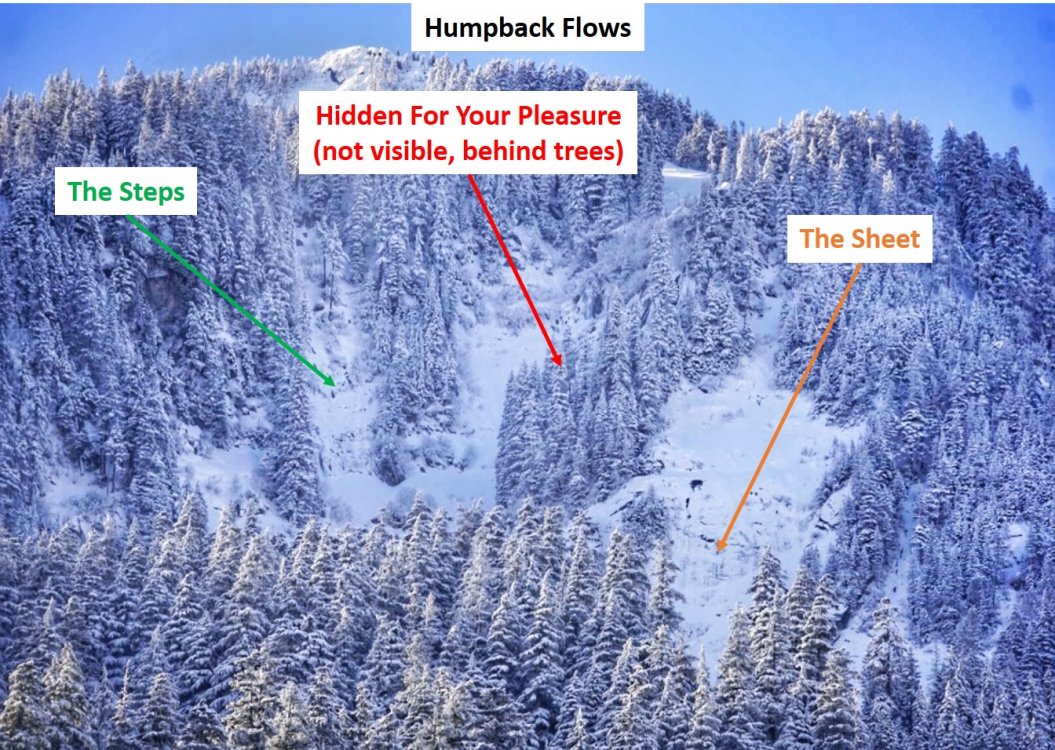
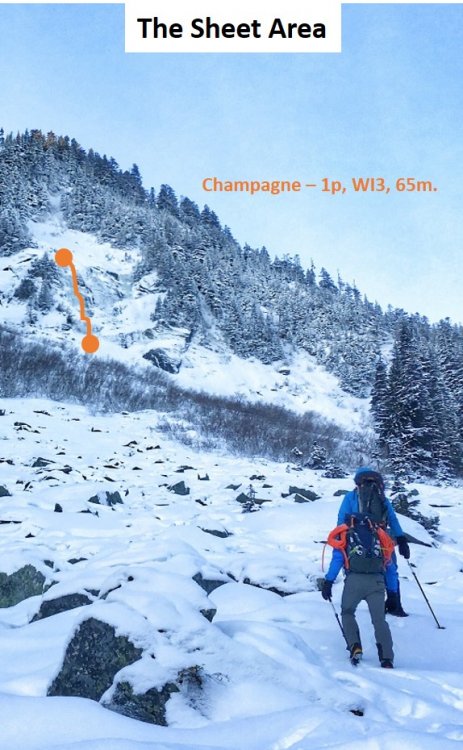
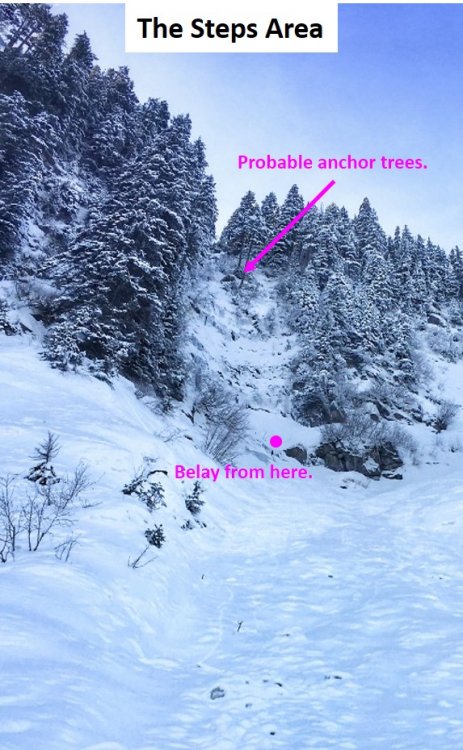

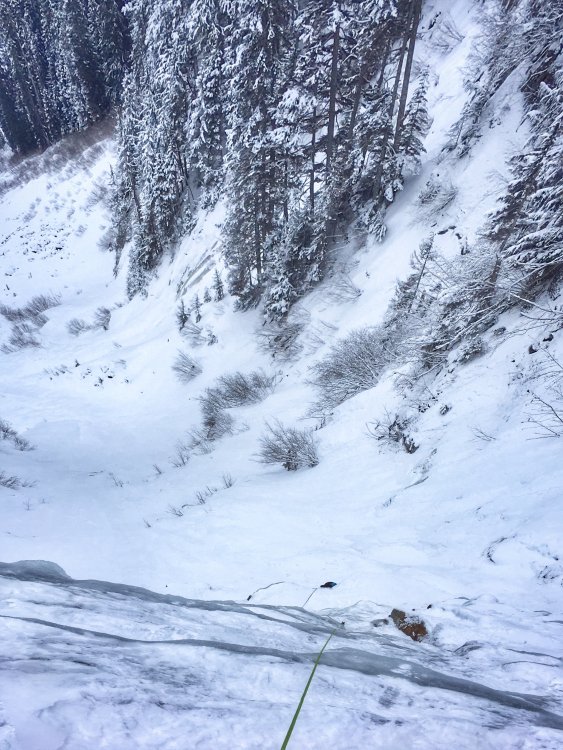
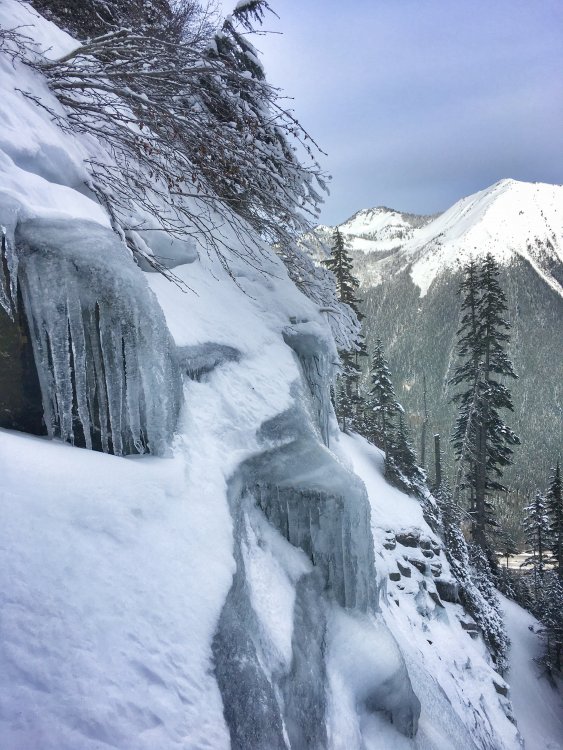


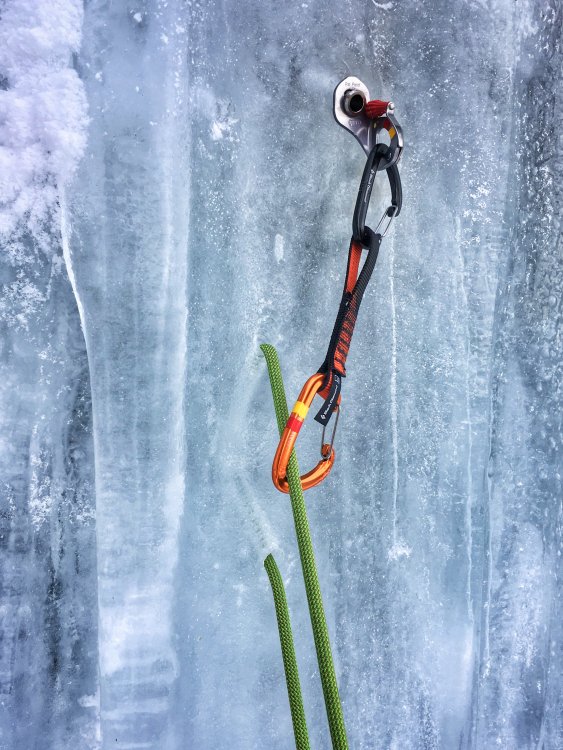
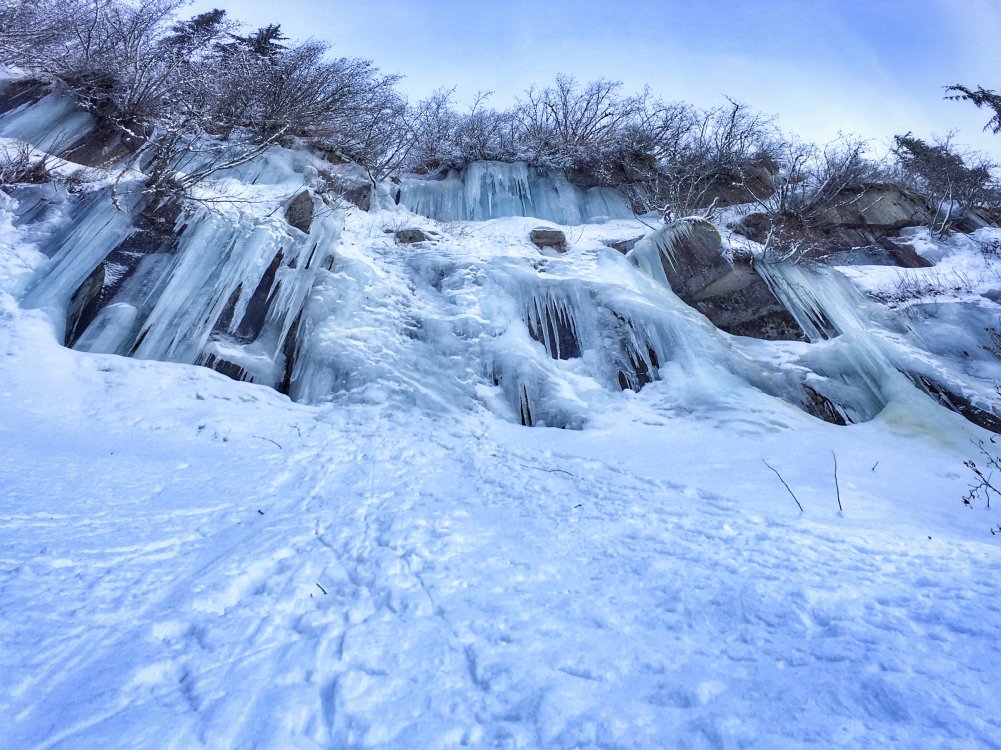
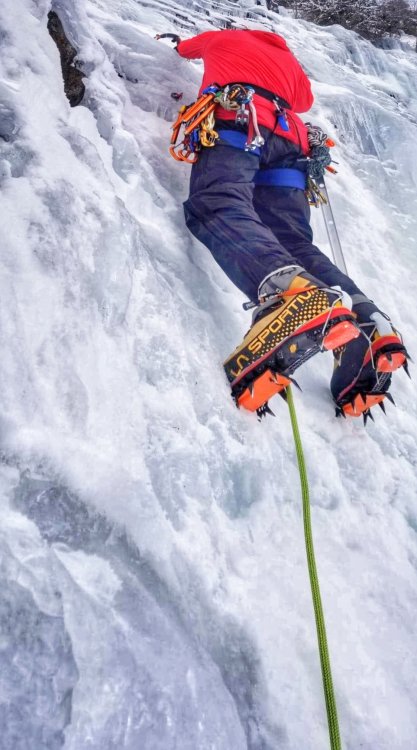
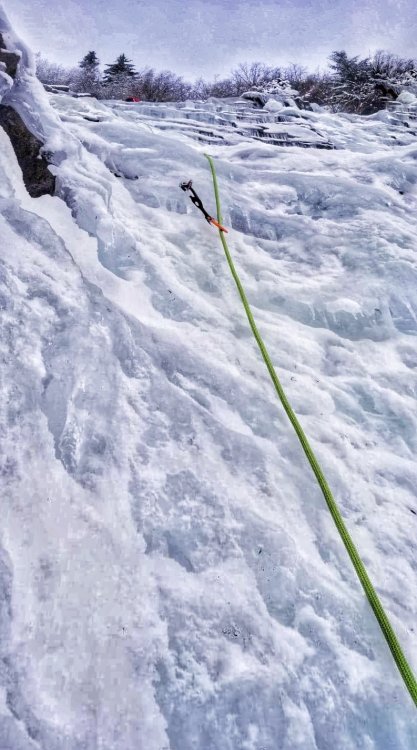
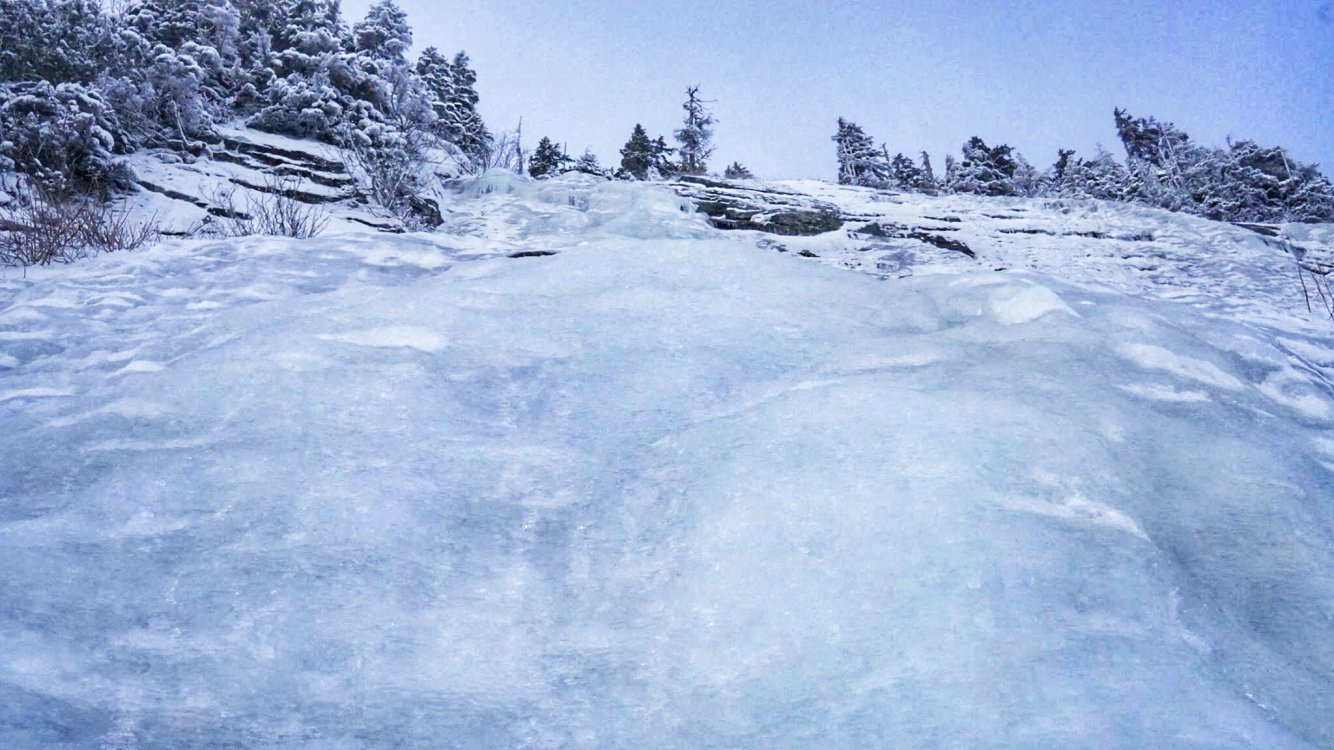
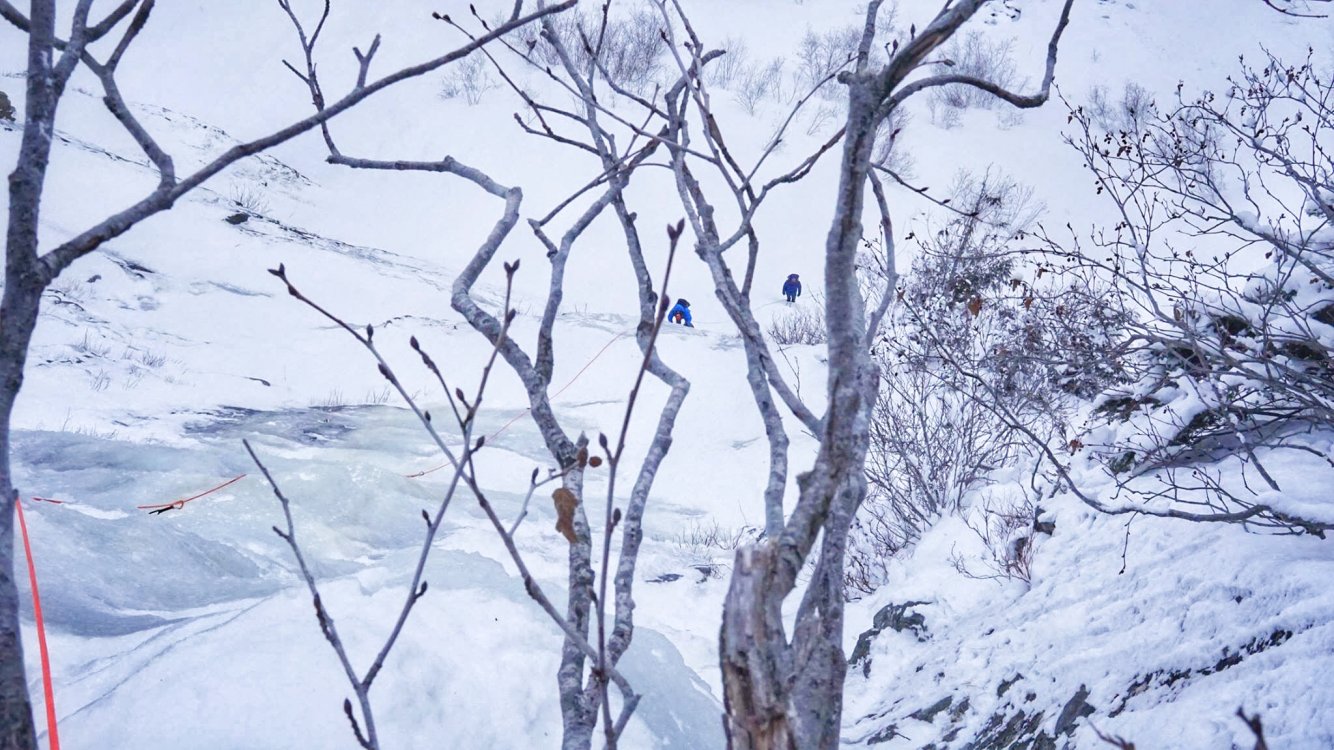
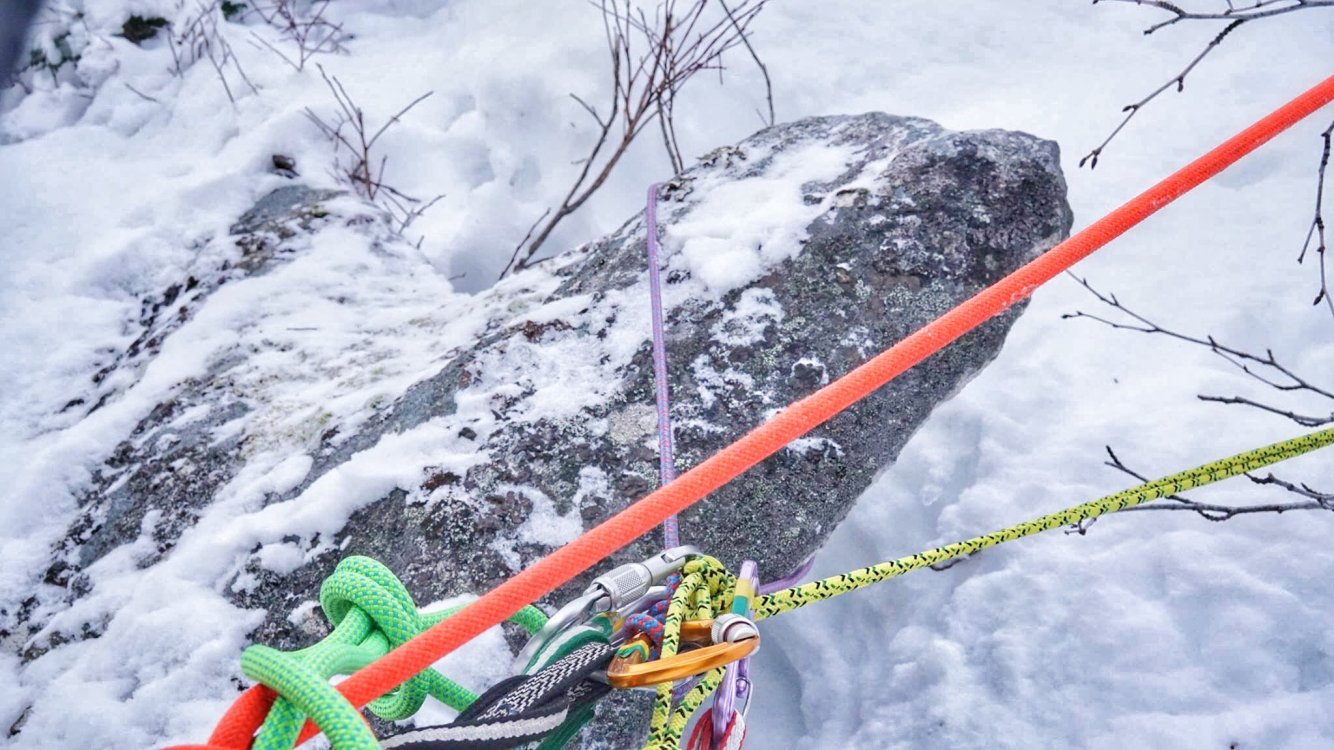

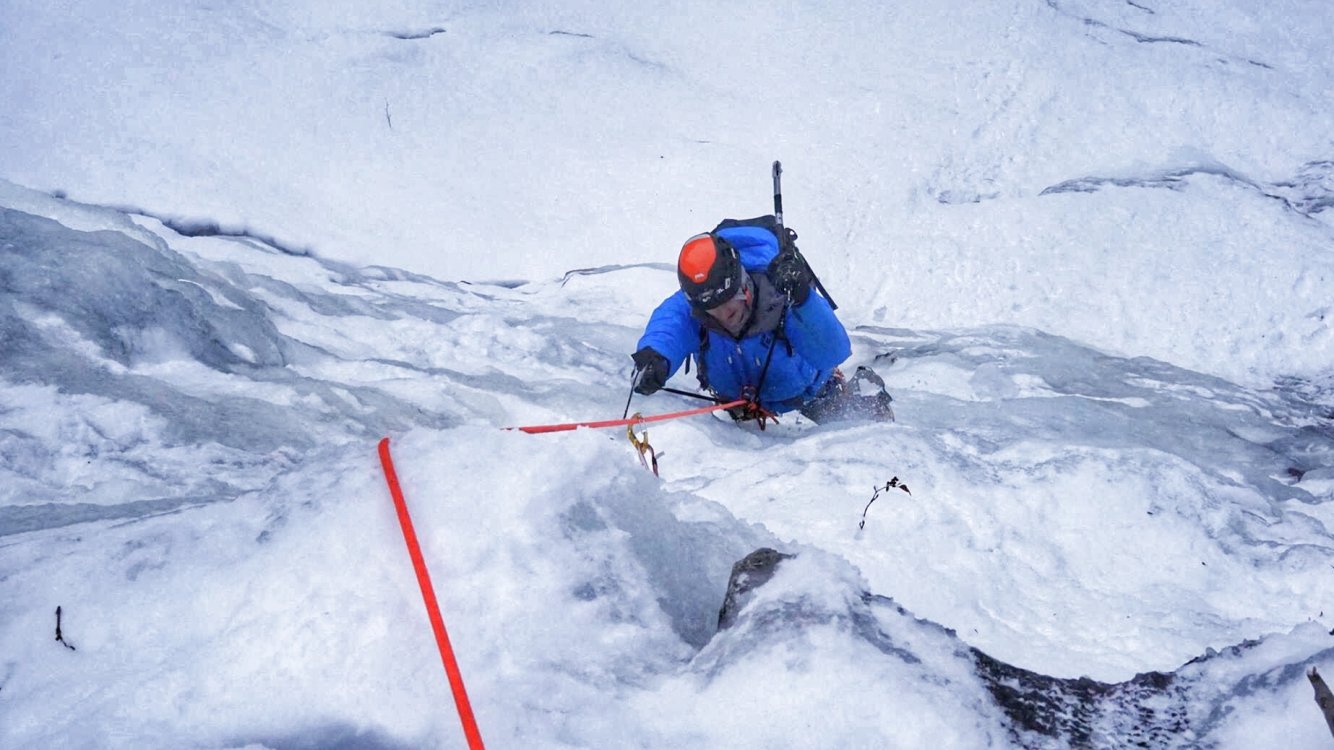
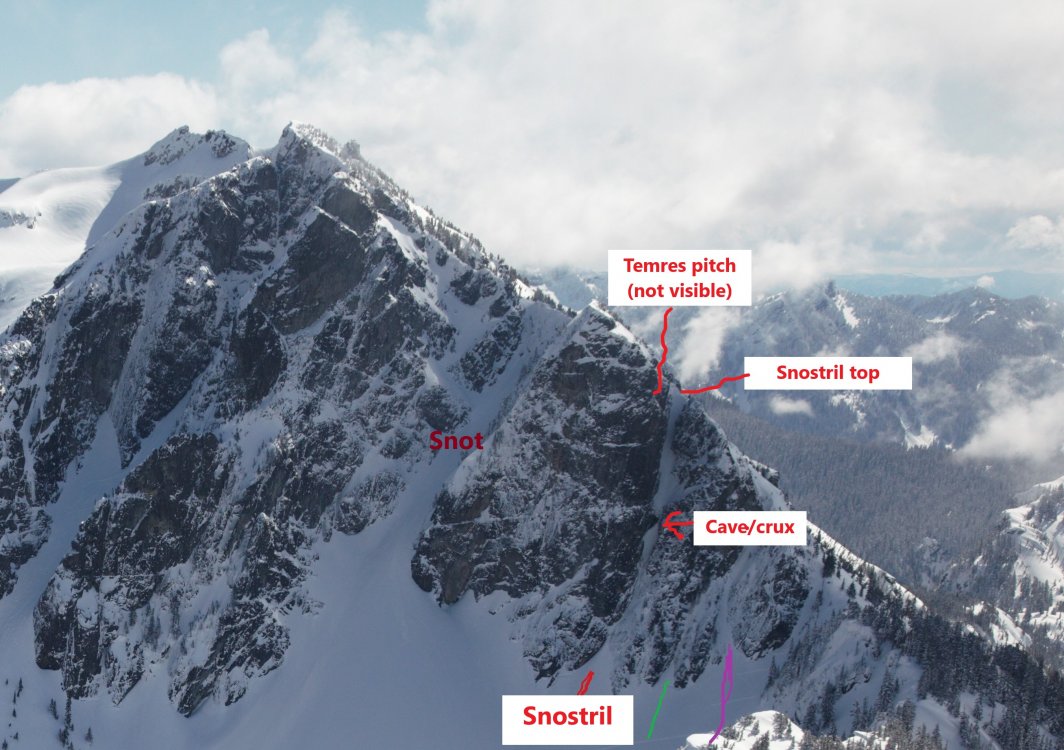
.thumb.jpg.202ae28d845e30d556650539735e1317.jpg)
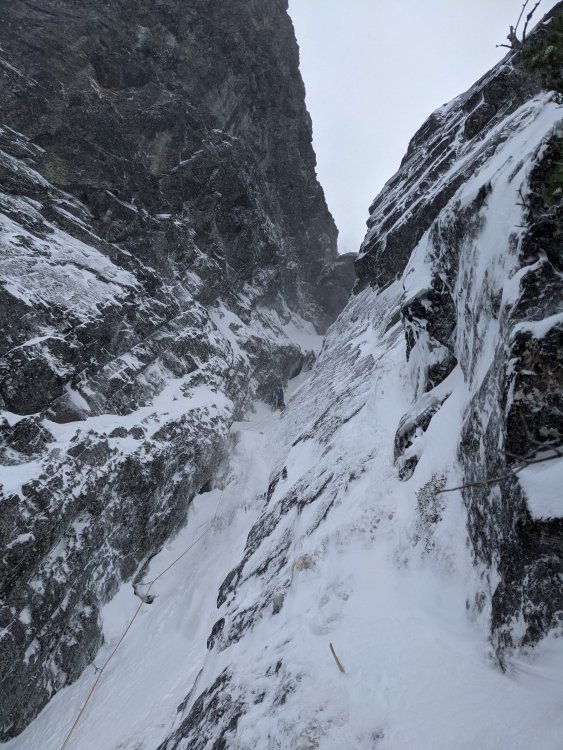
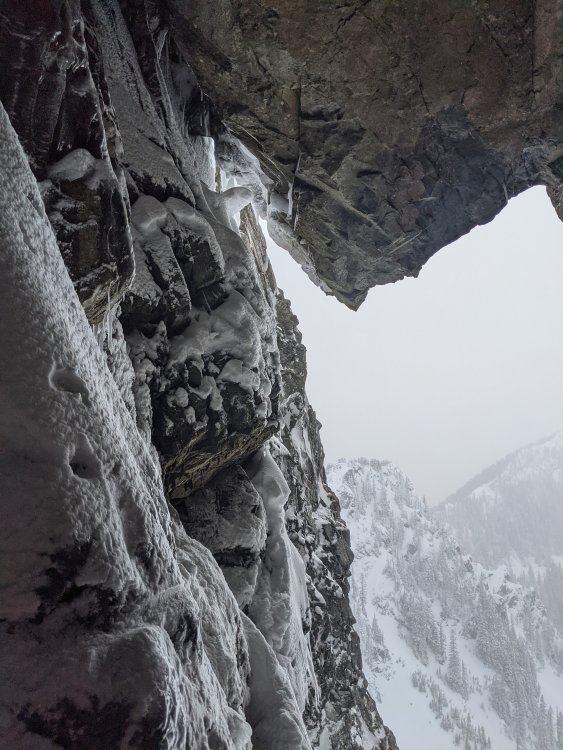
.thumb.jpg.10a64de5a509645c6f49ee25f7dfd192.jpg)
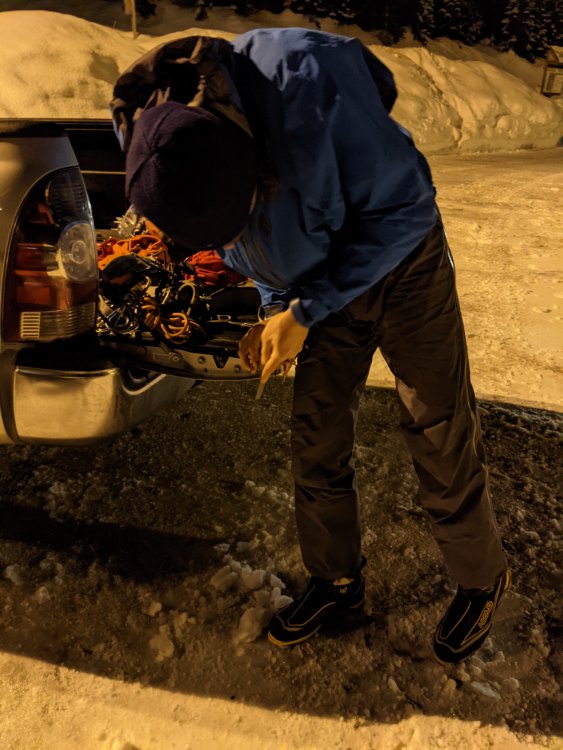
.thumb.jpg.2c08c9d9c1de4ccdd6a77a747d518c7c.jpg)
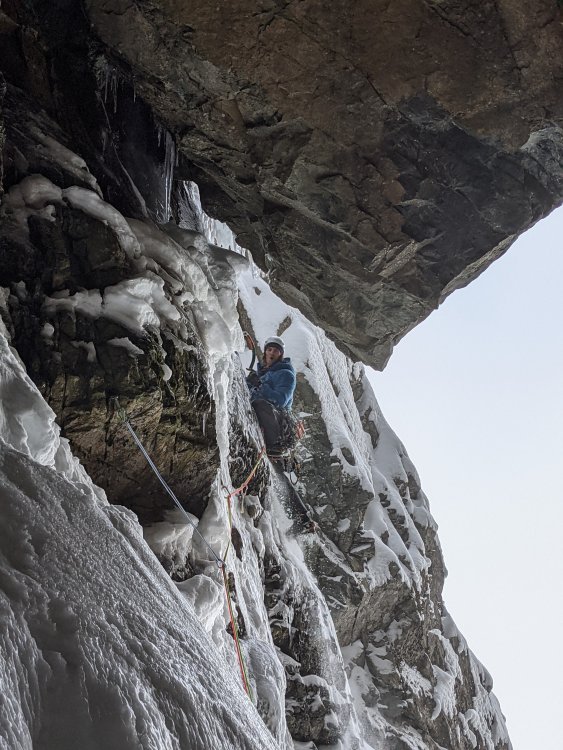
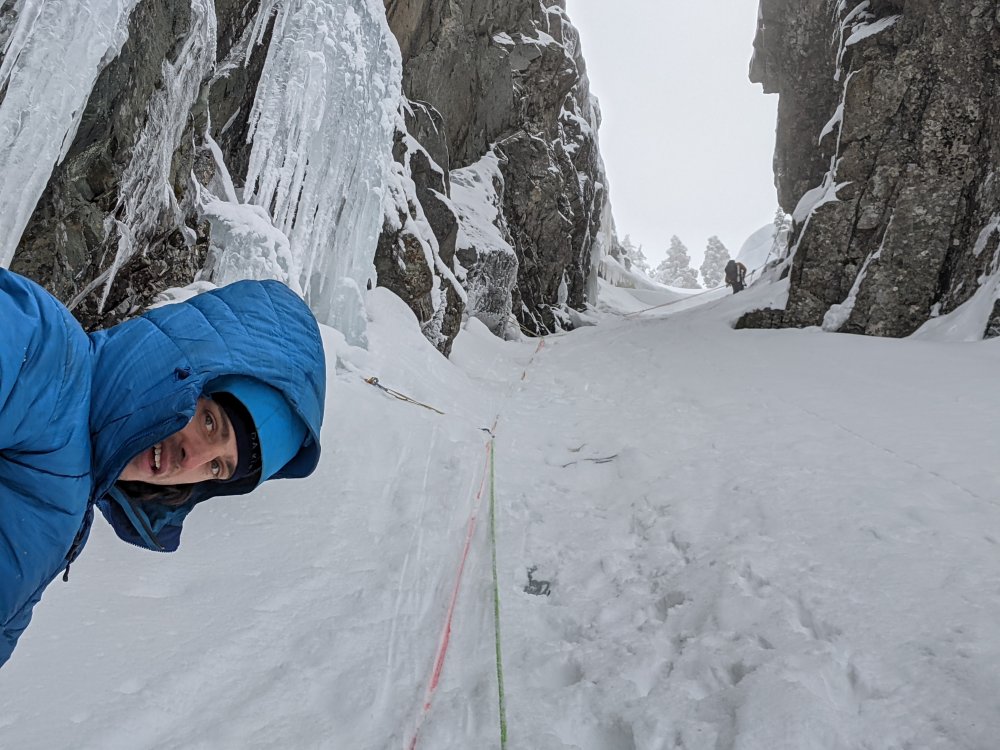



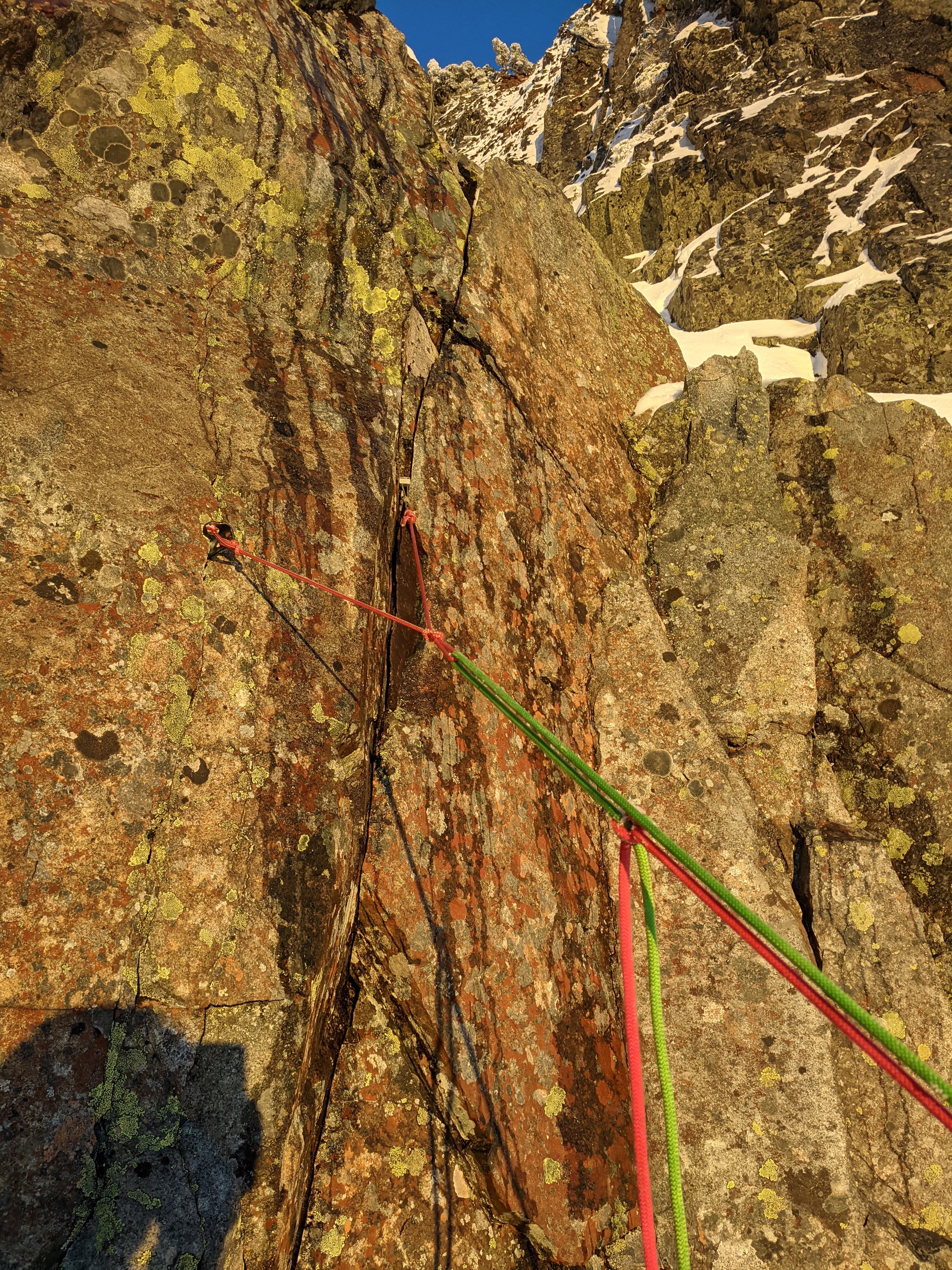
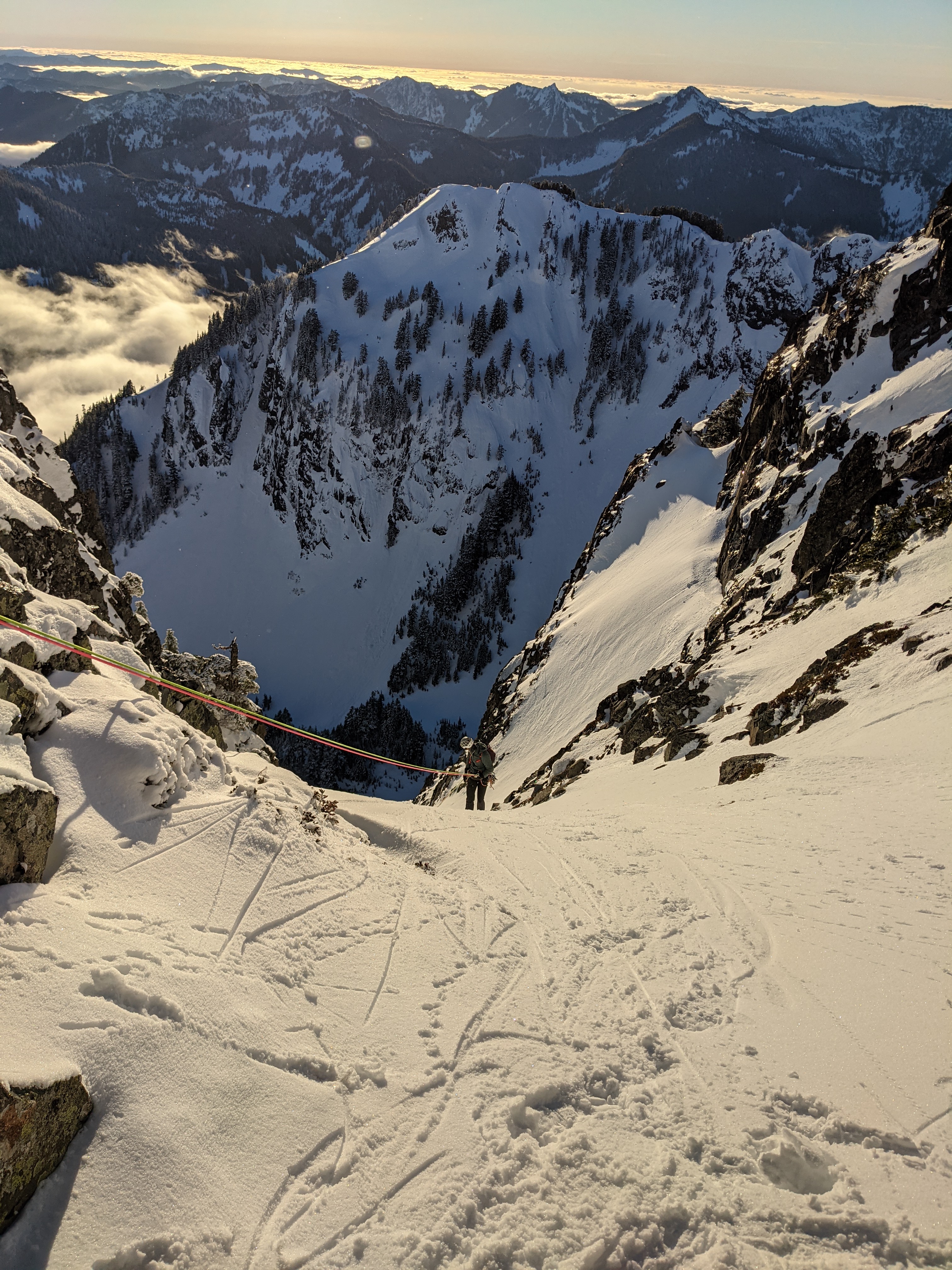

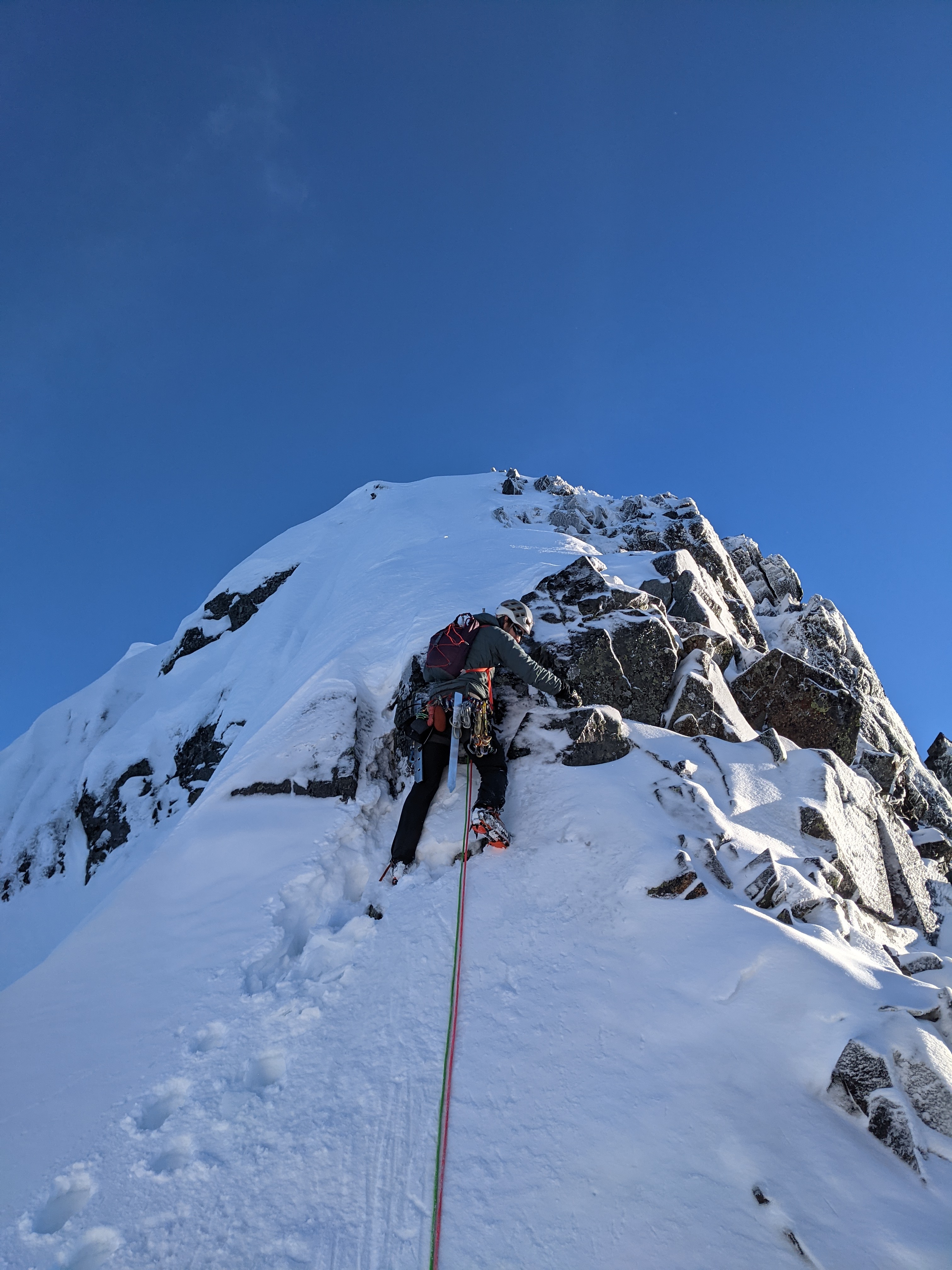



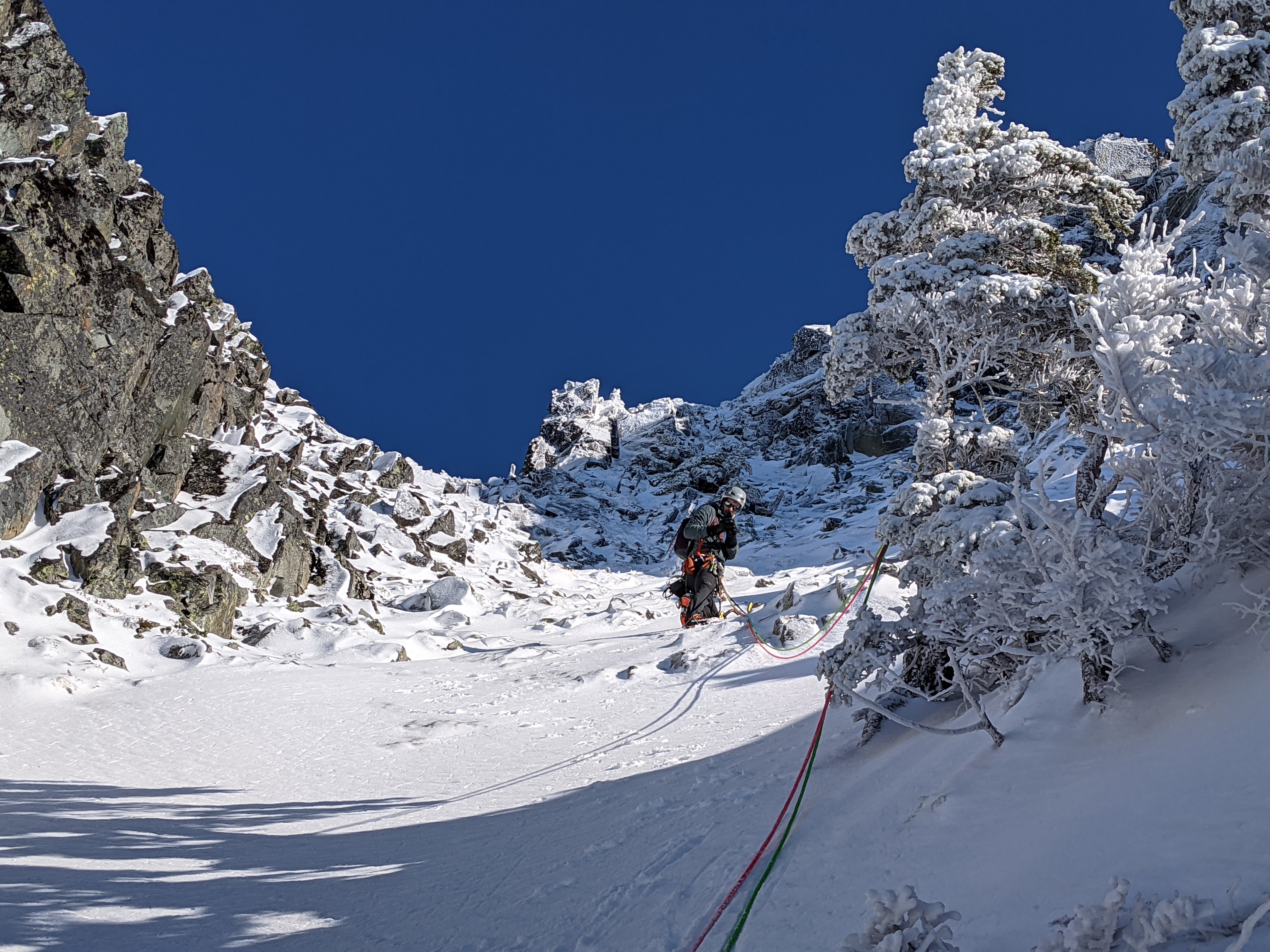
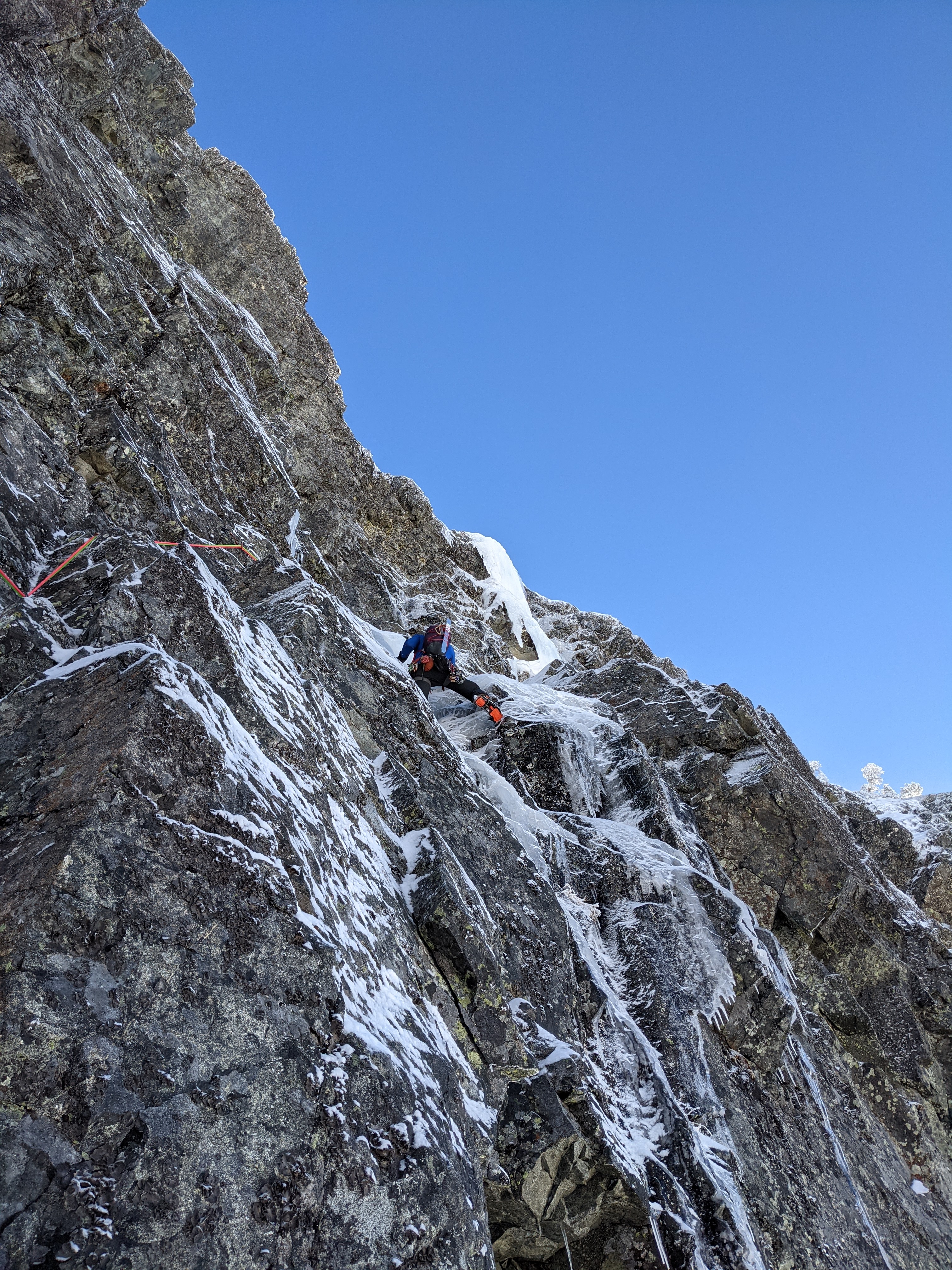
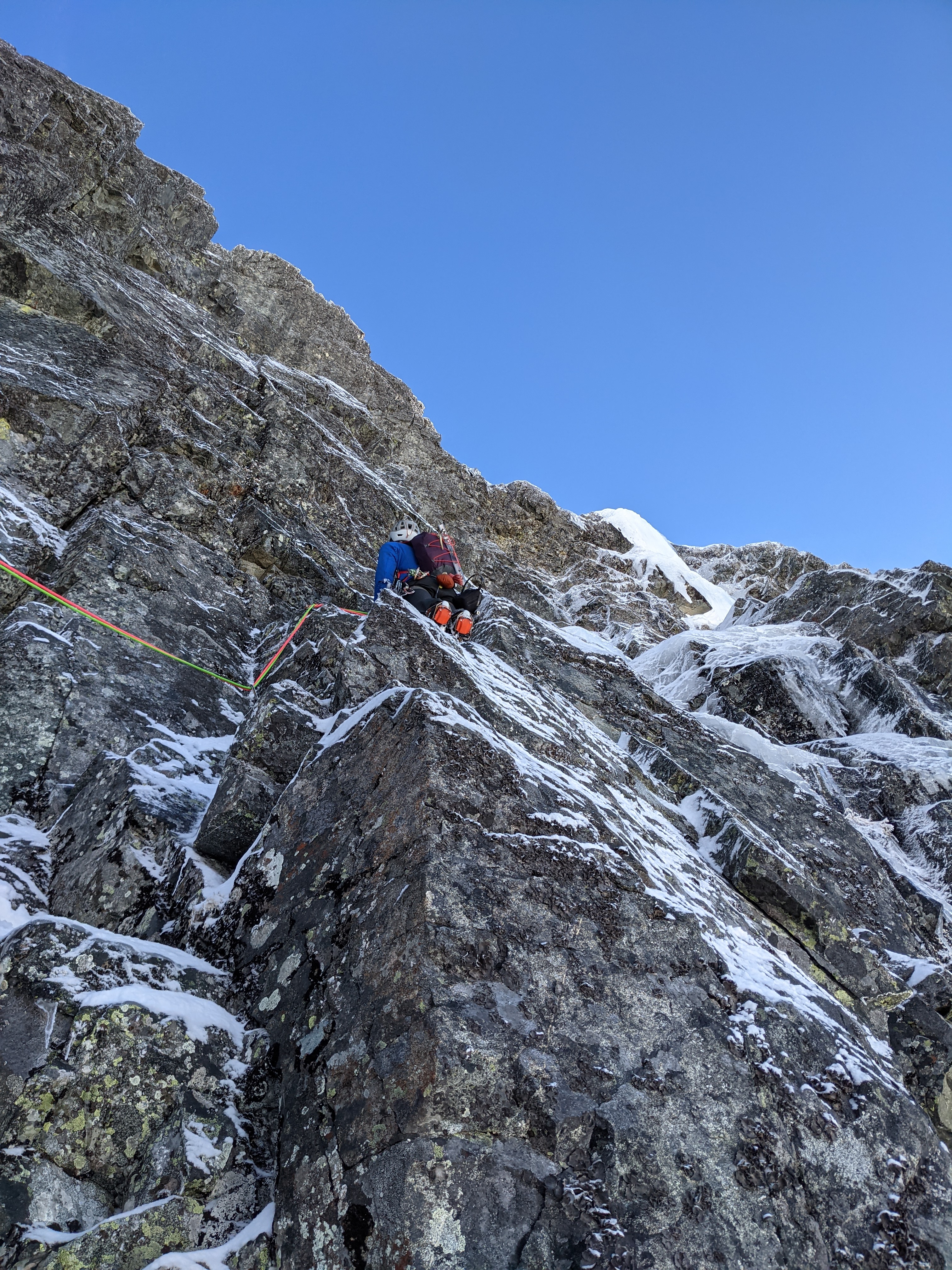
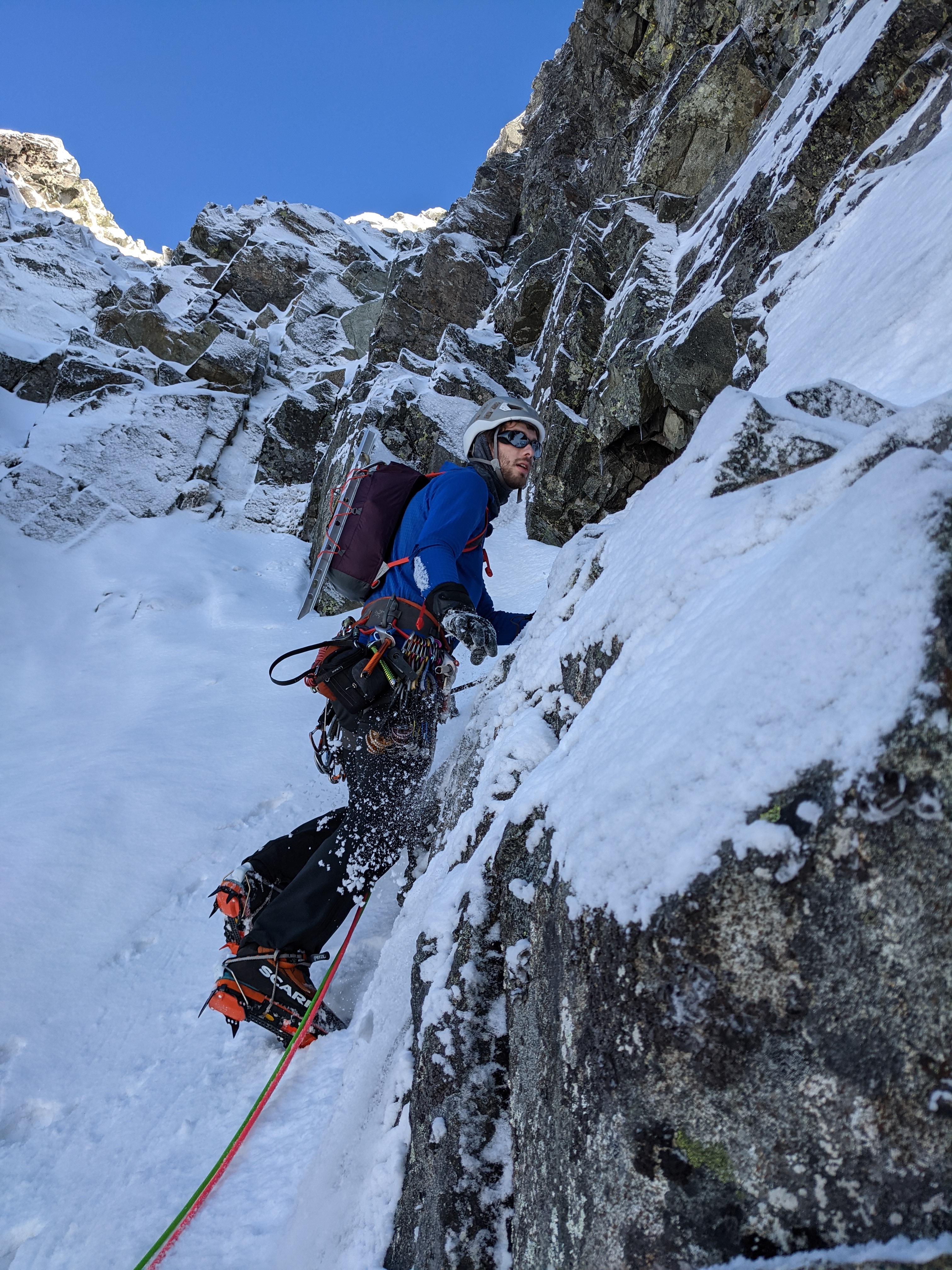
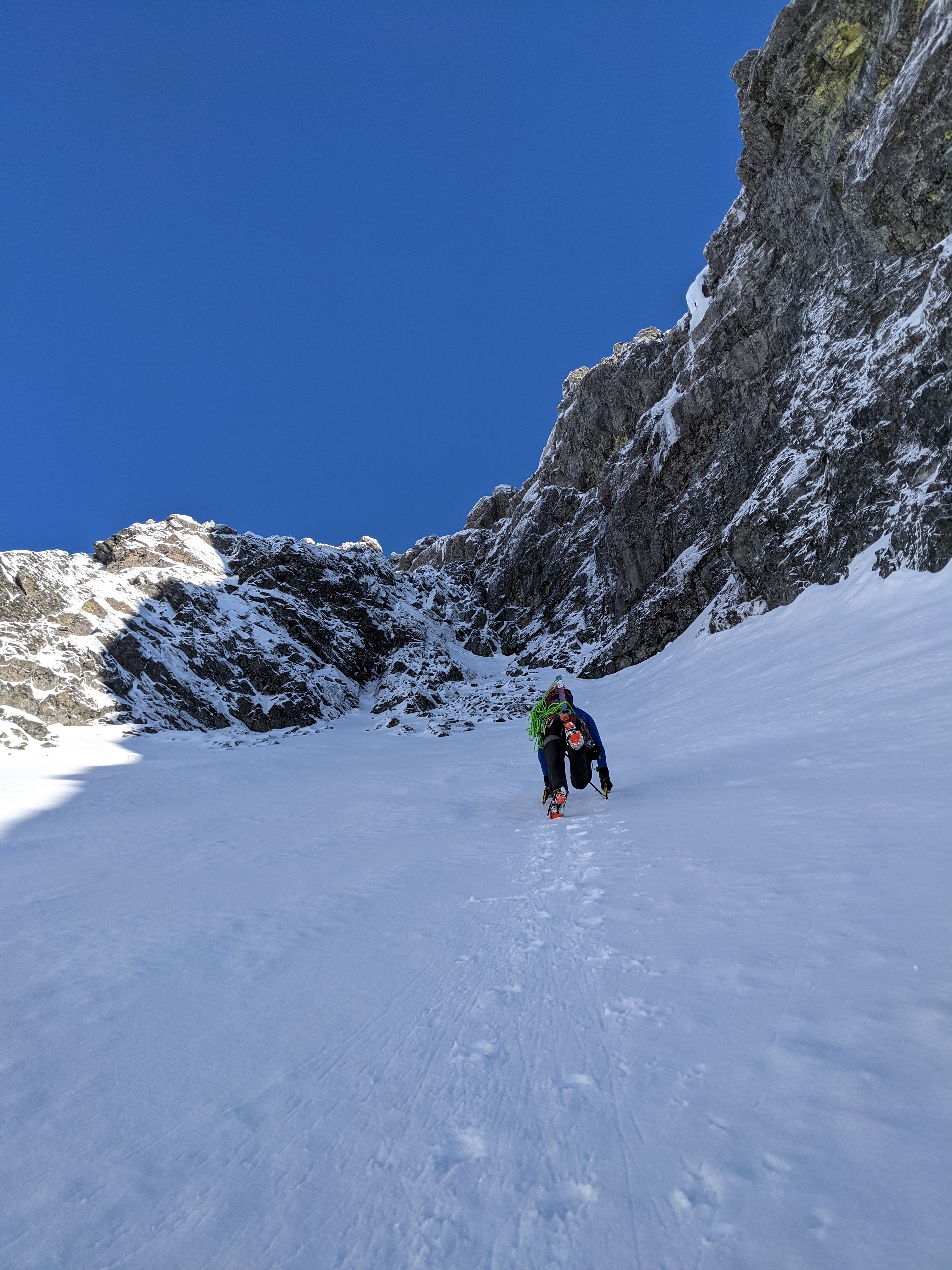


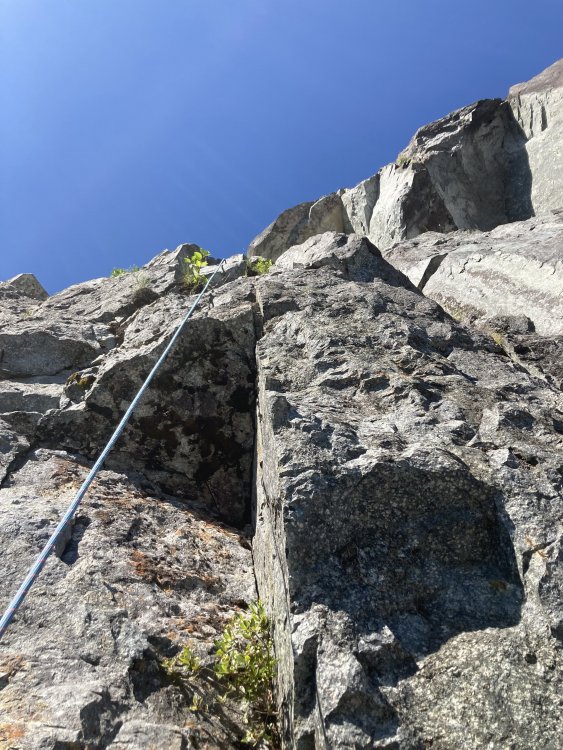

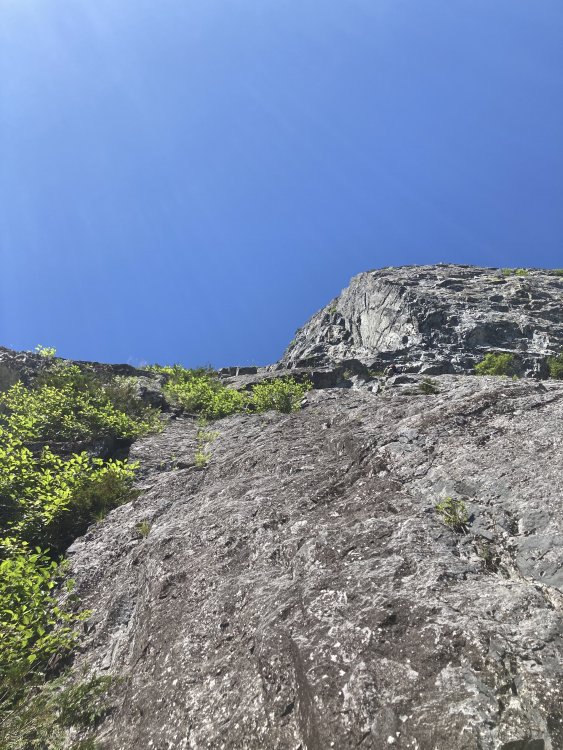
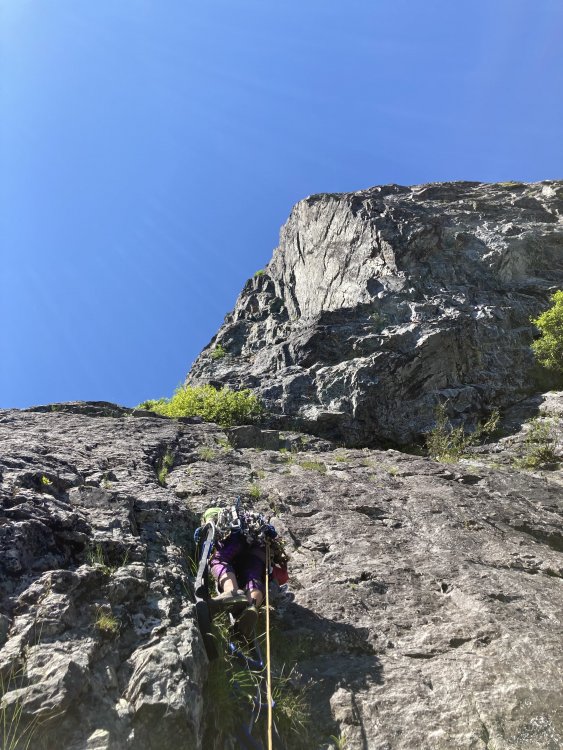
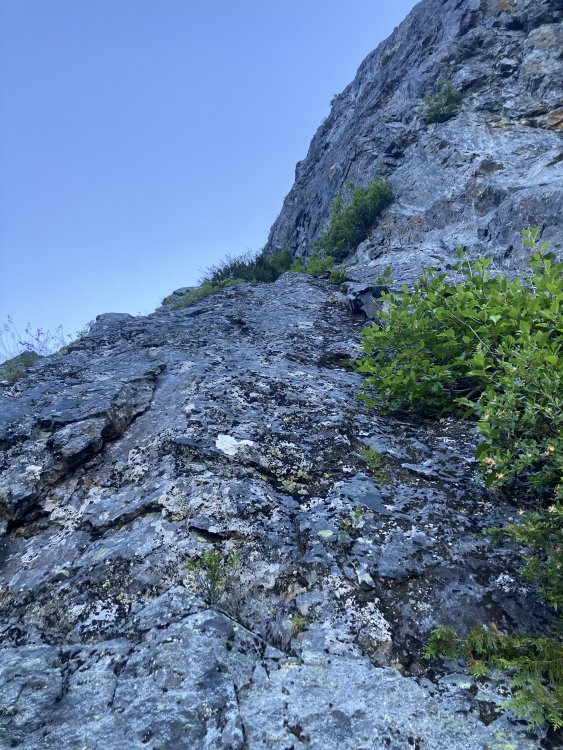
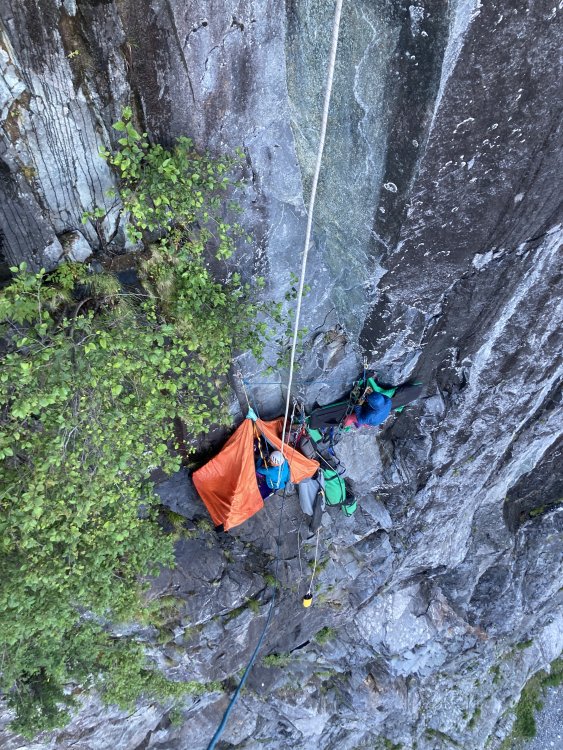
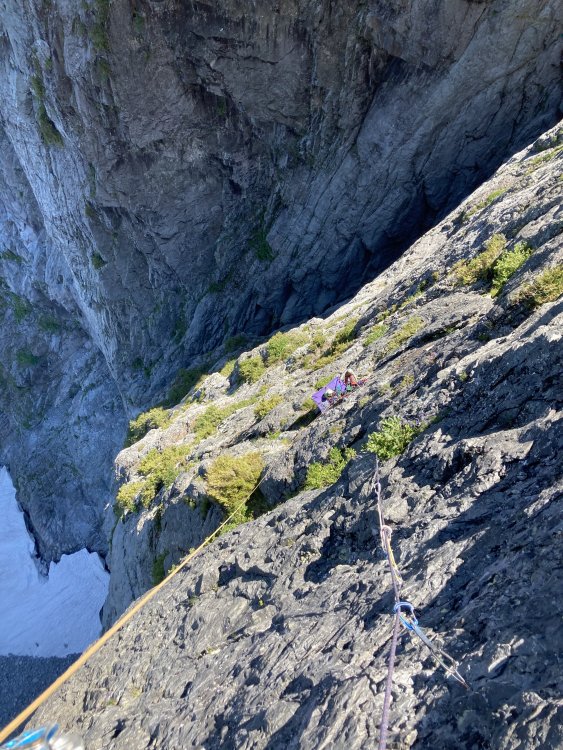

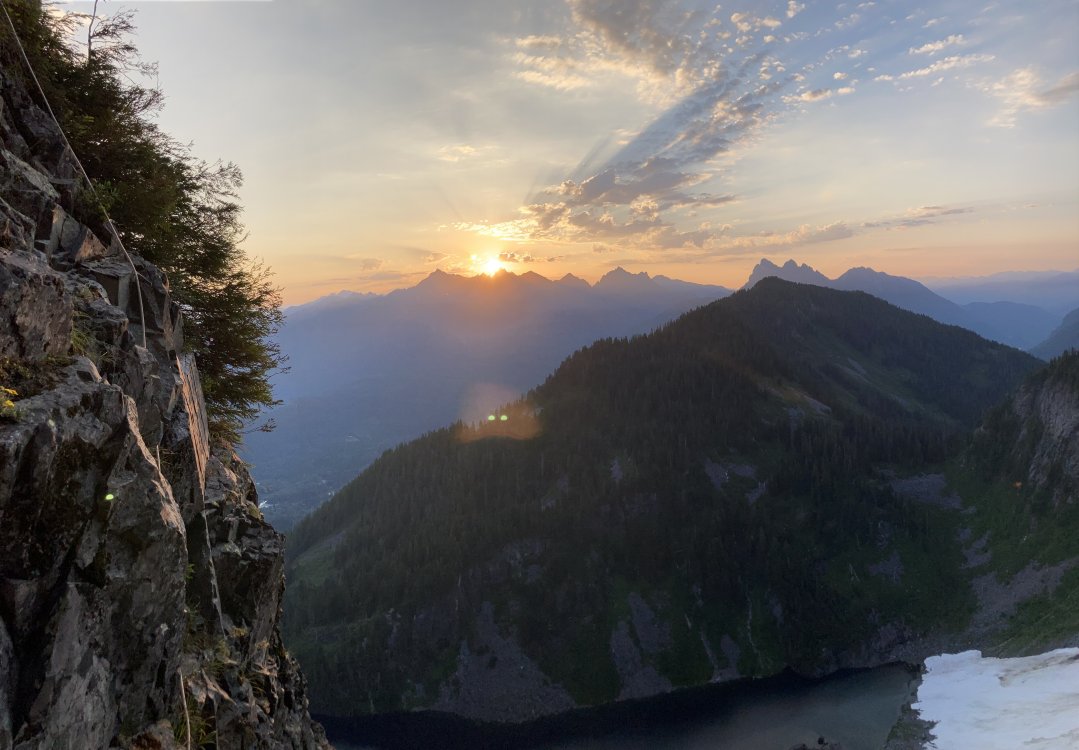

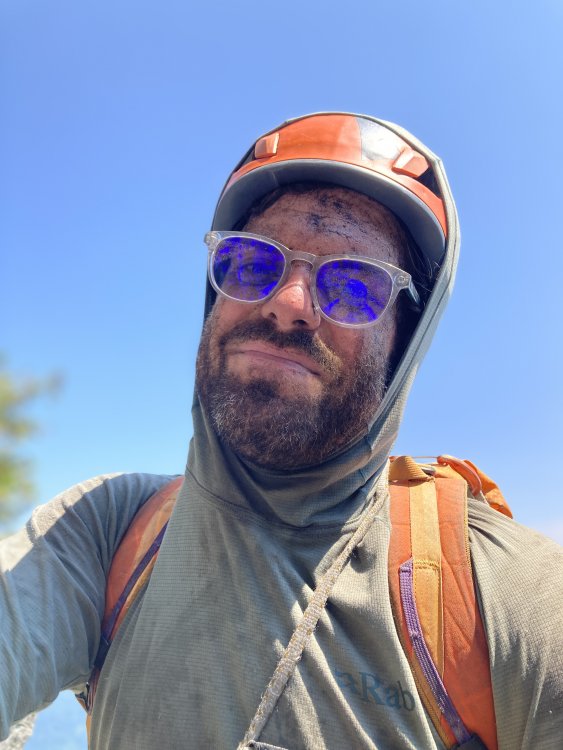

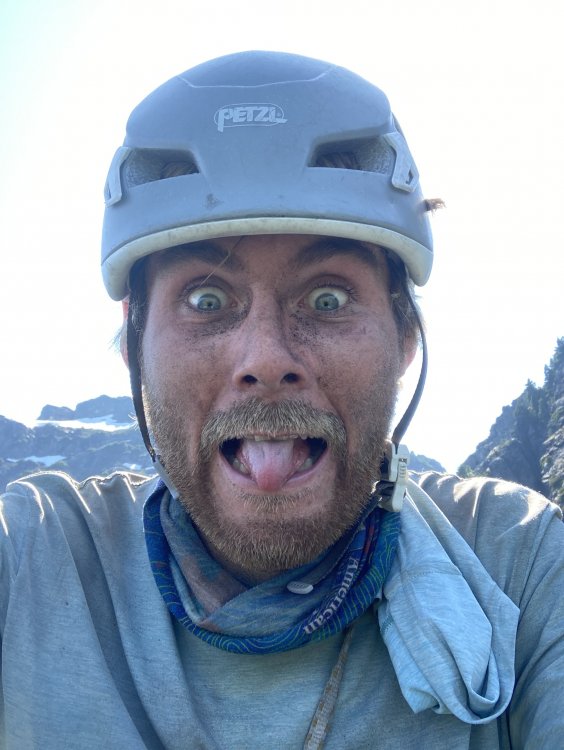
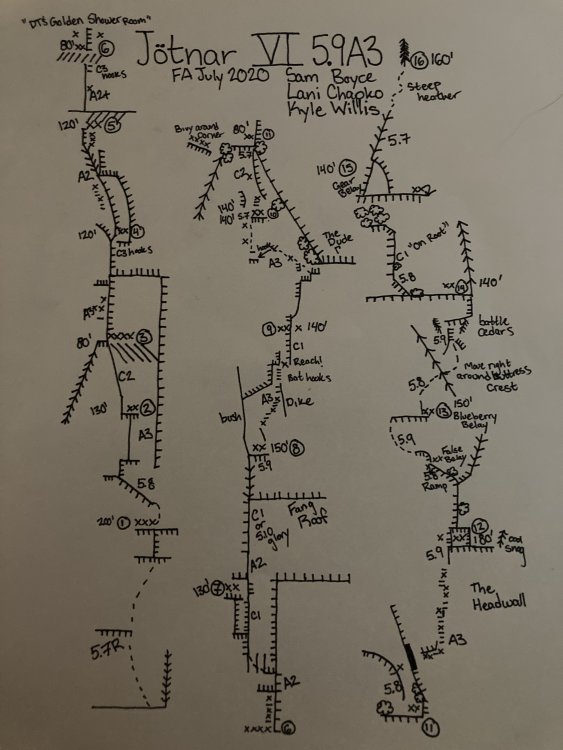

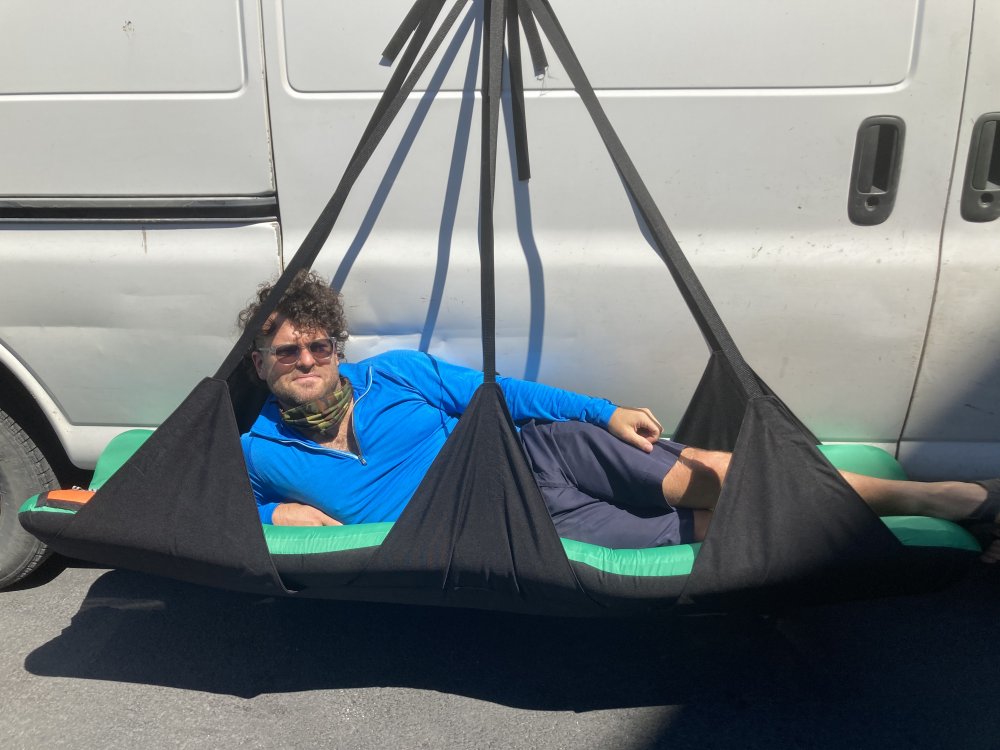

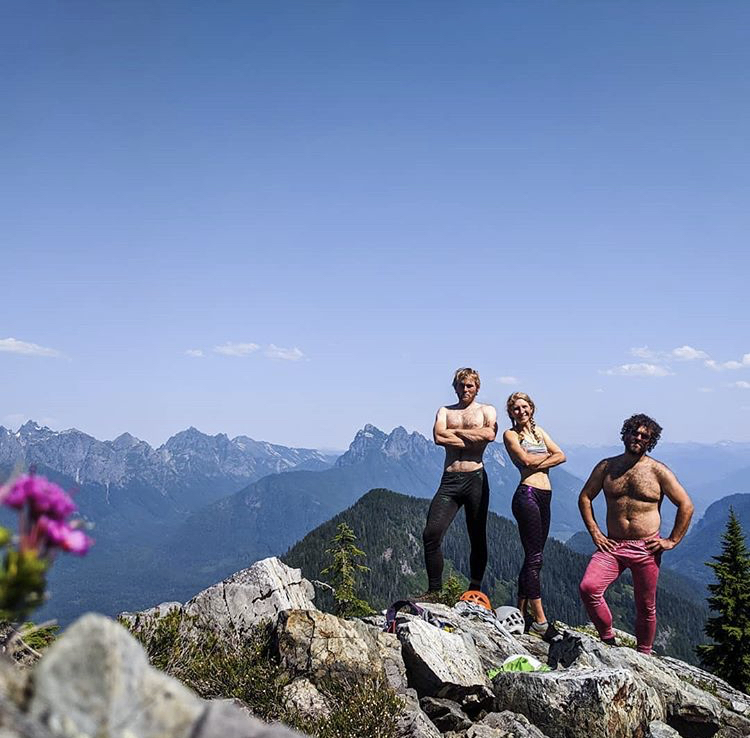
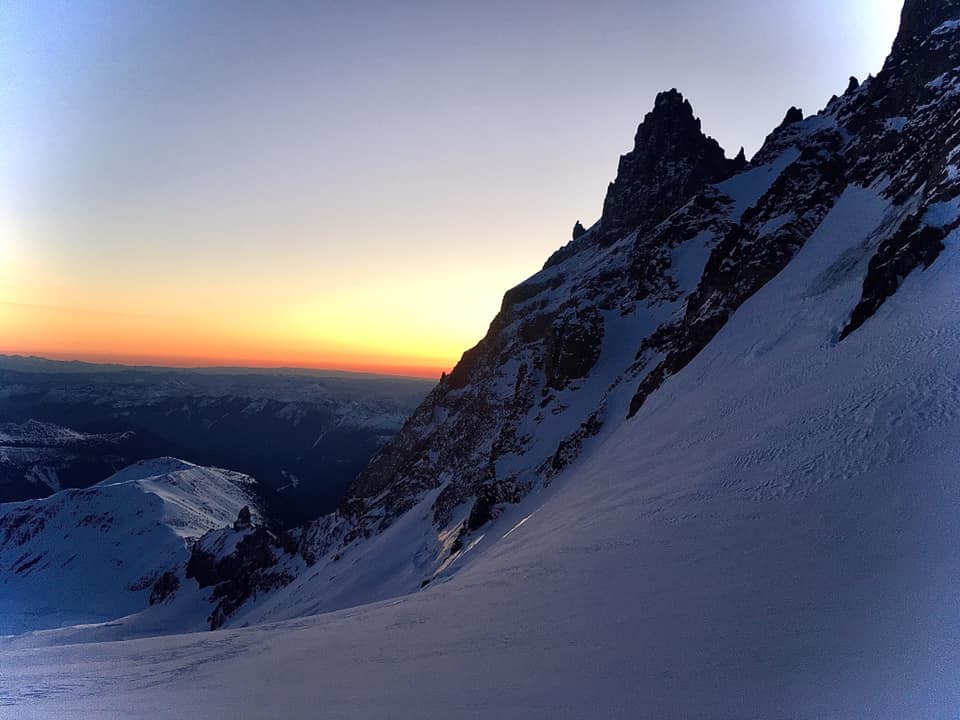

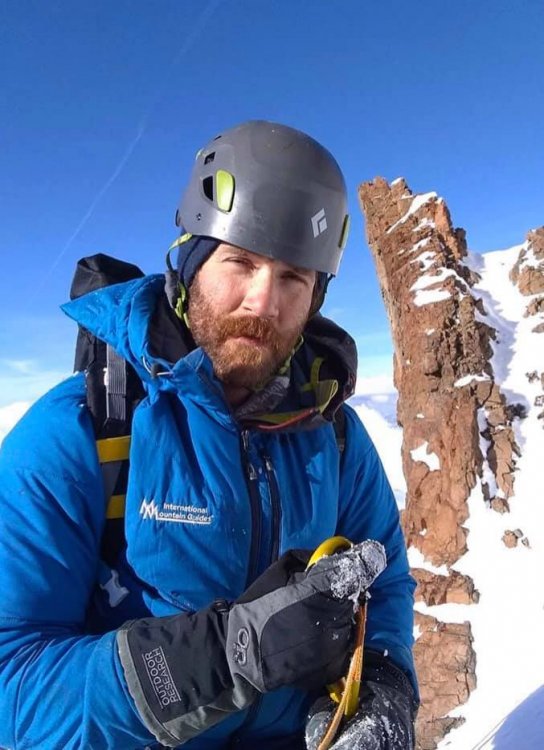
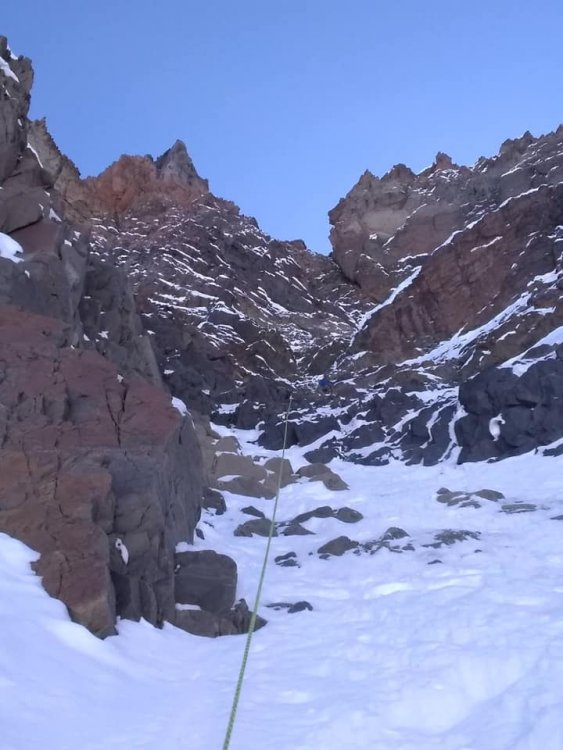
.jpg.3f675bc137993233946f4728b95b5a57.jpg)
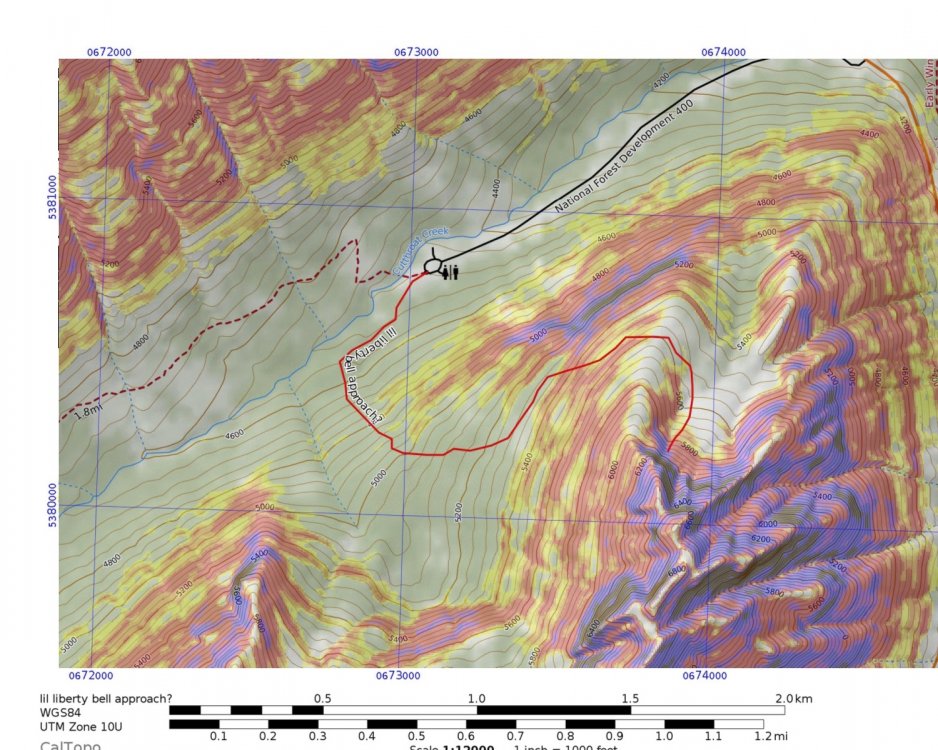



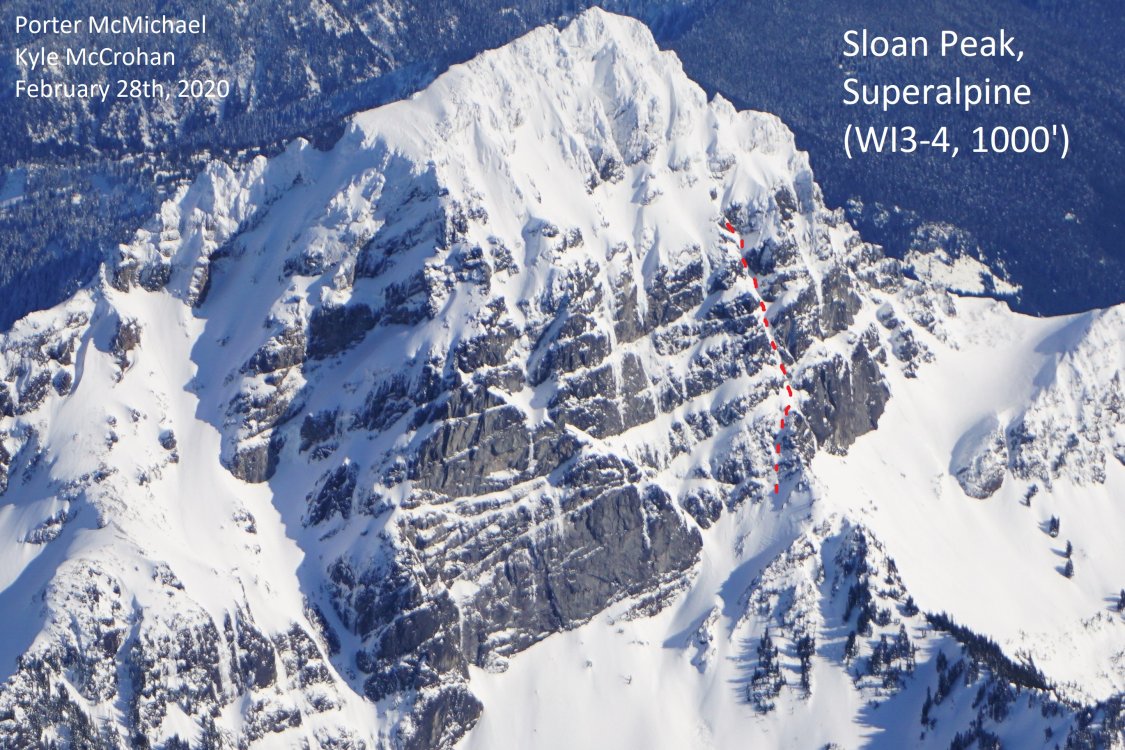
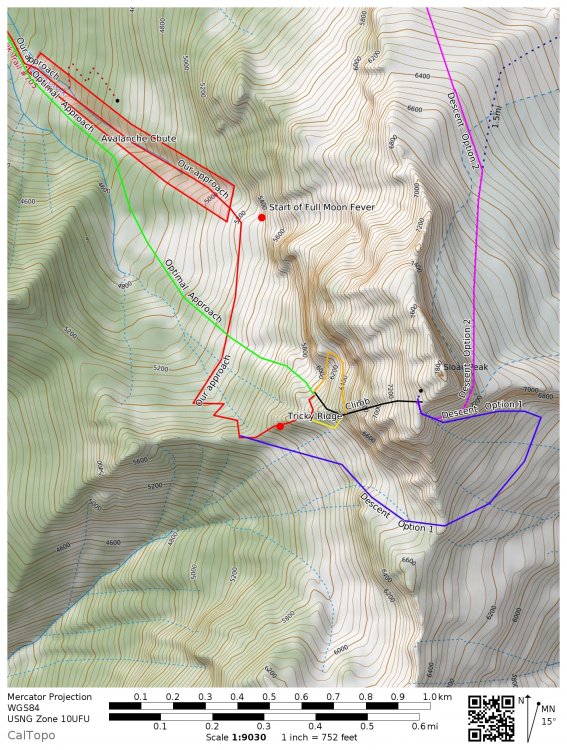

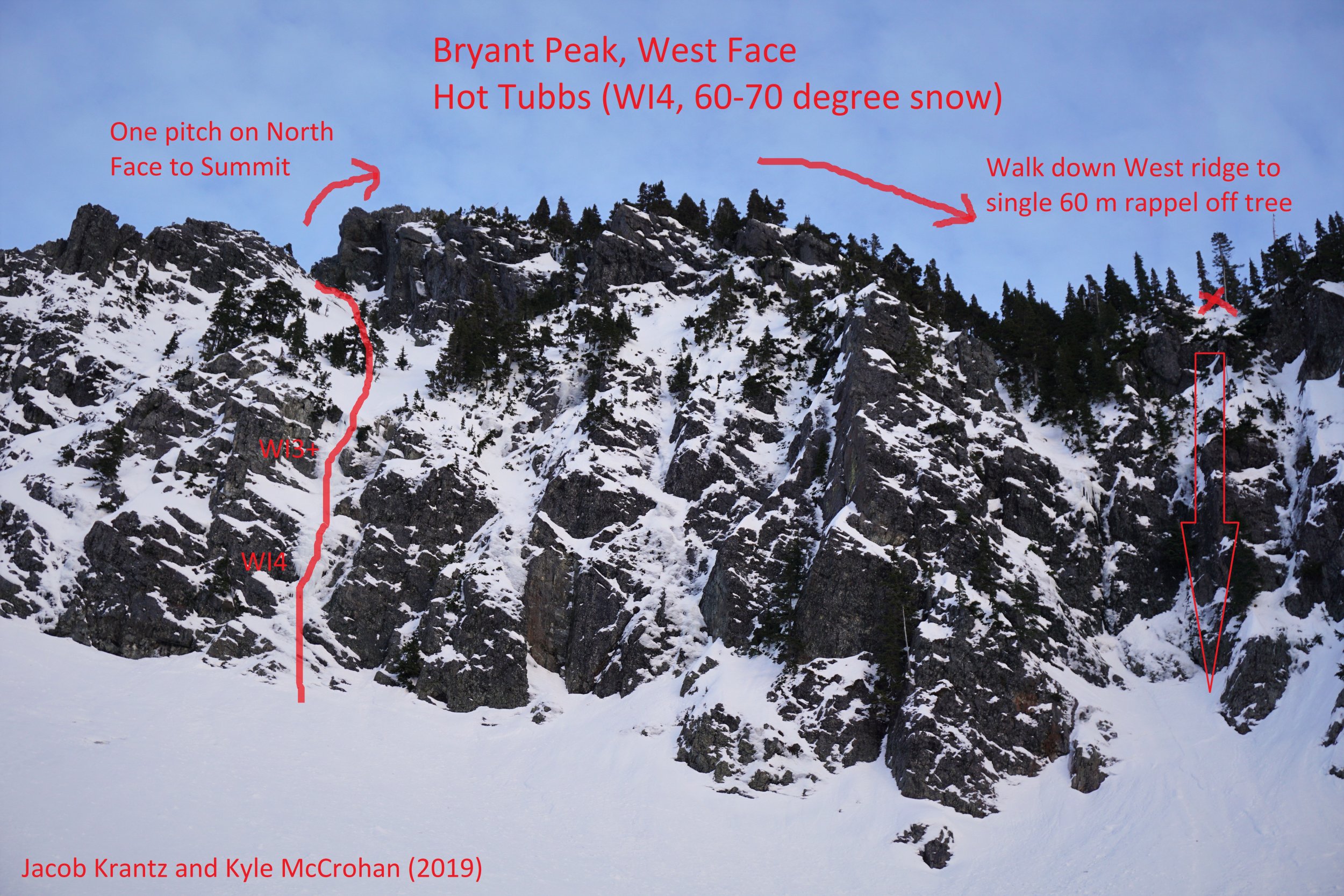
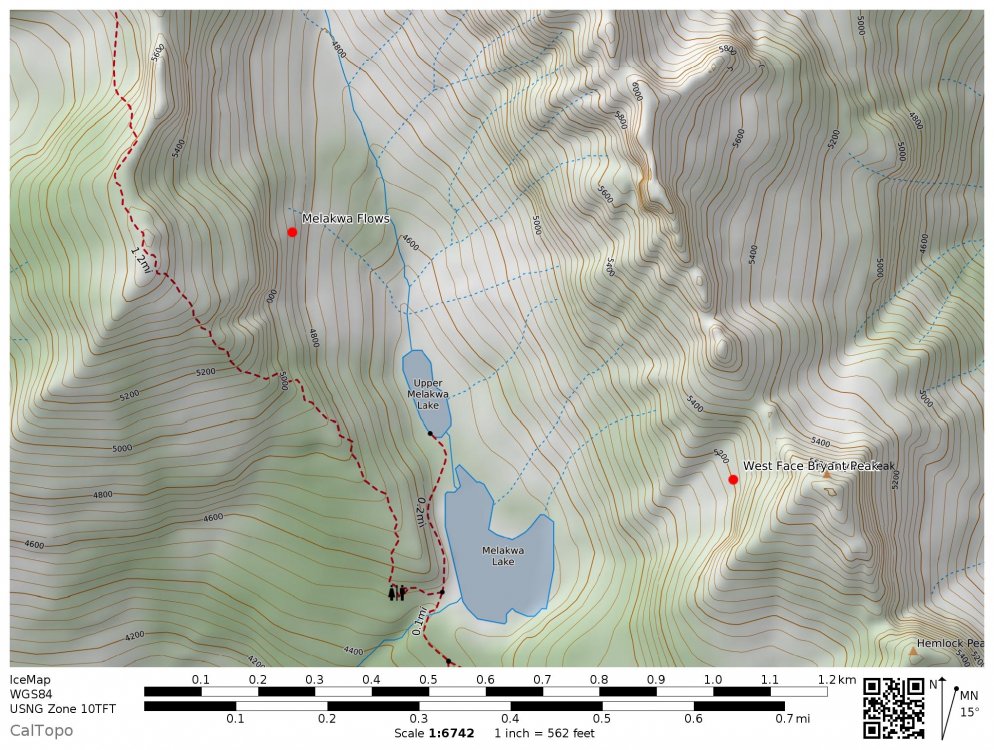
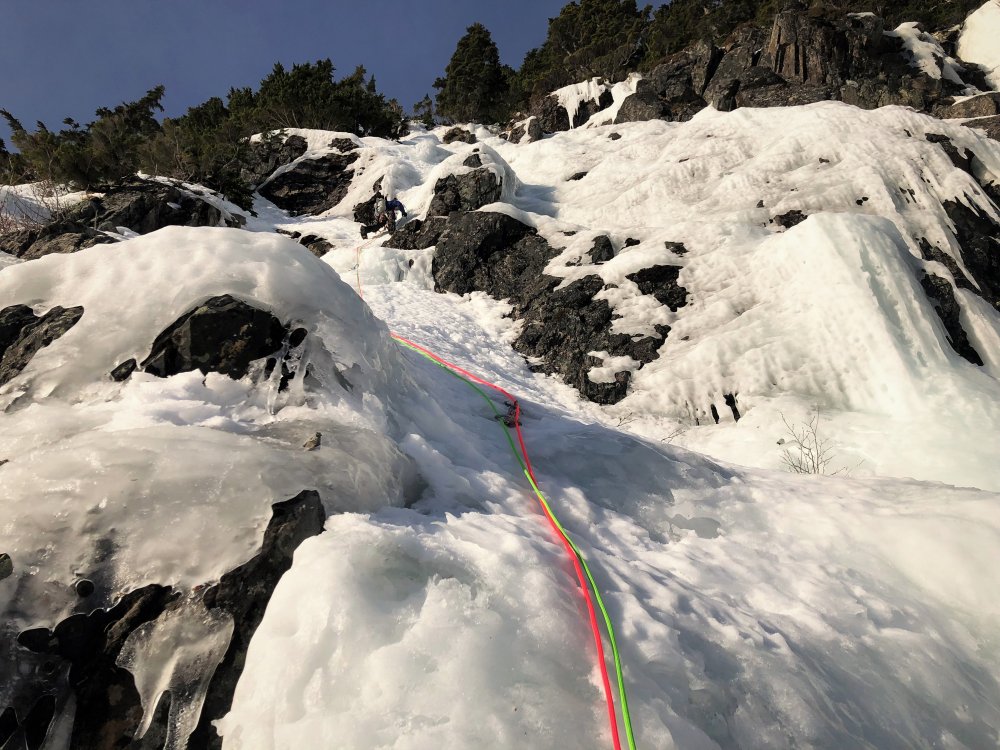
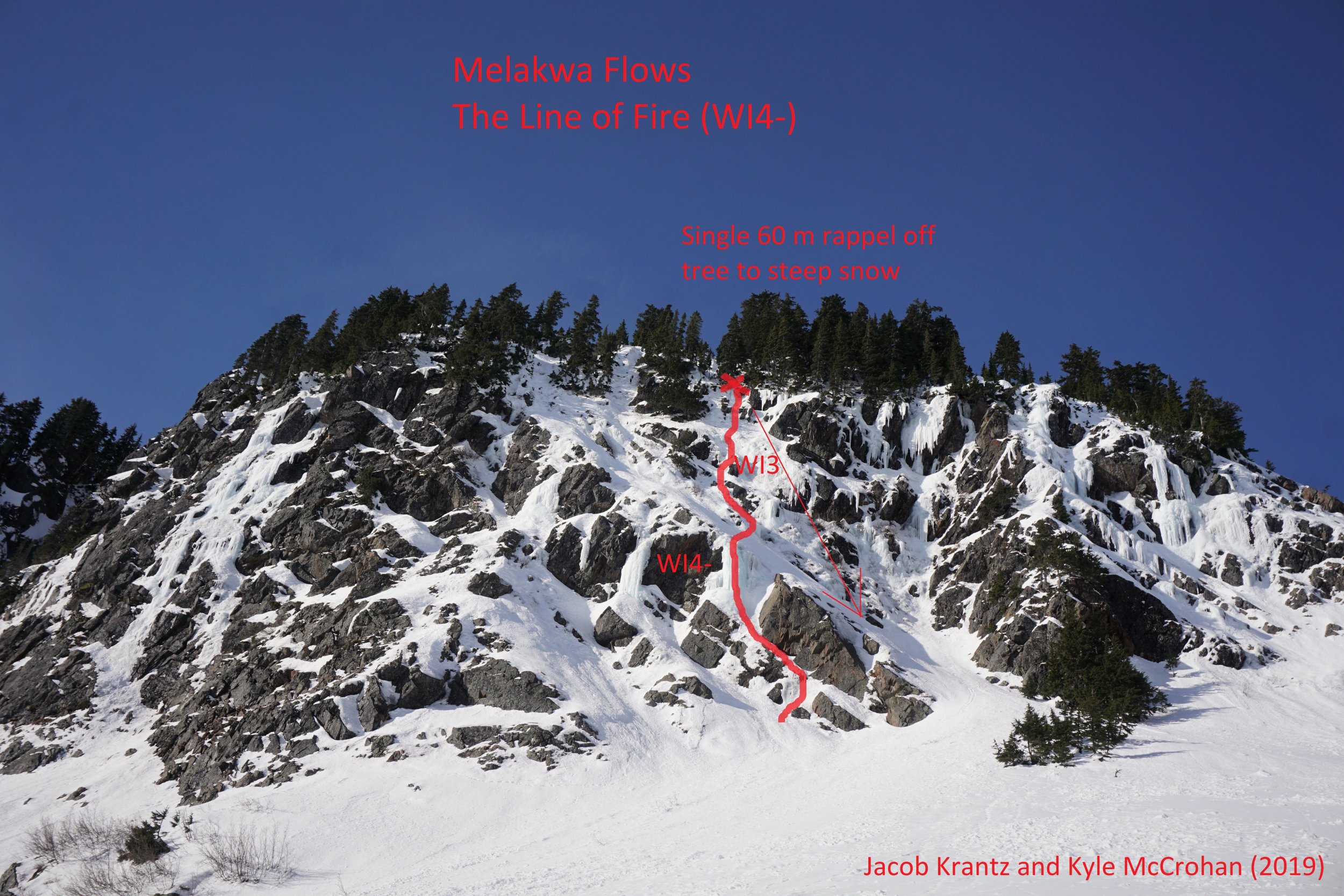
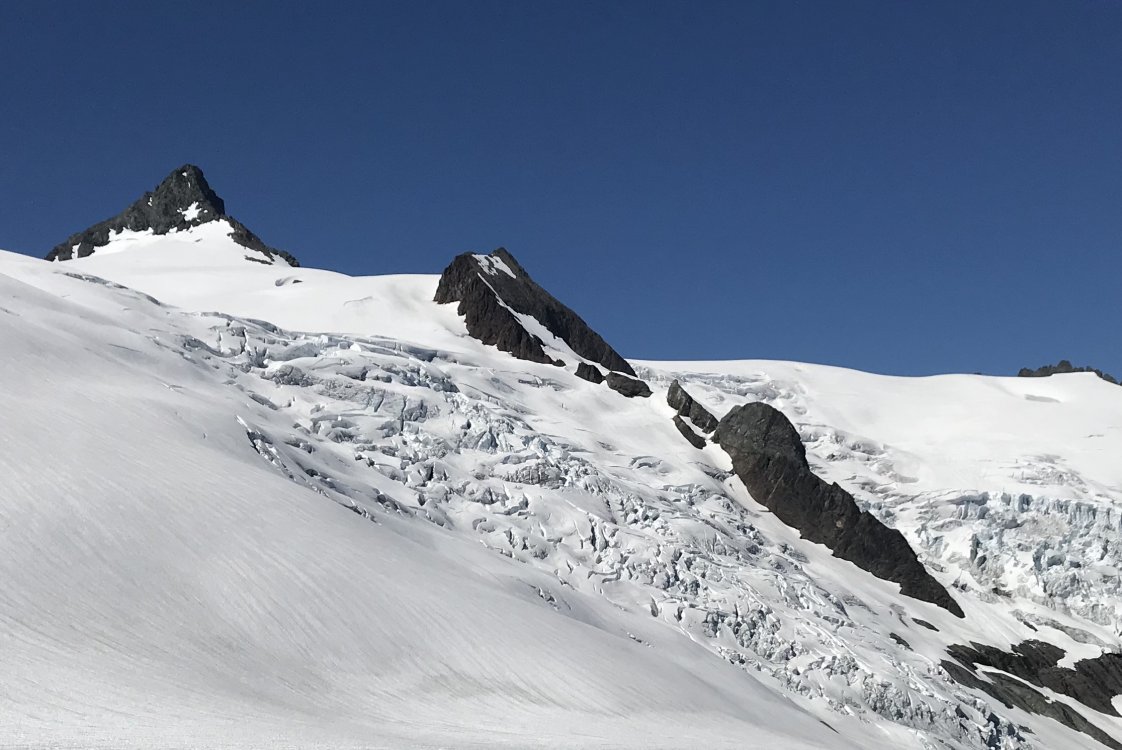
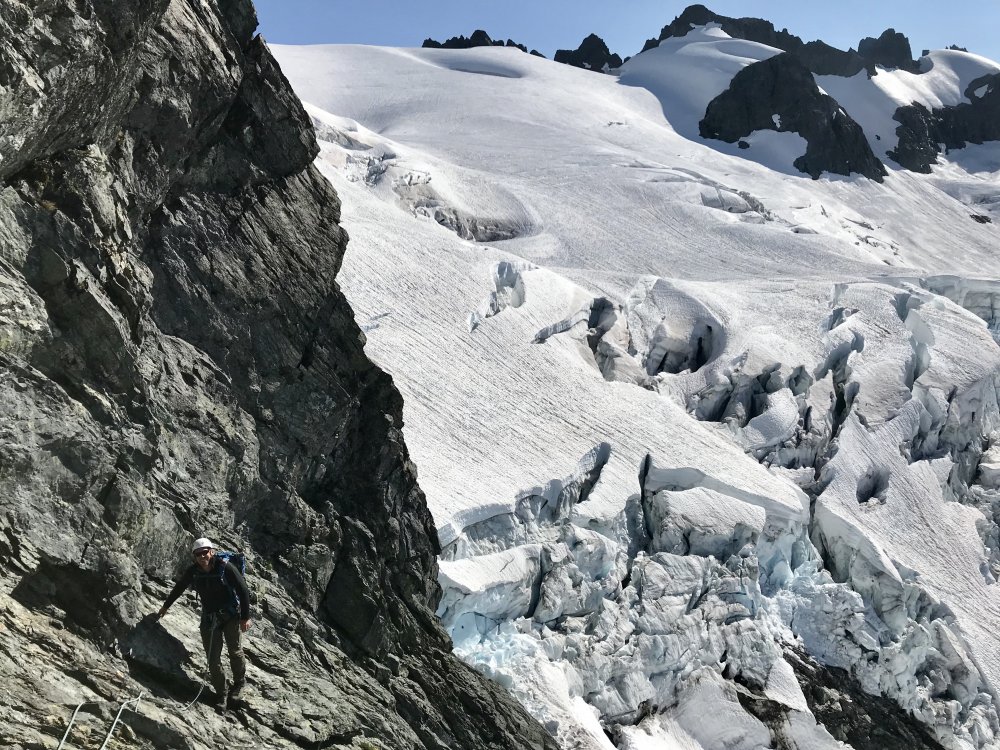
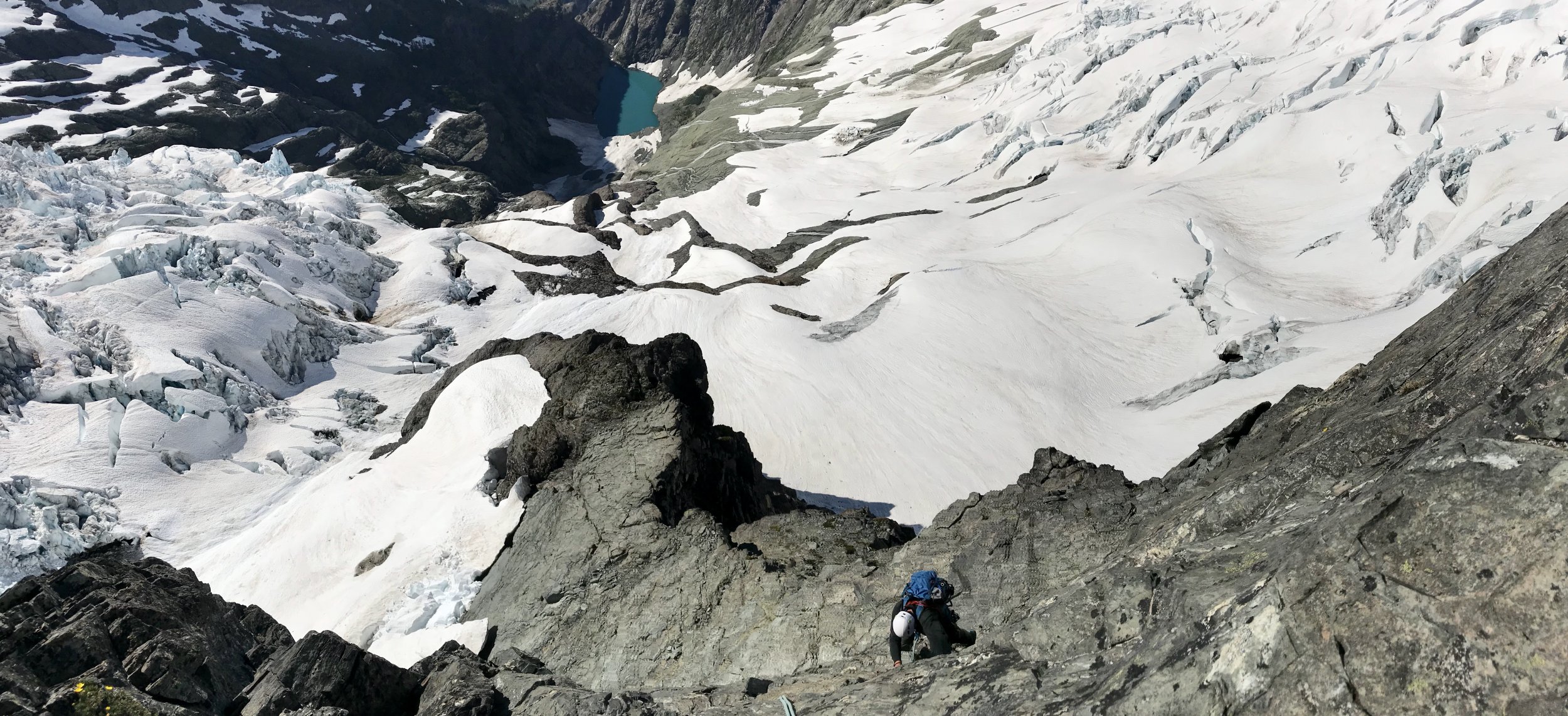
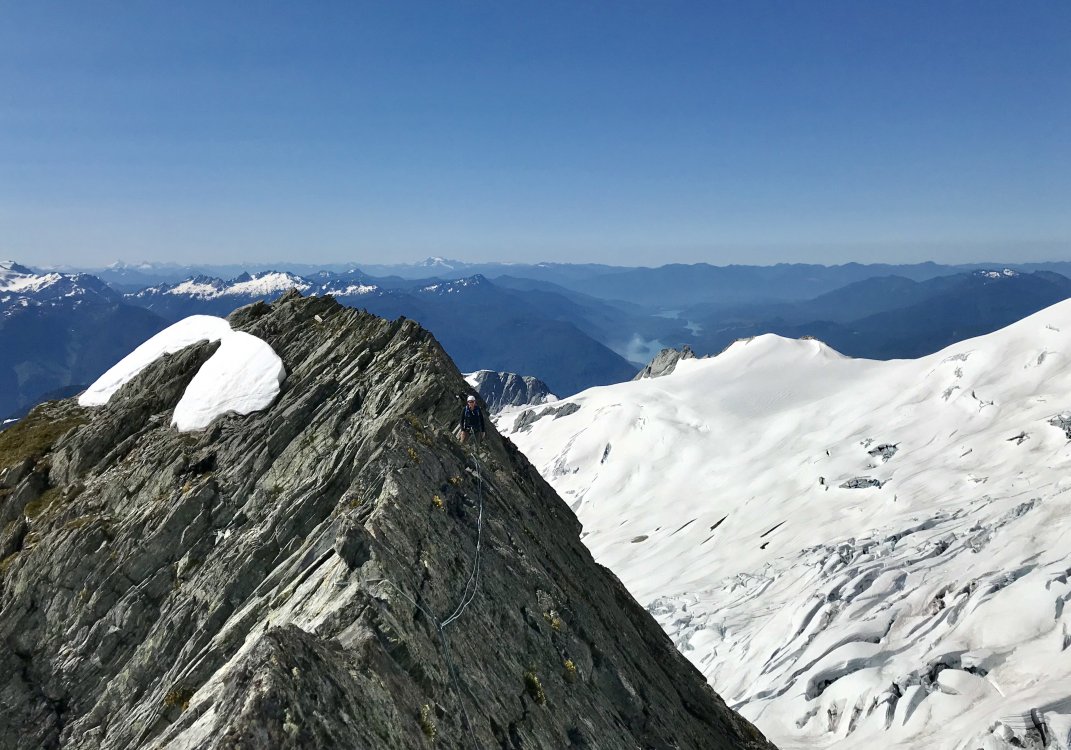


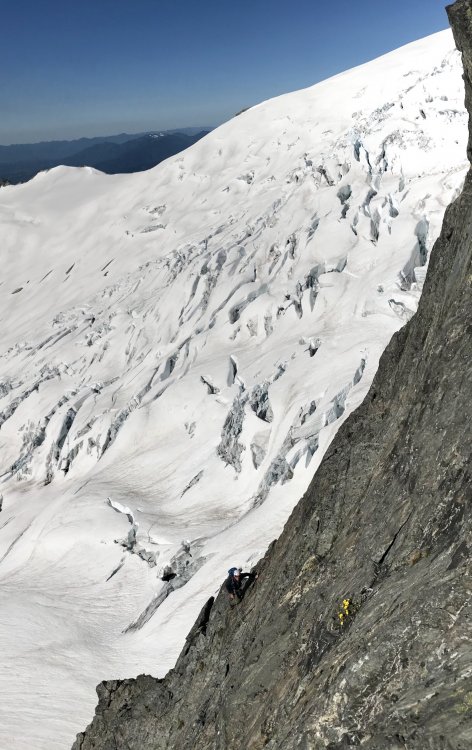
.thumb.jpg.d8d6db40947cc944f6d3d87de772c58e.jpg)
